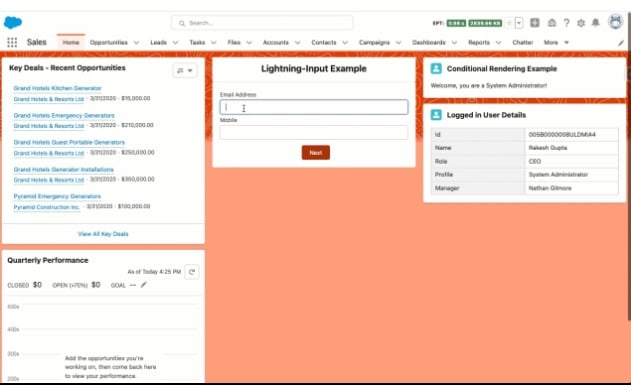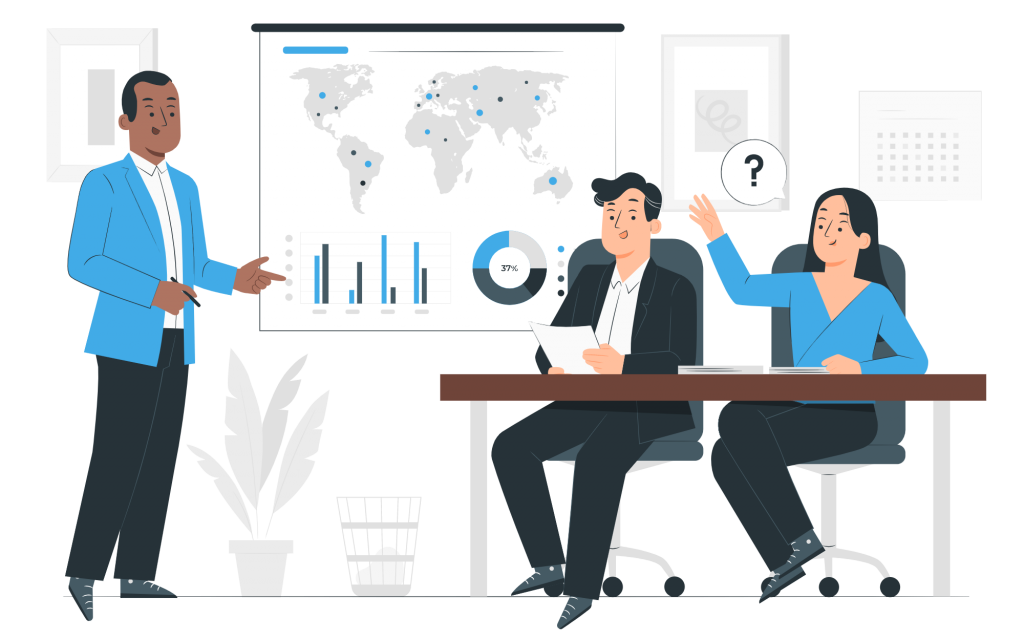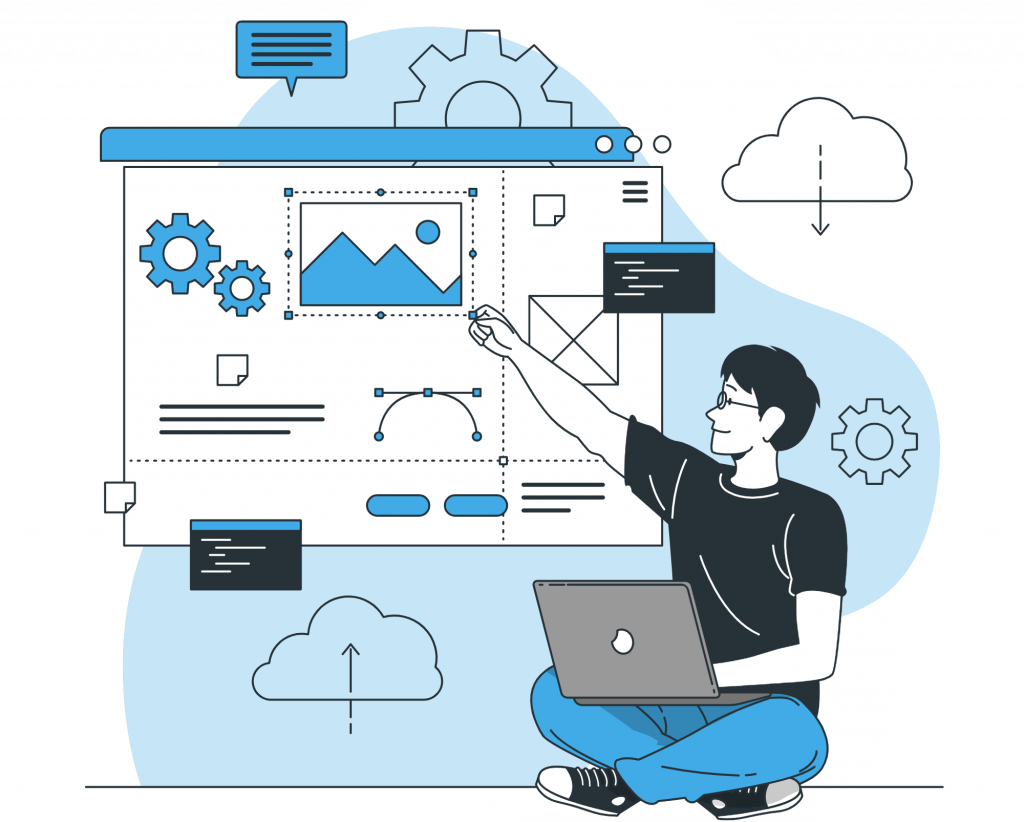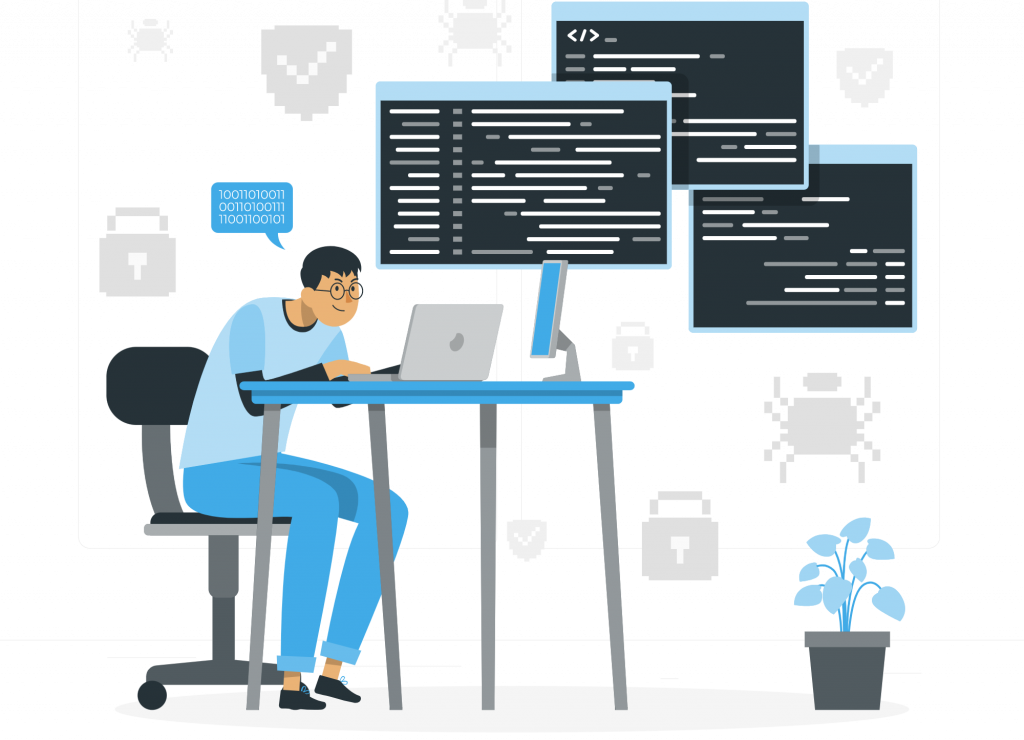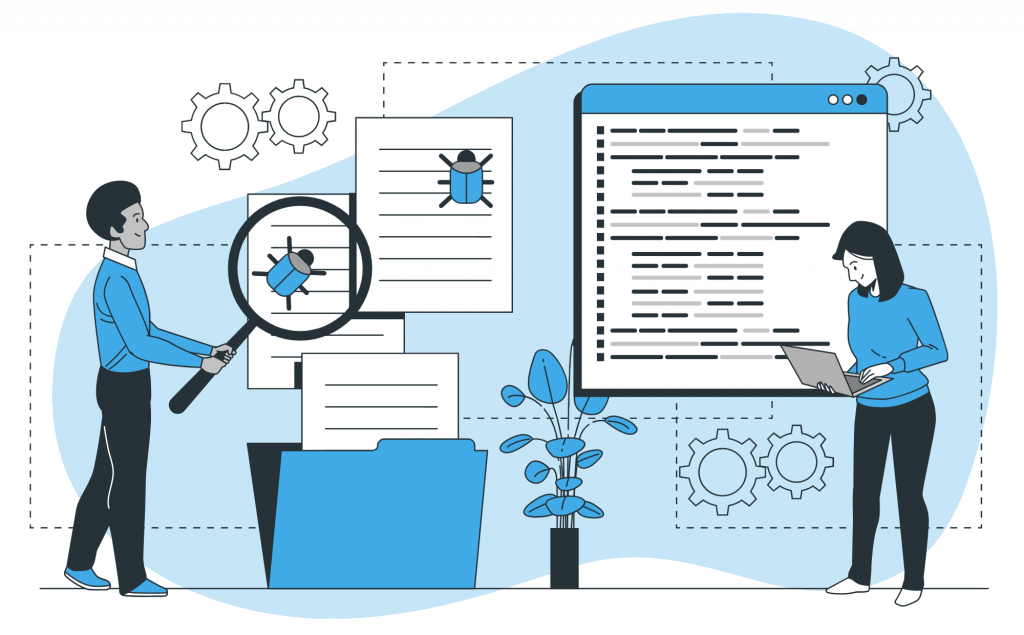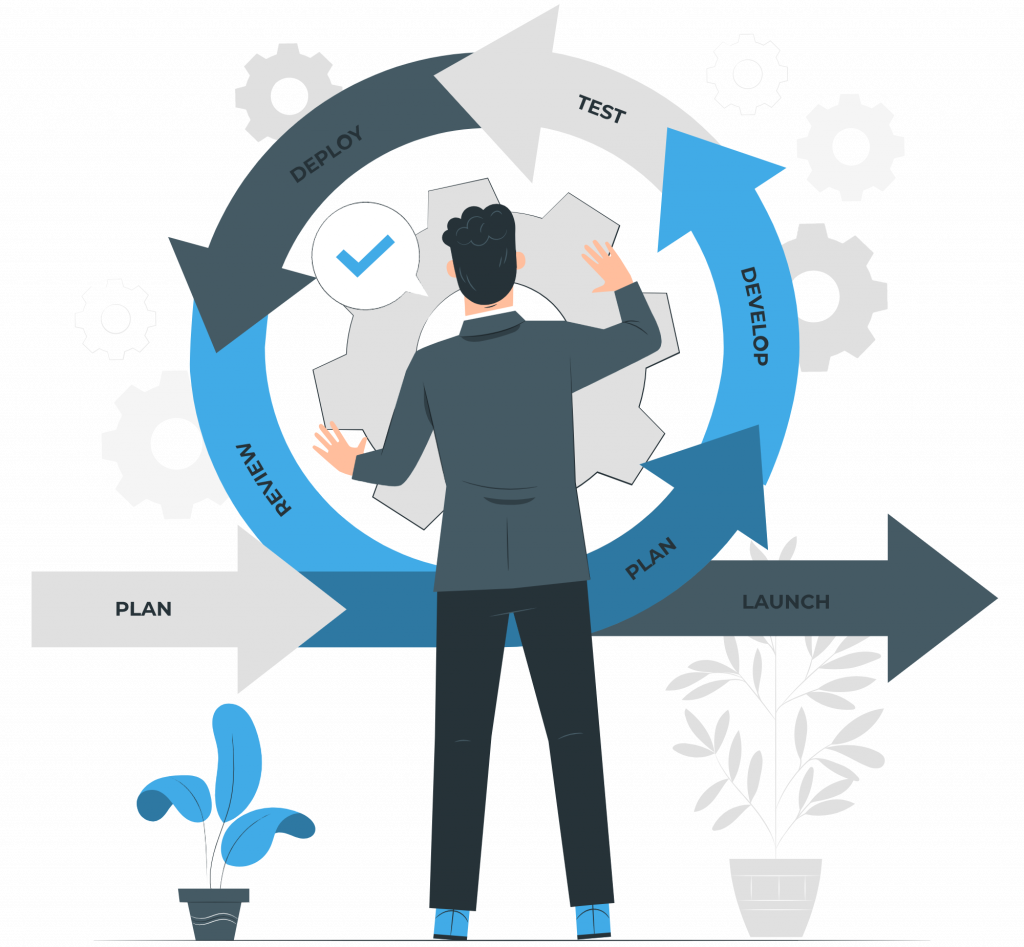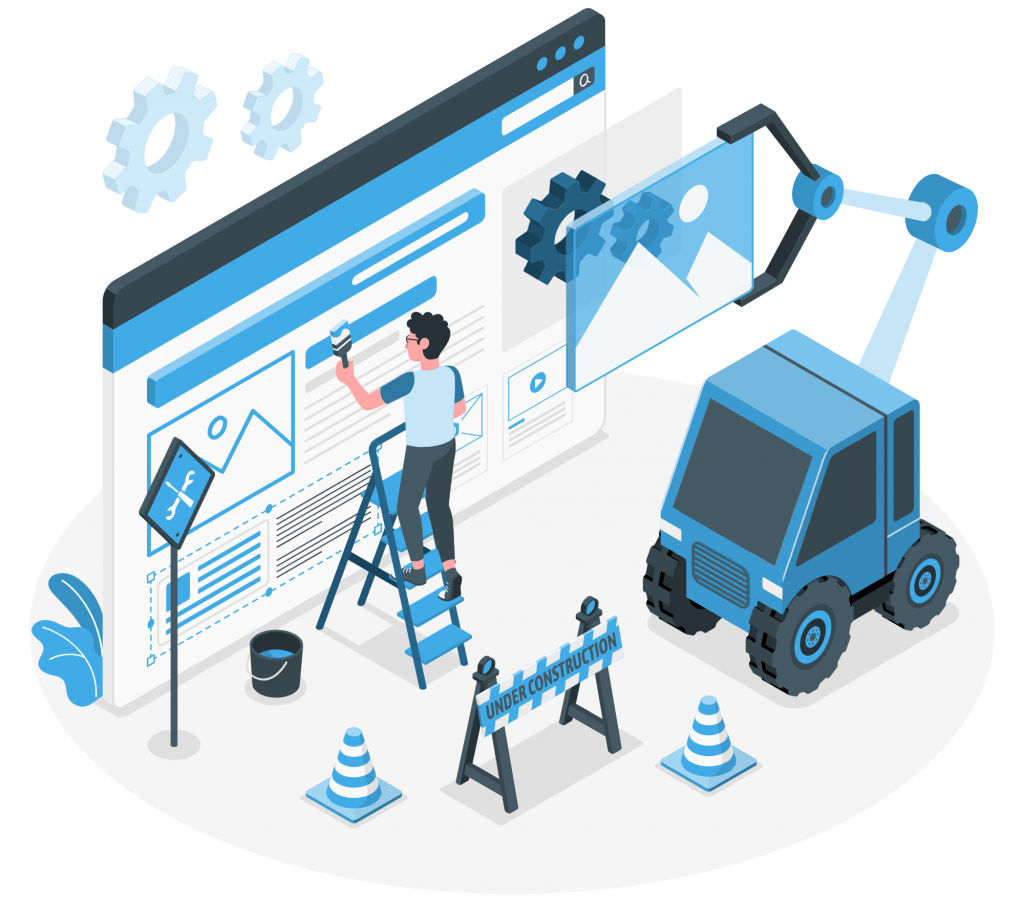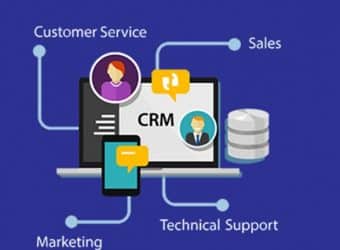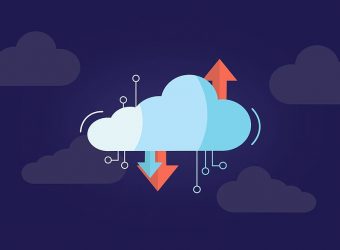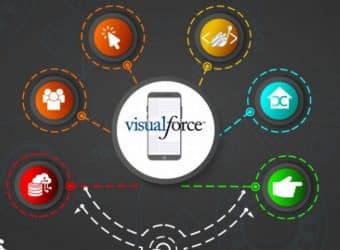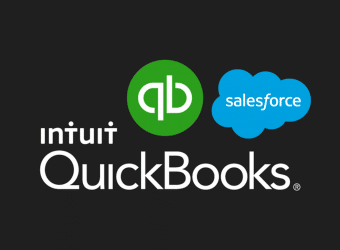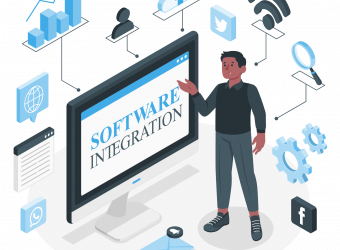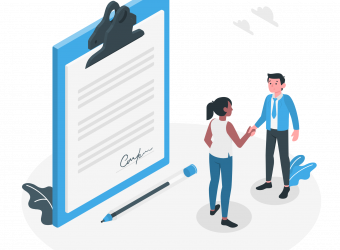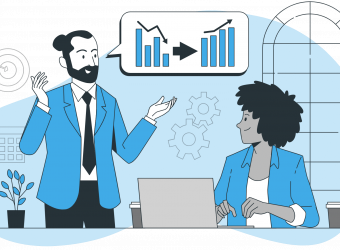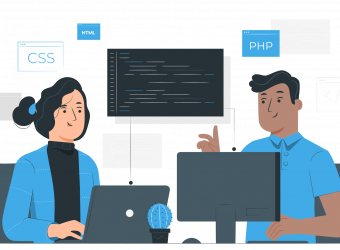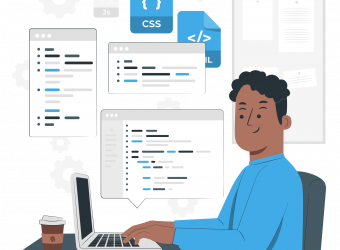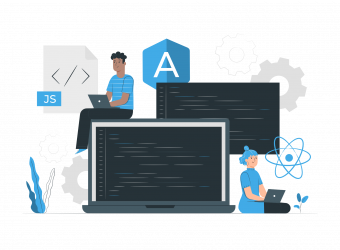Hi, I’m Godwin Mbah
a
Salesforce Developer
Salesforce Sr. Admin
Salesforce Consultant
Business Analyst
As a Certified Salesforce Consultant, Senior Administrator, and Developer, I possess over 6 years of comprehensive experience in full-stack Salesforce configuration, integration, and implementation of Salesforce cloud technologies. With a proven track record of success in enterprise-level environments, I am committed to delivering high-quality Salesforce solutions that drive digital transformation and enhance business performance.

Salesforce Services
Consultation & Implementation
Carry out Business Analysis to understand the current state of your Salesforce deployment and [......] CLICK TO KNOW MORE
Salesforce Development
Everything regarding your project from development, testing and delivery I will handle, while [......] CLICK TO KNOW MORE
Salesforce Integration
Connecting your Salesforce instance with external systems you use with secure APIs and also [......] CLICK TO KNOW MORE
Salesforce Administraton
Management and configuration of your Salesforce instance, build complex reports and dashb [......] CLICK TO KNOW MORE
Support & System Maintenance
Ensure optimal Salesforce performance and longevity with expert support and system maintenance.
Salesforce Training
Do you want training for your Salesforce users? Or if you want to become a Salesforce Developer or Administrator, I will be your instructor.
Salesforce Solutions
Sales Cloud
Sales Cloud
Service Cloud
Service Cloud
Experience Cloud
Experience Cloud
Project Journey Lifecycle
The Project Journey Lifecycle section outlines the various stages of my implementation process. From Discovery to Support & Maintenance, each stage is critical in ensuring project success. By following this lifecycle, I help clients achieve their business goals and objectives by providing a comprehensive, customized solution that meets their specific needs.

BUSINESS DISCOVERY
First, I get to know your business needs and goals.
Then, I analyze and identify opportunities for improvement.
- Define your business objectives and goals for the project.
- Conduct a thorough analysis of your current processes and systems.
- Identify pain points and areas for improvement in your current workflows.
- Determine opportunities for optimization and increased efficiency.
DESIGN & PLANNING
In the Design & Planning stage, I create a comprehensive plan to guide the implementation process and ensure project success.
- Develop a customized implementation strategy tailored to your business needs.
- Create a project plan with timelines, milestones and all key deliverables.
- Define roles and responsibilities for each team member.
- Provide detailed documentation and specifications for the implementation.
PROJECT DEVELOPMENT
In the Development stage, I execute the implementation plan and build the solution based on the project specifications and requirements.
- Implement the solution based on the project specifications.
- Develop and configure customizations and integrations.
- Perform unit and integration testing to ensure quality.
- Collaborate with your team to ensure a smooth rollout.
UNIT & USER ACCEPTANCE TESTING (UAT)
In the Testing (Unit & UAT) stage, I perform thorough testing to ensure that the solution is functioning as expected and meets your business needs.
- Conduct comprehensive unit testing to ensure quality.
- Develop test plans and scenarios for User Acceptance Testing (UAT).
- Collaborate with your team to execute UAT.
- Identify and resolve any issues or bugs.
DEPLOY & LAUNCH
In the Deploy & Launch stage, I implement the solution and ensure a smooth rollout, providing support and training as needed to ensure user adoption.
- Deploy the solution to your production environment.
- Conduct end-to-end testing to ensure seamless integration.
- Provide training and support to ensure user adoption.
- Ensure a smooth transition to the new solution.
CONTINOUS SUPPORT & MAINTENANCE
In the Support & Maintenance stage, I provide ongoing support to ensure the solution remains functional and up-to-date with the latest upgrades and enhancements.
- Provide timely support and issue resolution.
- Monitor and maintain the solution to ensure optimal performance.
- Perform regular updates and upgrades to keep the solution current.
- Continuously evaluate and improve the solution based on feedback.
Schedule An Appointment Today
Free One-To-One Call
View Recent Projects
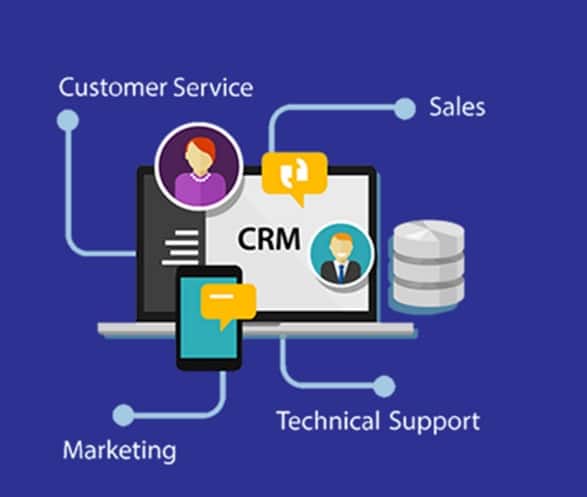
Salesforce CRM Full Implementation Project
- Project Salesforce CRM Implementation
- Client Marcus Hurley
- Country United States
- Date 3 November 2022
This was a project from my client Marcus where he wanted to implement Salesforce CRM for his organization migrating from a legacy CRM. He was very concerned about the security of his organization’s data moving to Salesforce and I was acting as the consultant to give them the benefits, implementation procedure, gaps, how to overcome them, strategies for full adoption of Salesforce, and most importantly Security of his Organization. I broke down the implementation process into 8 phases and the project was completed successfully.
1) What they wanted to achieve using Salesforce
2) The available budget for full implementation
3) Other experts needed to manage the org
4) Plan to create awareness in the org
5) Migration process of data into Salesforce
6) Gradual Rollout procedure of features
7) Employee Training and Adoption
8) Maintainance and Support procedure
Find the link to the Figma representation I used for the presentation with my client.
Figma representation link: https://www.figma.com/file/YW6PSCgP6YOXT7Go2rROQb/SALESFORCE-IMPLEMENTATION?node-id=0%3A1&t=uxUmrdhDTOlUp9Cc-1

Asynchronous Apex (Batch) Project
- Project Asynchronous Apex (Batch) Project
- Client Joshua Grills
- Country Australia
- Date 23 October 2022
The Business scenario here was to create a business logic to automate the transfer and update of more than 2k account records of an employee leaving the organization to a new employee joining the organization and notifying the new employee via email about the new records updated to him.
I used Batch Apex which is an Asynchronous Apex type to solve this requirement by implementing Database.Batchable class and Database.Stateful class to count the total number of records processed.
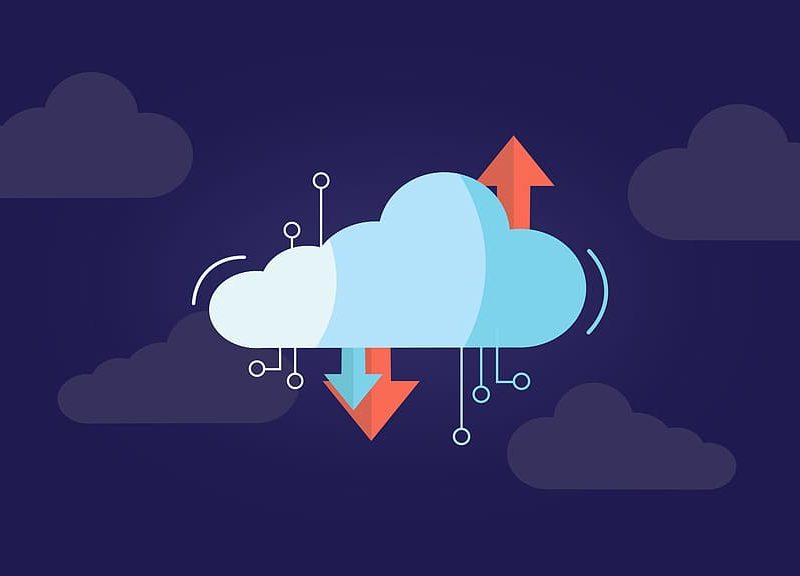
Data Migration From Dynamics 365 To Salesforce Project
- Project Data Migration From Dynamics 365 To Salesforce
- Client Sean Richardson
- Country Australia
- Date 19 October 2022
This was a project from one of my clients named Sean from Australia and the requirement was to migrate their existing data containing about 300k records from Microsoft Dynamics 365 CRM to Salesforce CRM. I was also required to create a data model in Salesforce to match their existing business use case in Dynamics 365. I provided a guided approach on how to go about this migration step-by-step and the project was a great success.
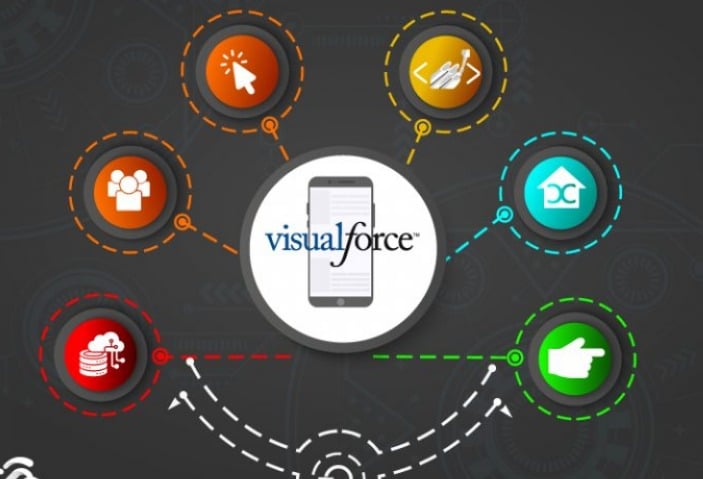
Multiple Account In One Save With Visualforce Project
- Project Visualforce Create Multiple Account At Once Project
- Client Melisa Myles
- Country United Kingdom
- Date 13 September 2022
This requirement from Melisa my client was to create a Visualforce page that will allow users to be able to create multiple accounts and insert them into their salesforce database in one save. I will be walking you through all the steps and codes that I used to make this project a reality.
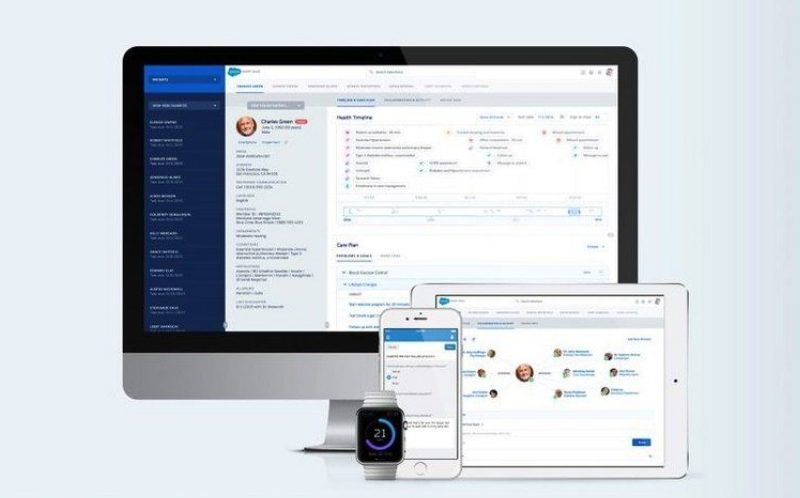
Restaurant Loyalty Salesforce Management App
- Project Restaurant Loyalty Management Salesforce App
- Client Grayson Leo
- Country Canada
- Date 10th October 2022
This was a requirement from Grayson manager of a major restaurant in Canada that required me to create a Restaurant Loyalty Management App to help them track all customers and provide loyalty to the most spending customers and reward them with incentives to make them come back and spend more.
I was able to use declarative and programmatic tools provided by Salesforce and integrating their Salesforce instance with the existing POS system they used to track and manage the entire restaurant which was another successful project I delivered.
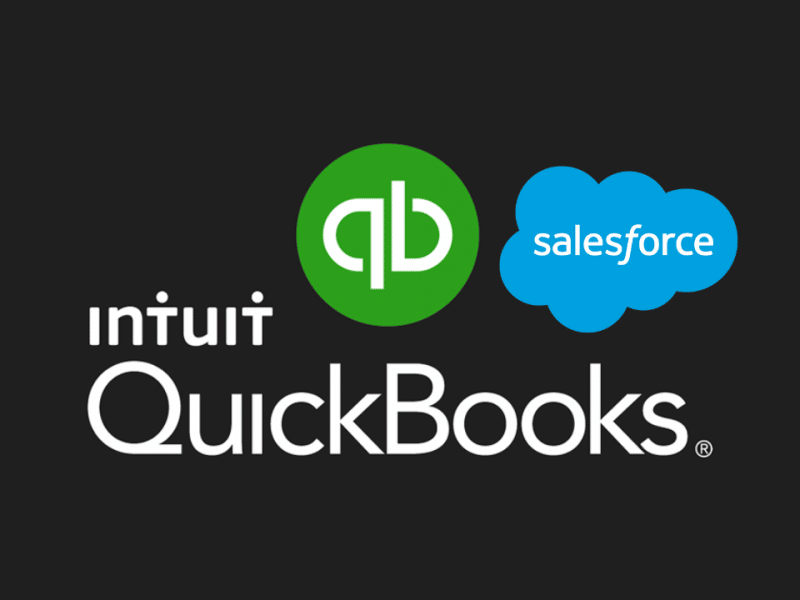
Integration project with Quickbooks
- Project Integration project with Quickbooks
- Client Stella Moore
- Country United States
- Date 5 August 2022
Client Reviews
Let's Connect Today
Godwin Mbah
Salesforce Consultant | Developer | AdminI am open to accepting contract and freelance work, including both small, short-term projects and larger, long-term engagements.
Phone: +971547684659 Email: mbahgodwin24@gmail.com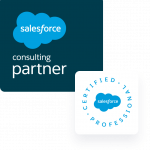
My Blog

Future-Proof Your Career: The Growing Demand for Salesforce Skills
Introduction
In an ever-evolving job market, having the right skills is crucial for career success. One of the most sought-after skill sets today is proficiency in Salesforce, a leading Customer Relationship Management (CRM) platform. This article delves into the increasing demand for Salesforce skills, future predictions for CRM technology, the importance of continuous learning, and why now is the best time to invest in Salesforce training.
Analysis of Job Market Data Showing the Increasing Demand for Salesforce Skills
- High Demand Across Industries
- Statistics: According to a recent survey by Burning Glass Technologies, Salesforce-related job postings have grown significantly, reflecting high demand across various industries.
- Diverse Applications: Salesforce skills are in demand in sectors such as technology, finance, healthcare, retail, and manufacturing.
- Lucrative Career Opportunities
- Salary Insights: Job roles requiring Salesforce expertise often come with competitive salaries. For instance, Salesforce Administrators and Developers can expect lucrative compensation packages.
- Career Growth: Salesforce certifications can lead to rapid career advancement and opportunities to transition into higher-level roles.
- Global Demand
- International Opportunities: The demand for Salesforce professionals is not confined to any one region. Companies around the world are seeking skilled Salesforce experts, offering opportunities for global career growth.

Predictions for the Future of Salesforce and CRM Technology
- AI and Automation Integration
- Salesforce Einstein: The integration of AI tools like Salesforce Einstein is set to revolutionize CRM by providing predictive analytics, intelligent automation, and personalized customer experiences.
- Future Trends: Expect continuous advancements in AI and machine learning within Salesforce, making CRM solutions smarter and more efficient.
- Enhanced Customer Experience
- Personalization: Future developments will focus on enhancing customer experiences through greater personalization and seamless interactions across multiple channels.
- Customer 360: Salesforce’s Customer 360 will continue to evolve, offering a unified view of customer data to improve service and engagement.
- Increased Adoption of Cloud-Based Solutions
- Cloud Dominance: As more businesses move to cloud-based solutions, Salesforce’s role as a leading cloud CRM platform will expand, driving further demand for skilled professionals.
- Scalability and Flexibility: The scalability and flexibility of Salesforce will attract more small and medium-sized businesses, broadening the market for Salesforce experts.

The Role of Continuous Learning and Staying Updated with Salesforce Developments
- Ongoing Training and Certification
- Importance: Continuous learning is essential to stay relevant in the Salesforce ecosystem. Regularly updating your skills through training and certification ensures you keep pace with platform advancements.
- Resources: Utilize Salesforce Trailhead, the free online learning platform, to stay updated with new features and best practices.
- Community Engagement
- Networking: Engage with the Salesforce community through user groups, forums, and events to exchange knowledge and stay informed about the latest developments.
- Mentorship: Seek mentorship from experienced Salesforce professionals to gain insights and guidance on navigating your career path.
- Staying Ahead of the Curve
- Proactive Learning: Be proactive in learning about emerging trends and technologies within the Salesforce ecosystem. This can give you a competitive edge and open up new career opportunities.
- Certifications: Regularly pursue new certifications to validate your skills and enhance your professional profile.

Encouragement to Invest in Salesforce Training Now to Secure Future Career Prospects
- Timely Investment
- Career Security: Investing in Salesforce training now is a strategic move to future-proof your career. With the increasing demand for Salesforce skills, early adoption can secure long-term career prospects.
- High ROI: The return on investment for Salesforce training is substantial, given the lucrative job opportunities and career growth potential.
- Accessible Learning Resources
- Affordable Training: Numerous affordable and accessible resources are available for Salesforce training, from online courses to community-led workshops.
- Trailhead: Salesforce Trailhead offers a wide range of free modules and trails tailored to different skill levels, making it easy to start your learning journey.
- Supportive Community
- Community Support: The Salesforce community is known for its supportiveness and inclusivity, providing a nurturing environment for learners at all stages.
- Networking Opportunities: Engaging with the community can lead to valuable networking opportunities and mentorship connections that can accelerate your career growth.

Conclusion
The demand for Salesforce skills is on a steady rise, driven by the platform’s expanding capabilities and widespread adoption across industries. By investing in Salesforce training now, you can future-proof your career and position yourself for success in a dynamic job market. Continuous learning, community engagement, and staying updated with the latest developments are key to thriving in the Salesforce ecosystem. Start your journey today and secure a prosperous career in Salesforce.
Explore our Salesforce CRM training courses to kickstart your journey and join a community of professionals committed to continuous learning and career advancement.

Salesforce for Small Businesses: A Game Changer for Growth and Efficiency
Introduction
Small businesses need robust tools to streamline operations, manage customer relationships, and drive growth. Salesforce, a leading Customer Relationship Management (CRM) platform, offers tailored solutions that cater to the unique needs of small businesses. This article explores how Salesforce can be a game changer for small businesses by enhancing growth and efficiency, supported by case studies and practical tips for implementation.
How Salesforce Caters to the Needs of Small Businesses
- Scalability and Flexibility
- Customizable Solutions: Salesforce offers customizable solutions that can be scaled to match the growth of a small business.
- Adaptability: Businesses can start with basic features and add more functionalities as their needs evolve.
- User-Friendly Interface
- Ease of Use: The intuitive interface makes it easy for small business owners and their teams to learn and use Salesforce efficiently.
- Minimal Training Required: Quick onboarding and minimal training time help businesses get up and running swiftly.
- Cost-Effective Options
- Affordable Plans: Salesforce provides affordable pricing plans designed specifically for small businesses, ensuring they get high value for their investment.
- Flexible Pricing: Options to pay per user or module, allowing businesses to manage costs effectively.

Benefits of Implementing Salesforce for Small Business Growth
- Improved Customer Relationship Management
- Centralized Data: Salesforce consolidates customer data in one place, making it easy to access and manage.
- Enhanced Customer Insights: Businesses can gain valuable insights into customer behavior and preferences, leading to better service and personalized experiences.
- Streamlined Sales Processes
- Sales Automation: Automate repetitive tasks such as follow-ups and data entry, freeing up time for sales teams to focus on closing deals.
- Sales Forecasting: Accurate sales forecasting helps businesses make informed decisions and plan for future growth.
- Enhanced Marketing Efforts
- Targeted Campaigns: Use Salesforce to segment customer data and run targeted marketing campaigns.
- Marketing Automation: Automate marketing activities like email campaigns and social media posts, increasing efficiency and reach.
- Better Collaboration and Communication
- Team Collaboration: Salesforce facilitates better collaboration among team members with shared access to customer data and project updates.
- Communication Tools: Integrated communication tools help teams stay connected and aligned on goals.

Case Studies of Small Businesses That Have Succeeded with Salesforce
- ABC Boutique
- Background: ABC Boutique, a small retail business, struggled with managing customer relationships and sales processes manually.
- Solution: Implemented Salesforce to automate sales tasks, manage customer data, and run targeted marketing campaigns.
- Results: Increased sales by 30% within six months and improved customer retention by 20%.
- XYZ Consulting
- Background: XYZ Consulting, a small consultancy firm, needed a better way to manage client projects and communications.
- Solution: Adopted Salesforce to track client interactions, manage projects, and streamline communication.
- Results: Enhanced project delivery efficiency by 40% and boosted client satisfaction.
- 123 Real Estate
- Background: 123 Real Estate, a small real estate agency, faced challenges in managing property listings and client inquiries.
- Solution: Used Salesforce to integrate property management with client relationship management.
- Results: Reduced response time to client inquiries by 50% and increased property sales by 25%.

Practical Tips for Small Business Owners on Getting Started with Salesforce
- Define Your Goals
- Identify Needs: Clearly define your business goals and identify the specific needs that Salesforce can address.
- Set Objectives: Set measurable objectives to track the success of your Salesforce implementation.
- Start Small
- Begin with Basics: Start with core functionalities that address your immediate needs and gradually expand to more advanced features.
- Pilot Programs: Run pilot programs to test and refine your Salesforce setup before full-scale implementation.
- Leverage Training and Support
- Trailhead: Utilize Salesforce Trailhead, the free online learning platform, to train yourself and your team.
- Salesforce Partners: Consider working with Salesforce consulting partners for expert guidance and support.
- Engage with the Community
- User Groups: Join Salesforce user groups and forums to connect with other small business owners and learn from their experiences.
- Events and Webinars: Participate in Salesforce events and webinars to stay updated on best practices and new features.
- Monitor and Optimize
- Track Progress: Regularly monitor your Salesforce usage and performance against your set objectives.
- Continuous Improvement: Continuously optimize your Salesforce setup based on feedback and evolving business needs.

Conclusion
Salesforce offers small businesses a powerful toolset to manage customer relationships, streamline operations, and drive growth. By understanding how Salesforce caters to their needs, recognizing the benefits of its implementation, learning from successful case studies, and following practical tips for getting started, small business owners can harness Salesforce to transform their business and achieve greater efficiency and success.
Explore our Salesforce CRM training courses to learn how Salesforce can revolutionize your small business and join a community of professionals dedicated to growth and success.

5 Mistakes People Make When Starting a Career in Salesforce and How to Avoid Them
Introduction
Starting a career in Salesforce can be an exciting and rewarding journey. However, like any career path, it comes with its own set of challenges and potential pitfalls. Here are five common mistakes people make when starting their Salesforce career and tips on how to avoid them:
1. Not Setting Clear Career Goals
Mistake: Many newcomers to Salesforce dive in without a clear understanding of what specific role they want to pursue. Salesforce offers a variety of career paths, including administrator, developer, consultant, marketer, and analyst. Without clear goals, it’s easy to get lost in the vast array of learning materials and certifications.
How to Avoid It:
- Research Roles: Take time to research the different Salesforce roles. Understand the responsibilities, required skills, and career progression for each.
- Set Specific Goals: Define your career objectives early. Decide whether you want to become an administrator, developer, consultant, or another role, and tailor your learning path accordingly.
- Create a Roadmap: Develop a clear roadmap with milestones and timelines to guide your learning and certification journey.

2. Skipping the Basics
Mistake: Jumping into advanced topics without mastering the basics can lead to confusion and frustration. Salesforce has a steep learning curve, and understanding the fundamentals is crucial for long-term success.
How to Avoid It:
- Start with Trailhead: Utilize Salesforce’s free learning platform, Trailhead. Begin with beginner modules to build a solid foundation in Salesforce concepts and functionality.
- Follow a Structured Learning Path: Stick to structured learning paths that gradually increase in complexity. This approach ensures you fully understand each topic before moving on.
- Practice Regularly: Apply what you learn through hands-on practice. Use Salesforce’s free Developer Edition to experiment with different features and tools.

3. Neglecting Certifications
Mistake: Some individuals underestimate the importance of Salesforce certifications. Certifications validate your skills and knowledge, making you more attractive to employers and opening up more job opportunities.
How to Avoid It:
- Prioritize Certifications: Identify which certifications are most relevant to your career goals. For most beginners, the Salesforce Certified Administrator certification is a good starting point.
- Prepare Thoroughly: Use study guides, practice exams, and online courses to prepare for certification exams. Join study groups or forums for additional support.
- Stay Updated: Salesforce regularly updates its platform, so keep your certifications current by taking maintenance exams and staying informed about new features and best practices.

4. Ignoring the Community
Mistake: Many new Salesforce professionals underestimate the value of the Salesforce community. Networking and engaging with others in the field can provide support, insights, and opportunities that you might not find on your own.
How to Avoid It:
- Join Online Communities: Participate in online forums like the Salesforce Trailblazer Community, Reddit, or LinkedIn groups. These platforms are excellent for asking questions, sharing knowledge, and staying updated on industry trends.
- Attend Events: Go to Salesforce events such as Dreamforce, World Tours, or local user group meetings. These events offer networking opportunities and a chance to learn from experts.
- Seek Mentorship: Connect with more experienced Salesforce professionals who can offer guidance and mentorship as you navigate your career path.
5. Not Gaining Practical Experience
Mistake: Focusing solely on theoretical knowledge without practical application can leave you unprepared for real-world challenges. Employers value hands-on experience and practical problem-solving skills.
How to Avoid It:
- Volunteer: Look for volunteer opportunities with non-profit organizations that use Salesforce. This hands-on experience is invaluable and can help build your resume.
- Internships and Freelance Work: Pursue internships or freelance projects to gain practical experience. Even short-term projects can provide significant learning opportunities.
- Build Your Own Projects: Create your own Salesforce projects to solve hypothetical business problems. This practice helps reinforce your learning and demonstrates your capabilities to potential employers.

Conclusion
Starting a career in Salesforce is a journey filled with opportunities, but it’s essential to navigate it wisely. By setting clear goals, mastering the basics, prioritizing certifications, engaging with the community, and gaining practical experience, you can avoid common mistakes and set yourself up for a successful and fulfilling career in Salesforce. Remember, continuous learning and adaptation are key in this dynamic and ever-evolving field.

How Can Salesforce Benefit Beginners in Tech Careers?
Introduction
Breaking into the tech industry can be daunting, especially for beginners. However, Salesforce offers a unique entry point that combines accessibility, high demand, and a wealth of resources. This article explores how Salesforce can benefit beginners in tech careers by providing an overview of the platform, its key advantages, and actionable steps to get started.
Understanding Salesforce
- What is Salesforce?
- Overview: Salesforce is a cloud-based Customer Relationship Management (CRM) platform that helps businesses manage their customer interactions, sales processes, and marketing efforts.
- Core Components: Sales Cloud, Service Cloud, Marketing Cloud, and more, each designed to address specific business needs.
- Why is Salesforce Important?
- Market Leader: Salesforce is the leading CRM platform globally, used by companies of all sizes across various industries.
- Job Opportunities: The demand for Salesforce professionals continues to grow, offering numerous career opportunities for beginners.

Key Advantages of Starting a Tech Career with Salesforce
- High Demand for Salesforce Skills
- Job Market: There is a significant demand for Salesforce professionals, including administrators, developers, consultants, and marketers.
- Job Security: With Salesforce’s widespread adoption, professionals with Salesforce skills are highly sought after, ensuring job security and competitive salaries.
- Accessible Learning Resources
- Trailhead: Salesforce offers Trailhead, a free, gamified learning platform that makes it easy for beginners to learn Salesforce concepts and earn certifications.
- Community Support: The Salesforce community is known for its inclusivity and support, providing forums, user groups, and events to help beginners.
- Diverse Career Paths
- Variety of Roles: Salesforce offers various career paths, from technical roles like developers and architects to non-technical roles like administrators and business analysts.
- Career Progression: Salesforce certifications and continuous learning opportunities allow professionals to advance and specialize in their careers.
- Transferable Skills
- Business Acumen: Learning Salesforce also provides valuable insights into business processes and customer relationship management.
- Technical Skills: Salesforce skills are transferable and can be applied to other tech platforms and roles.

Actionable Steps for Beginners to Start with Salesforce
- Explore Trailhead
- Create an Account: Sign up for a free Trailhead account to access a wide range of learning modules and trails.
- Begin with Basics: Start with beginner trails like “Salesforce Basics” and “Admin Beginner” to build a strong foundation.
- Earn Certifications
- Salesforce Administrator Certification: Begin with the Salesforce Administrator certification to validate your skills and knowledge.
- Continue Learning: Pursue additional certifications relevant to your desired career path, such as Salesforce Developer or Salesforce Marketing Cloud Specialist.
- Join the Salesforce Community
- User Groups: Join local or virtual Salesforce user groups to connect with other learners and professionals.
- Online Forums: Participate in online forums like the Salesforce Community and Trailblazer Community to seek advice and share knowledge.
- Gain Practical Experience
- Volunteer Projects: Volunteer for non-profit organizations to gain hands-on experience with Salesforce.
- Internships and Freelance: Look for internships or freelance opportunities to apply your skills in real-world scenarios.

Conclusion
For beginners in tech, Salesforce offers a promising career path filled with opportunities, resources, and community support. By leveraging the high demand for Salesforce skills, accessible learning platforms like Trailhead, and the diverse career paths available, aspiring tech professionals can build a successful and fulfilling career with Salesforce. Whether you’re starting from scratch or looking to pivot into tech, now is the perfect time to explore the world of Salesforce and unlock your potential.
Explore our Salesforce CRM training courses to kickstart your tech career and join a community of learners and professionals dedicated to growth and success.

From Zero to Hero: How to Kickstart Your Salesforce Career with No Experience
Introduction
Entering the tech industry can seem daunting, especially if you have no prior experience. However, Salesforce offers an accessible and rewarding career path for individuals from all backgrounds. This article will guide you through the steps to kickstart your Salesforce career, even if you’re starting from scratch.
Understanding the Salesforce Ecosystem
Before diving into the steps, it’s essential to understand what Salesforce is and why it’s such a valuable skill in today’s job market.
- What is Salesforce?
- Salesforce is a cloud-based Customer Relationship Management (CRM) platform that helps businesses manage customer relationships, sales, service, and marketing activities.
- It offers various tools and services, including Sales Cloud, Service Cloud, Marketing Cloud, and more, to support different business functions.
- Why Learn Salesforce?
- High Demand: With over 150,000 companies using Salesforce, there is a growing demand for skilled professionals.
- Versatility: Salesforce roles are diverse, including administrators, developers, consultants, and analysts.
- Lucrative Careers: Salesforce professionals enjoy competitive salaries and excellent career growth opportunities.

Step-by-Step Guide to Kickstarting Your Salesforce Career
- Set Clear Goals
- Identify your career objectives and what you want to achieve with Salesforce. Do you want to become an administrator, a developer, or a consultant? Setting clear goals will help you stay focused and motivated.
- Get Familiar with Trailhead
- What is Trailhead?
- Trailhead is Salesforce’s free, interactive learning platform that offers a gamified learning experience.
- How to Use Trailhead
- Create an account on Trailhead and start with beginner modules to build foundational knowledge.
- Follow specific trails that align with your career goals, such as “Admin Beginner” or “Developer Beginner.”
- What is Trailhead?
- Enroll in Online Courses
- While Trailhead is an excellent starting point, enrolling in structured online courses can provide more in-depth knowledge and practical skills.
- Pathway to Salesforce offers a range of courses tailored to different career paths, from beginner to advanced levels.
- Join the Salesforce Community
- Why Join the Community?
- The Salesforce Community is a vibrant network of professionals who share knowledge, offer support, and provide networking opportunities.
- How to Get Involved
- Participate in online forums, join local user groups, and attend Salesforce events like Dreamforce and World Tours.
- Why Join the Community?
- Gain Hands-On Experience
- Practical experience is crucial. Use Salesforce’s free Developer Edition to practice building apps, automating processes, and exploring different features.
- Volunteer for non-profit organizations that use Salesforce to gain real-world experience and build your resume.

- Earn Salesforce Certifications
- Salesforce certifications are highly valued in the industry and demonstrate your expertise.
- Start with the Salesforce Certified Administrator certification and then pursue additional certifications relevant to your career goals.
- Build Your Personal Brand
- Create a LinkedIn profile and showcase your Salesforce skills, Trailhead badges, and certifications.
- Write blog posts or create content to share your learning journey and insights with the community.
Inspirational Stories of Successful Career Transitions
- Sarah’s Journey
- Background: Sarah was a school teacher who wanted a career change.
- Steps Taken: She started with Trailhead, completed our Pathway to Salesforce courses, joined the Salesforce Community, and earned her Salesforce Administrator certification.
- Outcome: Sarah is now a Salesforce Administrator at a non-profit organization, using her skills to improve their CRM processes.
- Mike’s Transformation
- Background: Mike was working in retail and had no tech background.
- Steps Taken: He dedicated six months to learning Salesforce through Trailhead and online courses, gained hands-on experience with the Developer Edition, and volunteered at a local charity.
- Outcome: Mike is now a Salesforce Developer at a mid-sized tech company, enjoying a significant salary increase and career growth.
- Lily’s Success
- Background: Lily was an administrative assistant looking for a more dynamic career.
- Steps Taken: She utilized Trailhead to learn Salesforce, participated in user group meetings, and earned multiple certifications, including Advanced Administrator and Sales Cloud Consultant.
- Outcome: Lily now works as a Salesforce Consultant, helping businesses optimize their CRM systems.

Conclusion
Starting a Salesforce career with no experience is entirely possible with the right approach and resources. By setting clear goals, utilizing Trailhead, enrolling in courses, engaging with the community, gaining hands-on experience, and earning certifications, you can transform yourself from a novice to a Salesforce expert. The success stories of individuals like Sarah, Mike, and Lily demonstrate that anyone can achieve a rewarding Salesforce career with dedication and the right tools.

Leveraging AI for Predictive Analytics in Salesforce
Predictive analytics has become a cornerstone for making informed decisions and staying ahead of the competition. By leveraging artificial intelligence (AI) within Salesforce, businesses can harness the power of predictive analytics to forecast trends, optimize operations, and drive strategic initiatives. This article delves into the integration of AI for predictive analytics in Salesforce, offering practical applications and actionable steps for implementation.
The Power of Predictive Analytics
Predictive analytics uses historical data, statistical algorithms, and machine learning techniques to predict future outcomes. Key benefits include:
- Enhanced Decision-Making: Providing data-driven insights for strategic decisions.
- Improved Forecast Accuracy: Delivering precise sales, revenue, and demand forecasts.
- Optimized Resource Allocation: Ensuring resources are deployed where they’re needed most.
- Increased Customer Retention: Anticipating customer needs and behaviors to improve engagement and loyalty.

Integrating AI-Powered Predictive Analytics with Salesforce
Salesforce offers robust AI-powered tools through its Einstein platform, which can transform predictive analytics into actionable insights. Key features include:
1. Predictive Lead Scoring
Einstein AI can analyze historical data to score leads based on their likelihood to convert. This enables sales teams to prioritize high-value leads and focus their efforts more effectively.
2. Sales Forecasting
AI-driven sales forecasting provides accurate predictions by analyzing past sales data and market trends. This helps businesses plan more effectively and make informed decisions.
3. Customer Churn Prediction
Predictive analytics can identify patterns that indicate potential customer churn. By recognizing at-risk customers, businesses can implement retention strategies to prevent churn.
4. Demand Forecasting
AI can analyze market trends, seasonality, and historical sales data to forecast product demand. This ensures optimal inventory levels and efficient supply chain management.
5. Personalized Marketing
Predictive analytics can determine the best times and channels to engage with customers, allowing for highly targeted and personalized marketing campaigns.

Practical Steps to Implement Predictive Analytics with AI in Salesforce
To effectively integrate AI-powered predictive analytics with Salesforce, follow these steps:
Step 1: Define Objectives and Key Metrics
Begin by defining the specific objectives you aim to achieve with predictive analytics, such as improving sales forecasting accuracy or reducing customer churn. Identify the key metrics that will help measure success.
Step 2: Enable Salesforce Einstein
Salesforce Einstein offers various AI-powered predictive analytics features. Enable Einstein Analytics and set up custom dashboards to track your key metrics and visualize insights.
Step 3: Integrate Data Sources
Ensure all relevant data sources, including CRM data, sales records, and market data, are integrated into your Salesforce environment. This provides a comprehensive dataset for accurate predictions.
Step 4: Train Your Team
Provide training to your team on how to use the predictive analytics tools in Salesforce. Ensure they understand how to interpret the data and apply the insights to their respective roles.
Step 5: Monitor and Refine
Regularly monitor the performance of your predictive analytics models. Use feedback and performance metrics to refine your models and strategies, ensuring continuous improvement.
Real-World Applications of Predictive Analytics in Salesforce
1. Boosted Sales Performance
A technology company used Einstein Predictive Lead Scoring to identify and prioritize high-potential leads. This resulted in a 15% increase in conversion rates and a 20% boost in sales revenue.
2. Improved Inventory Management
A retail chain implemented AI-driven demand forecasting to optimize their inventory levels. By accurately predicting demand, they reduced stockouts by 30% and minimized excess inventory.
3. Enhanced Customer Retention
A subscription-based service provider used predictive analytics to identify customers at risk of churning. By implementing targeted retention campaigns, they reduced their churn rate by 25%.

Best Practices for Implementing Predictive Analytics with AI in Salesforce
To maximize the benefits of integrating predictive analytics with Salesforce, consider these best practices:
- Focus on High-Impact Use Cases: Start with use cases that have the most significant impact on your business outcomes.
- Ensure Data Quality: Maintain clean, accurate, and comprehensive data to feed into your predictive models.
- Promote a Data-Driven Culture: Encourage a culture that values data-driven decision-making across your organization.
- Provide Ongoing Training: Regularly update training programs to keep your team proficient with the latest AI tools and techniques.
- Continuously Improve Models: Monitor the performance of your predictive models and refine them based on new data and feedback.
Conclusion
Leveraging AI for predictive analytics in Salesforce empowers businesses to make informed decisions, optimize operations, and achieve strategic goals. By integrating AI tools for lead scoring, sales forecasting, churn prediction, demand forecasting, and personalized marketing, organizations can enhance their performance and drive sustainable growth. Embracing these technologies and best practices will enable your team to stay competitive and proactive in an increasingly data-driven world.
Want To Discuss Your AI and Salesforce Project With Me?

Enhancing Customer Service with AI and Salesforce
Providing exceptional customer service is paramount for a business aimed to succeed. Leveraging artificial intelligence (AI) in conjunction with Salesforce can transform your customer service operations, enabling quicker resolutions, personalized experiences, and higher customer satisfaction. This article explores how integrating AI with Salesforce can enhance customer service, highlighting practical applications and strategies for implementation.
The Importance of Superior Customer Service
Outstanding customer service is vital for:
- Building Customer Loyalty: Satisfied customers are more likely to return and recommend your business.
- Improving Brand Reputation: Exceptional service enhances your brand image.
- Increasing Revenue: Happy customers often lead to higher sales and reduced churn rates.
- Gaining Competitive Advantage: Superior service sets you apart from competitors.
How AI Enhances Salesforce for Customer Service

Integrating AI with Salesforce offers several advantages that can elevate your customer service:
1. Automated Case Management
AI can automate the classification and routing of customer service cases, ensuring that each issue is directed to the appropriate team or representative. This reduces response times and increases efficiency.
2. Predictive Analytics for Proactive Support
AI-driven predictive analytics can identify potential issues before they escalate, enabling proactive customer support. By analyzing patterns and trends, AI can predict when a customer might need assistance and prompt timely interventions.
3. AI-Powered Chatbots
AI chatbots can handle routine inquiries and provide instant responses, freeing up human agents to tackle more complex issues. These chatbots can operate 24/7, offering continuous support to customers.
4. Sentiment Analysis for Enhanced Interactions
AI can analyze customer interactions to determine sentiment and emotional tone. This allows representatives to tailor their responses accordingly, providing a more empathetic and effective service.
5. Knowledge Management
AI can enhance knowledge management systems by organizing and retrieving information more efficiently. This helps customer service agents find accurate information quickly, improving the speed and quality of support.

Practical Steps to Implement AI in Salesforce for Customer Service
To effectively integrate AI with Salesforce and enhance your customer service, follow these steps:
Step 1: Identify Customer Service Pain Points
Start by identifying the specific challenges in your customer service operations that AI can address. Common pain points include long response times, inefficient case routing, and high volumes of routine inquiries.
Step 2: Enable Salesforce Einstein
Salesforce Einstein offers various AI-powered features that can be customized for customer service. Enable Einstein Analytics and set up custom dashboards to monitor key service metrics.
Step 3: Integrate AI Tools
Integrate AI tools such as chatbots, predictive analytics, and sentiment analysis with your Salesforce CRM. Ensure that these tools are connected to relevant data sources for comprehensive insights
Step 4: Train Your Customer Service Team
Provide training to your customer service team on how to use AI tools effectively. Highlight the benefits of AI in enhancing their workflows and improving customer interactions.
Step 5: Monitor and Optimize
Regularly monitor the performance of AI-enhanced customer service operations. Gather feedback from your team and customers to make necessary adjustments and optimize the use of AI tools.

Real-World Applications of AI in Customer Service
1. Improved Case Resolution
A telecommunications company implemented AI-driven automated case management, reducing average case resolution time by 30%. By efficiently routing cases to the right agents, they enhanced their overall service quality.
2. Proactive Customer Support
An e-commerce retailer used predictive analytics to identify potential delivery issues before they occurred. By proactively addressing these issues, they increased customer satisfaction and reduced support inquiries by 20%.
3. Efficient Knowledge Retrieval
A healthcare provider integrated AI-powered knowledge management into their customer service operations. This allowed agents to quickly retrieve accurate information, improving response times and reducing the number of follow-up inquiries.
Best Practices for Implementing AI in Customer Service
To maximize the benefits of integrating AI with Salesforce for customer service, consider these best practices:
- Start with High-Impact Areas: Focus on areas where AI can have the most significant impact on your customer service operations.
- Maintain Data Quality: Ensure your data is clean, accurate, and up-to-date to provide reliable AI insights.
- Encourage a Customer-Centric Culture: Foster a culture that prioritizes customer satisfaction and values data-driven decision-making.
- Provide Continuous Training: Regularly update training programs to keep your team proficient with the latest AI tools and features.
- Measure and Refine: Continuously measure the impact of AI tools and refine your strategies based on performance metrics and feedback.

Conclusion
Integrating AI with Salesforce CRM is a powerful way to enhance customer service operations, improve efficiency, and deliver personalized experiences. By leveraging AI tools for automated case management, predictive analytics, chatbots, sentiment analysis, and knowledge management, businesses can achieve higher customer satisfaction and loyalty. Embracing these technologies and best practices will enable your customer service team to stay competitive and drive sustainable growth in an increasingly customer-focused world.
Want To Discuss Your AI and Salesforce Project With Me?

Revolutionizing Customer Experience: How AI Enhances Salesforce CRM
Providing exceptional customer experiences is more critical than ever in this modern day. Companies are increasingly turning to advanced technologies to meet and exceed customer expectations. Artificial Intelligence (AI) is at the forefront of this technological evolution, transforming how businesses interact with their customers. Salesforce CRM, a leading customer relationship management platform, has integrated AI capabilities to revolutionize customer experience. This article delves into how AI enhances Salesforce CRM and reshapes customer interactions.
Introduction to AI in CRM
AI involves the simulation of human intelligence processes by machines, particularly computer systems. It encompasses various technologies, including machine learning, natural language processing, and predictive analytics. In the context of CRM, AI helps businesses analyze vast amounts of data, automate routine tasks, predict customer behavior, and personalize interactions. By integrating AI, Salesforce CRM empowers businesses to deliver smarter, more efficient, and highly personalized customer experiences.
Enhancing Customer Experience with Salesforce Einstein
Salesforce Einstein is the AI layer of Salesforce, designed to bring advanced AI capabilities directly into the Salesforce platform. Einstein’s suite of AI features enhances various aspects of CRM, from sales and service to marketing and analytics. Here’s how Einstein transforms customer experience:

1. Predictive Analytics and Insights
Einstein Predictive Analytics provides deep insights into customer behavior and future trends. By analyzing historical data, Einstein predicts outcomes such as sales forecasts, customer churn, and buying patterns. This predictive capability enables businesses to proactively address customer needs and preferences, resulting in more personalized and timely interactions.
For example, a sales team can use predictive analytics to identify high-potential leads, allowing them to focus their efforts on prospects with the highest likelihood of conversion. Similarly, customer service teams can anticipate issues before they arise, providing preemptive solutions that enhance customer satisfaction.

2. Personalized Marketing Campaigns
Marketing is a crucial touchpoint in the customer journey, and AI-driven personalization can significantly enhance its effectiveness. Einstein’s AI capabilities allow marketers to create highly targeted campaigns based on customer data and behavior. By segmenting audiences and predicting the best times to engage with them, businesses can deliver relevant content that resonates with individual customers.
For instance, Einstein can analyze email engagement patterns to determine the optimal send times for each recipient, increasing the chances of the email being opened and acted upon. This level of personalization not only boosts marketing ROI but also strengthens customer loyalty and trust.
3. Intelligent Customer Service
Customer service is another area where AI makes a profound impact. Einstein Bots, for instance, automate routine inquiries and tasks, providing instant responses to common customer questions. This not only reduces the workload on human agents but also ensures customers receive quick and accurate information. Moreover, Einstein’s AI capabilities extend to case classification and routing. By automatically categorizing and prioritizing support tickets, Einstein ensures that critical issues are addressed promptly and by the most suitable agents. This leads to faster resolution times and improved customer satisfaction.
4. Enhanced Sales Productivity
AI-powered tools within Salesforce CRM significantly enhance sales productivity by automating time-consuming tasks and providing actionable insights. Einstein Activity Capture, for example, automatically logs emails and calendar events, reducing the administrative burden on sales reps. This allows them to focus more on building relationships and closing deals.
Additionally, Einstein’s Opportunity Scoring feature analyzes various factors to predict the likelihood of deal closure. Sales reps can prioritize their efforts on opportunities with the highest scores, optimizing their time and resources. This data-driven approach ensures a more efficient and effective sales process.

Real-World Application and Success Stories
Many businesses across different industries have successfully implemented AI-powered Salesforce CRM to revolutionize their customer experience. Here are a few examples:
1. Financial Services
A leading financial services company leveraged Salesforce Einstein to enhance its customer service operations. By implementing Einstein Bots, the company automated responses to frequently asked questions, reducing wait times and improving customer satisfaction. Additionally, predictive analytics helped identify at-risk customers, allowing the company to proactively offer personalized solutions to retain their business.

2. Retail
A major retail brand used Einstein to personalize its marketing efforts. By analyzing customer purchase history and behavior, the company created targeted email campaigns with product recommendations tailored to individual preferences. This resulted in higher engagement rates, increased sales, and improved customer loyalty.
3. Healthcare
In the healthcare sector, a hospital network utilized Einstein Analytics to optimize patient care. By analyzing patient data, the hospital identified patterns and trends that helped predict patient needs and allocate resources more effectively. This led to improved patient outcomes and a more efficient healthcare delivery system.

Future Trends: AI and the Evolution of CRM
The integration of AI into Salesforce CRM is just the beginning. As AI technology continues to advance, we can expect even more innovative applications that will further enhance customer experience. Here are some future trends to watch:
1. Advanced Natural Language Processing (NLP)
Future advancements in NLP will enable even more sophisticated interactions between AI and customers. AI-powered chatbots and virtual assistants will understand and respond to complex queries with greater accuracy, providing a more human-like customer service experience.
2. Enhanced Predictive Capabilities
As AI algorithms become more refined, predictive analytics will offer even deeper insights into customer behavior. Businesses will be able to anticipate customer needs with unprecedented accuracy, allowing for highly personalized and proactive engagement.
3. Seamless Omnichannel Experiences
AI will play a crucial role in creating seamless omnichannel experiences. By integrating data from various touchpoints, AI will ensure consistent and personalized interactions across all channels, from online platforms to in-store experiences.

4. Ethical AI and Data Privacy
As the use of AI in CRM grows, so does the importance of ethical AI practices and data privacy. Businesses will need to prioritize transparency, fairness, and data security to build and maintain customer trust. AI will assist in compliance by automating data protection and ensuring ethical use of customer information.
Conclusion
AI integration into Salesforce CRM is transforming customer experience by enabling businesses to utilize tools like predictive analytics, personalized marketing, intelligent customer service, and enhanced sales productivity. As AI technology advances, businesses that adopt AI-powered Salesforce CRM will be better positioned to excel in a competitive, customer-focused market, exceeding customer expectations and building long-term success.

Seamless Business Processes: Streamlining Operations Using AI-Powered Salesforce Solutions
Efficiency and precision in sales processes are crucial in a competitive business environment. Leveraging artificial intelligence (AI) in conjunction with Salesforce can significantly streamline sales operations, enhance productivity, and boost revenue. This article explores how integrating AI with Salesforce can optimize your sales processes, highlighting practical applications and strategies for implementation.
The Need for Streamlined Sales Processes
Streamlined sales processes are essential for:
- Improved Efficiency: Reducing time spent on repetitive tasks allows sales teams to focus on high-value activities.
- Enhanced Accuracy: Minimizing errors in data entry and lead management improves overall sales performance.
- Better Customer Experience: Providing timely and personalized interactions enhances customer satisfaction and loyalty.
- Increased Revenue: Efficient processes lead to higher conversion rates and ultimately, increased sales.

How AI Enhances Salesforce for Sales Processes
Integrating AI with Salesforce offers several advantages that streamline sales operations:
1. Lead Scoring and Prioritization
AI algorithms can analyze historical data to score leads based on their likelihood to convert. This enables sales teams to prioritize high-potential leads, ensuring efforts are focused where they’re most likely to yield results.
2. Predictive Sales Analytics
Predictive analytics powered by AI can forecast sales trends, helping teams to plan more effectively. By analyzing past sales data, AI can identify patterns and predict future outcomes, allowing sales managers to make data-driven decisions.
3. Automated Data Entry and Management
AI tools can automate data entry tasks, reducing the burden on sales reps and minimizing the risk of errors. This ensures that CRM data is always up-to-date and accurate, providing a solid foundation for decision-making.
4. Personalized Customer Interactions
AI can analyze customer data to provide personalized recommendations and insights. This allows sales teams to tailor their interactions based on individual customer preferences and behaviors, enhancing the overall customer experience.
5. Sales Forecasting and Planning
AI-driven sales forecasting tools help businesses to predict future sales performance accurately. This allows for better resource allocation, budgeting, and strategic planning.

Practical Steps to Implement AI in Salesforce for Sales Processes
To effectively integrate AI with Salesforce and streamline your sales processes, follow these steps:
Step 1: Identify Key Sales Challenges
Start by identifying the specific sales challenges that AI can help address. These could include lead scoring inefficiencies, inaccurate sales forecasts, or time-consuming data entry tasks.
Step 2: Choose the Right AI Tools
Salesforce offers several AI-powered tools, such as Einstein Analytics and Einstein Discovery, that can be customized to fit your sales needs. Evaluate these tools based on your identified challenges and business goals.
Step 3: Integrate AI with Your Salesforce CRM
Work with your IT team to integrate the chosen AI tools with your existing Salesforce CRM. Ensure data from all relevant sources is connected and that the integration supports seamless data flow.
Step 4: Train Your Sales Team
Provide comprehensive training for your sales team to ensure they understand how to use the new AI tools effectively. Highlight how these tools can benefit their daily tasks and overall sales performance.
Step 5: Monitor and Optimize
Regularly monitor the performance of AI tools and gather feedback from your sales team. Use this information to make necessary adjustments and optimizations to maximize the benefits of AI integration.

Real-World Examples of AI in Salesforce for Sales Processes
1. Enhanced Lead Scoring
A software company implemented Einstein Lead Scoring to prioritize leads more effectively. By analyzing historical data, the AI tool provided accurate lead scores, which helped the sales team focus on the most promising prospects, resulting in a 20% increase in conversion rates.
2. Improved Sales Forecasting
A retail business used Einstein Analytics for predictive sales forecasting. By leveraging AI to analyze past sales data and market trends, they improved their forecasting accuracy by 30%, leading to better inventory management and sales strategies.
3. Automated Data Management
A financial services firm adopted AI-powered data entry automation, which significantly reduced manual data entry errors. This not only saved time for their sales reps but also ensured their CRM data was always accurate and up-to-date, enhancing overall sales efficiency.
Best Practices for Integrating AI with Salesforce
To achieve the best results when integrating AI with Salesforce, consider the following best practices:
- Focus on High-Impact Areas: Identify and prioritize areas where AI can have the most significant impact on your sales processes.
- Ensure Data Quality: Maintain high-quality, clean data to feed into AI models for accurate insights.
- Foster a Data-Driven Culture: Encourage a culture that values data-driven decision-making across your sales team.
- Provide Continuous Training: Regularly update training programs to keep your team proficient with the latest AI tools and features.
- Measure and Refine: Continuously measure the impact of AI tools and refine your strategies based on performance metrics and feedback.

Conclusion
Integrating AI with Salesforce CRM is a powerful way to streamline sales processes, improve efficiency, and enhance customer interactions. By leveraging AI tools for lead scoring, predictive analytics, automated data entry, and personalized customer experiences, businesses can achieve greater accuracy and productivity in their sales operations. Embracing these technologies and best practices will enable your sales team to stay competitive and drive sustainable growth in an increasingly data-driven world.
Want To Discuss Your AI and Salesforce Project With Me?

Optimizing Marketing Campaigns through AI-Powered Salesforce Tools
Optimizing campaigns to maximize return on investment (ROI) is crucial in the fast-paced world of digital marketing. Leveraging artificial intelligence (AI) alongside Salesforce can significantly enhance marketing efforts, leading to more targeted, effective, and profitable campaigns. This article explores how integrating AI with Salesforce can optimize marketing campaigns, providing actionable insights and practical steps for implementation.
The Role of AI in Marketing
AI plays a pivotal role in modern marketing by:
- Analyzing Large Data Sets: Processing vast amounts of data to uncover trends and insights.
- Predicting Customer Behavior: Forecasting future actions based on historical data.
- Personalizing Customer Experiences: Tailoring messages and offers to individual preferences.
- Automating Repetitive Tasks: Reducing manual effort and increasing efficiency.

Enhancing Salesforce with AI for Marketing
Salesforce, with its robust CRM capabilities, offers several AI-powered tools through the Einstein platform to optimize marketing campaigns:
1. Predictive Lead Scoring
AI can analyze historical data to score leads based on their likelihood to convert. This helps marketers prioritize high-potential leads and allocate resources more effectively.
2. Personalized Content Recommendations
Einstein AI can provide personalized content recommendations to customers based on their past interactions and preferences. This ensures that each customer receives relevant and engaging content.
3. Automated Campaign Management
AI tools can automate various aspects of campaign management, such as scheduling, segmentation, and follow-ups. This increases efficiency and ensures timely execution of marketing activities.
4. Customer Segmentation
AI can analyze customer data to identify distinct segments based on behavior, demographics, and preferences. This allows for more targeted and effective marketing campaigns.
5. Social Media Insights
AI tools can monitor social media platforms to gather insights on customer sentiment and trending topics. This helps marketers create relevant content and engage with their audience more effectively.

Practical Steps to Optimize Marketing Campaigns with AI and Salesforce
To effectively integrate AI with Salesforce and optimize your marketing campaigns, follow these steps:
Step 1: Define Marketing Goals
Clearly define your marketing objectives, such as increasing lead generation, improving conversion rates, or enhancing customer engagement. These goals will guide your AI implementation strategy.
Step 2: Enable and Customize Salesforce Einstein
Salesforce Einstein offers various AI-powered features that can be customized to meet your marketing needs. Enable Einstein Analytics and set up custom dashboards to track key metrics.
Step 3: Integrate AI Tools
Integrate AI tools with your Salesforce CRM to enhance data analysis and campaign management. Ensure that all relevant data sources are connected to provide comprehensive insights.
Step 4: Train Your Marketing Team
Provide training to your marketing team on how to use AI tools effectively. Highlight the benefits of AI in optimizing marketing campaigns and ensure they are comfortable with the new technologies.
Step 5: Monitor and Adjust Campaigns
Regularly monitor the performance of your AI-enhanced marketing campaigns. Use the insights gathered to make necessary adjustments and optimize strategies for better results.

Real-World Applications of AI in Marketing Campaigns
1. Increased Lead Conversion
A tech startup used Einstein Predictive Lead Scoring to identify high-potential leads. By focusing their efforts on these leads, they increased their conversion rates by 25%, significantly boosting their sales.
2. Enhanced Customer Engagement
A fashion retailer implemented Einstein Content Recommendations to personalize their email marketing campaigns. This resulted in a 30% increase in email open rates and a 20% increase in click-through rates.
3. Efficient Campaign Management
A financial services company automated their marketing campaign management using Salesforce Einstein. This automation reduced manual workload by 40% and ensured timely execution of their campaigns, leading to improved efficiency.
Best Practices for Implementing AI in Marketing Campaigns
To maximize the benefits of integrating AI with Salesforce for marketing campaigns, consider these best practices:
- Start Small and Scale: Begin with a pilot project to test the effectiveness of AI tools before scaling up.
- Maintain Data Quality: Ensure your data is clean, accurate, and up-to-date for reliable AI insights.
- Encourage Collaboration: Foster collaboration between your marketing, IT, and sales teams to ensure smooth AI integration.
- Focus on Customer Experience: Use AI to enhance customer experiences through personalized and relevant interactions.
- Continuously Optimize: Regularly review campaign performance and make data-driven adjustments to improve outcomes.

Conclusion
Optimizing marketing campaigns with AI and Salesforce can significantly enhance efficiency, personalization, and ROI. By leveraging AI tools like Einstein Predictive Lead Scoring, Content Recommendations, and automated campaign management, businesses can create more targeted and effective marketing strategies. Embracing these technologies and best practices will enable your marketing team to stay competitive and drive sustainable growth in the ever-evolving digital landscape.
Want To Discuss Your AI and Salesforce Project With Me?

The Future of Marketing Automation: Integrating AI with Salesforce CRM
In the evolving landscape of digital marketing, automation has become essential for driving efficiency, personalizing customer interactions, and achieving scalable growth. Salesforce CRM, combined with the power of artificial intelligence (AI), is transforming how businesses approach marketing automation. This article explores the future of marketing automation through the integration of AI with Salesforce CRM, highlighting the key benefits, tools, and strategies to optimize your marketing efforts.
The Evolution of Marketing Automation
Marketing automation has progressed from basic email campaigns to sophisticated, multi-channel strategies driven by data and AI. This evolution enables businesses to:
- Enhance Personalization: Deliver tailored content based on customer behavior and preferences.
- Increase Efficiency: Automate repetitive tasks, freeing up time for strategic planning.
- Improve ROI: Optimize campaigns through data-driven insights and predictive analytics.
- Engage Customers: Create consistent, meaningful interactions across all touchpoints.
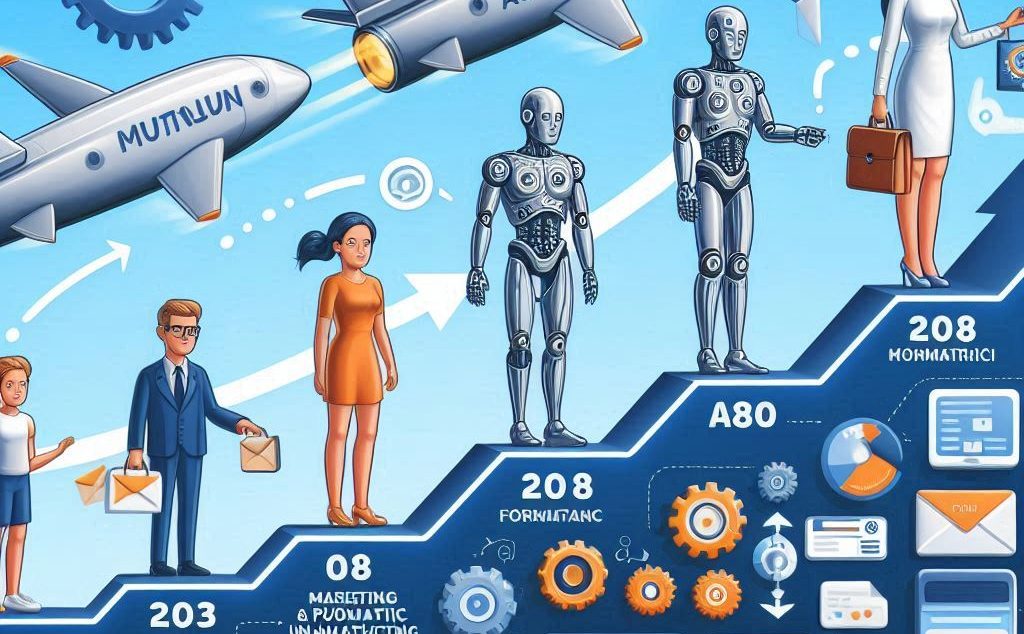
The Role of AI in Marketing Automation
AI amplifies the capabilities of marketing automation by offering advanced features such as:
- Predictive Analytics: Forecast customer behavior and campaign performance.
- Natural Language Processing (NLP): Understand and respond to customer interactions in real-time.
- Machine Learning: Continuously improve marketing strategies based on data and outcomes.
- Personalization: Deliver hyper-personalized content and recommendations.
Integrating AI with Salesforce CRM
Salesforce CRM, with its robust AI component known as Einstein, offers a comprehensive suite of tools to automate and enhance marketing efforts. Here’s how to effectively integrate AI with Salesforce CRM:

Step 1: Enable Einstein Features
Begin by enabling the relevant Einstein features in Salesforce:
- Einstein Prediction Builder: Create custom predictions tailored to your marketing goals.
- Einstein Discovery: Gain insights from data to inform marketing strategies.
- Einstein Content Selection: Automatically deliver the most relevant content to each customer.
- Einstein Bots: Automate customer interactions on your digital channels.
Step 2: Set Up Data Integration
AI-driven marketing automation relies on accurate and comprehensive data. Ensure your data sources are integrated with Salesforce:
- Connect CRM Data: Integrate customer data from various sources (e.g., website, email, social media).
- Ensure Data Quality: Cleanse and normalize data to maintain accuracy and consistency.
- Segment Audiences: Use AI to segment your audience based on behavior, demographics, and preferences.
Step 3: Create AI-Driven Campaigns
Leverage AI to design and execute automated marketing campaigns:
- Predictive Campaigns: Use Einstein Prediction Builder to forecast campaign outcomes and optimize targeting.
- Personalized Content: Implement Einstein Content Selection to deliver personalized content at scale.
- Multi-Channel Automation: Automate interactions across multiple channels (email, social media, SMS) using AI insights.
Step 4: Monitor and Optimize
Continuous monitoring and optimization are crucial for successful marketing automation:
- Track Performance: Use Einstein Analytics to monitor campaign performance in real-time.
- Analyze Data: Leverage AI to analyze customer behavior and campaign effectiveness.
- Adjust Strategies: Optimize your marketing strategies based on insights and predictive analytics.

Benefits of AI-Driven Marketing Automation
Integrating AI with Salesforce CRM offers several significant benefits:
- Enhanced Customer Engagement: AI enables more relevant and timely interactions with customers.
- Increased Conversion Rates: Personalized content and predictive targeting lead to higher conversion rates.
- Cost Efficiency: Automating repetitive tasks reduces operational costs.
- Scalability: AI-driven automation allows for the scaling of marketing efforts without proportional increases in resources.
Future Trends in AI and Marketing Automation
The future of marketing automation is set to be shaped by several emerging trends:
1. Hyper-Personalization
AI will enable even more granular personalization, tailoring content to individual preferences and real-time behaviors. Expect marketing strategies to become more customer-centric, focusing on delivering highly relevant experiences.
2. Voice and Conversational AI
With advancements in NLP, voice-activated and conversational AI will play a significant role in customer interactions. This includes AI-powered chatbots and virtual assistants that provide seamless, human-like experiences.
3. Predictive Customer Journeys
AI will map out predictive customer journeys, anticipating customer needs and proactively guiding them through the sales funnel. This will result in smoother, more intuitive customer experiences.
4. Ethical AI and Data Privacy
As AI becomes more integrated into marketing, businesses will need to prioritize ethical AI practices and data privacy. Transparency, consent, and data security will be paramount to maintaining customer trust.
Conclusion
The integration of AI with Salesforce CRM is revolutionizing marketing automation. By leveraging AI-driven insights and automation tools, businesses can enhance personalization, improve efficiency, and maximize ROI. As AI technology continues to evolve, the potential for innovative and effective marketing strategies will only grow. Embracing these advancements will enable businesses to stay competitive and deliver exceptional customer experiences in the digital age.

Automating Business Processes with Salesforce Einstein: A Step-by-Step Guide
A Step-by-Step Guide
One of the most effective ways to achieve efficiency and productivity in todays competitive business landscape is through automation. Salesforce Einstein, Salesforce’s AI-powered platform, offers powerful tools to automate various business processes. This guide will provide a step-by-step approach to leveraging Salesforce Einstein for automating business processes, helping your organization save time, reduce costs, and enhance productivity.
Understanding Salesforce Einstein
Salesforce Einstein is designed to bring advanced AI capabilities directly into the Salesforce platform. It enables businesses to automate routine tasks, gain predictive insights, and make data-driven decisions. The key components of Salesforce Einstein include:
- Einstein Discovery: Provides insights and predictive analytics.
- Einstein Prediction Builder: Creates custom AI models.
- Einstein Bots: Automates customer interactions.
- Einstein Activity Capture: Automatically logs emails and events.
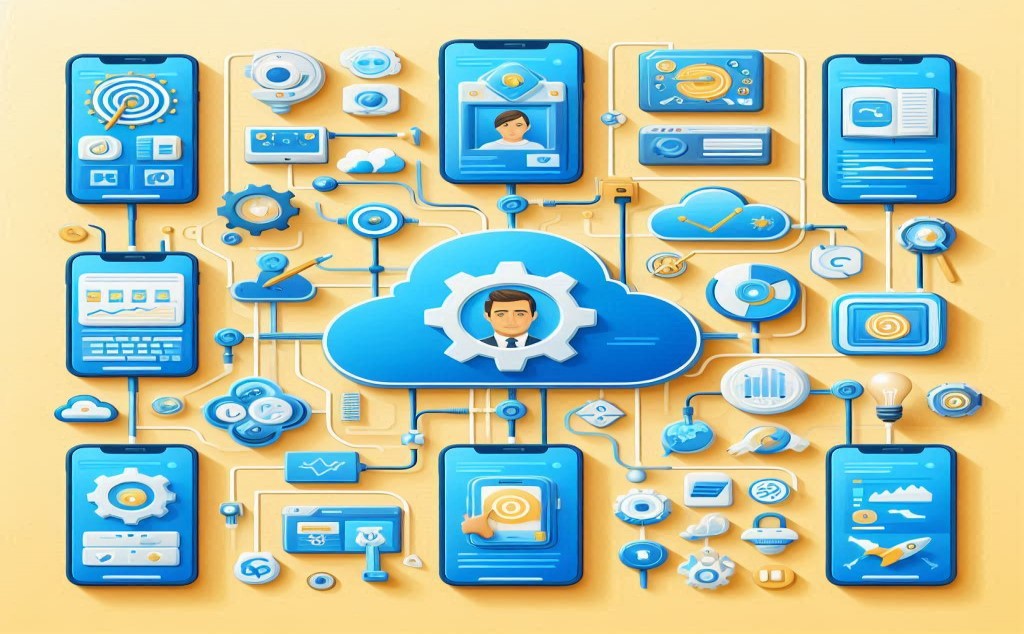
Step 1: Identifying Processes for Automation
The first step in automating business processes with Salesforce Einstein is to identify which processes are suitable for automation. Look for repetitive, time-consuming tasks that can benefit from automation. Common areas include:
-
Lead Scoring and Qualification: Automate the scoring and qualification of leads to ensure your sales team focuses on the most promising prospects.
-
Customer Support: Use AI-powered chatbots to handle common customer inquiries and support tickets.
-
Sales Forecasting: Automate sales forecasting to gain accurate predictions and insights.
Step 2: Setting Up Salesforce Einstein
To get started with Salesforce Einstein, you need to ensure that your Salesforce environment is properly set up. Follow these steps:
-
Enable Einstein Features: Navigate to Salesforce Setup and enable the Einstein features you plan to use.
-
Connect Data Sources: Ensure your data sources are connected to Salesforce. Einstein requires access to your CRM data to provide accurate predictions and automation.
Configure User Permissions: Set up the appropriate permissions for users who will be working with Einstein tools.
Step 3: Utilizing Einstein Prediction Builder
Einstein Prediction Builder allows you to create custom AI models tailored to your business needs. Here’s how to use it:
-
Define the Use Case: Identify the specific business question you want to answer with AI. For example, predict which leads are most likely to convert.
-
Select the Data: Choose the data fields that will be used to build the prediction model. This might include lead source, industry, and past interaction history.
-
Build and Deploy the Model: Use the intuitive interface to build your prediction model. Once built, deploy it to start generating predictions.
Step 4: Automating Customer Interactions with Einstein Bots
Einstein Bots are AI-powered chatbots that can handle routine customer interactions, freeing up your support team for more complex issues. Here’s how to set them up:
-
Design the Bot Conversation Flow: Map out the conversation flow, including common customer queries and the corresponding responses.
-
Configure the Bot: Use the Einstein Bot Builder to configure your chatbot. Define the intents (customer intents) and entities (specific data points the bot needs to extract).
-
Test and Deploy: Test the bot thoroughly to ensure it handles interactions as expected. Once satisfied, deploy the bot on your preferred channels (e.g., website, mobile app).
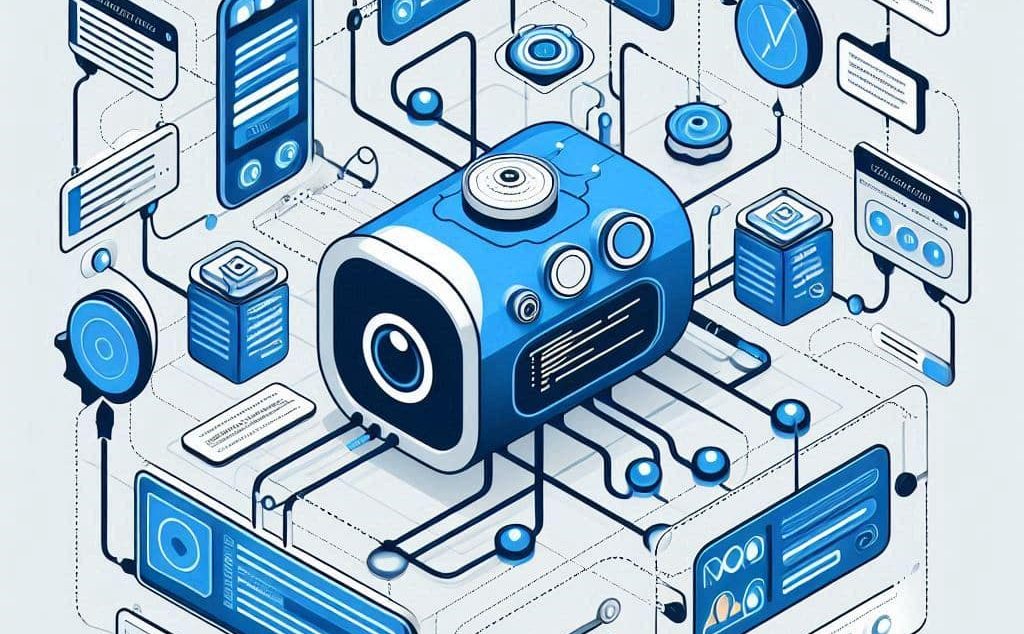
Step 5: Enhancing Productivity with Einstein Activity Capture
Einstein Activity Capture automatically logs emails and calendar events, reducing manual data entry and ensuring your CRM data is always up to date. To set it up:
- Enable Einstein Activity Capture: In Salesforce Setup, navigate to Einstein Activity Capture settings and enable the feature.
- Connect Email and Calendar: Integrate your email and calendar systems (e.g., Gmail, Office 365) with Salesforce.
-
Configure Sync Settings: Define the sync settings to control what data gets captured and how it is shared within your organization.

Step 6: Monitoring and Optimizing Automated Processes
Once your processes are automated, it’s important to continuously monitor and optimize them. Use Einstein Analytics to track the performance of your automation efforts and make data-driven adjustments as needed.
- Set Up Dashboards: Create dashboards in Einstein Analytics to monitor key metrics and performance indicators.
- Analyze Results: Regularly review the data to identify trends, bottlenecks, and areas for improvement.
- Optimize Models and Workflows: Refine your AI models and automation workflows based on the insights gained from your analysis.


Predictive Analytics in Salesforce: Leveraging AI for Future Insights
Maximizing Revenue with Salesforce
Accurate sales forecasting is crucial for business success. It allows companies to make informed decisions about resource allocation, strategy, and growth. Salesforce, with its AI-powered capabilities, offers sophisticated tools to enhance sales forecasting accuracy. This article explores how to leverage AI for sales forecasting within Salesforce, helping your business maximize revenue and stay ahead of the competition.
The Importance of Accurate Sales Forecasting
Sales forecasting predicts future sales based on historical data, market trends, and other variables. Accurate forecasts provide numerous benefits, including:
- Resource Allocation: Ensures optimal distribution of resources, such as inventory, personnel, and budget.
- Strategic Planning: Informs strategic decisions, such as market expansion and product development.
- Performance Measurement: Helps track progress against targets and adjust strategies as needed.
- Financial Management: Improves cash flow management and financial planning.

Understanding Salesforce Einstein for Sales Forecasting
Salesforce Einstein brings AI-driven insights and automation to sales forecasting, making predictions more accurate and actionable. Key features include:
- Einstein Forecasting: Provides data-driven sales forecasts using machine learning.
- Einstein Opportunity Scoring: Predicts the likelihood of closing deals, helping prioritize efforts.
- Einstein Analytics: Offers deep insights and customizable dashboards to track sales performance.
Step-by-Step Guide to Leveraging AI for Sales Forecasting
Step 1: Integrate and Prepare Your Data
Successful AI-driven sales forecasting begins with high-quality data. Ensure your Salesforce CRM data is accurate, complete, and up to date.
- Data Cleansing: Remove duplicates, fill in missing information, and standardize data formats.
- Data Integration: Integrate all relevant data sources, including CRM, ERP, and external market data, into Salesforce.
- Data Segmentation: Segment data by factors such as geography, product lines, and customer segments to improve forecast granularity.
Step 2: Enable and Configure Einstein Forecasting
Once your data is ready, enable and configure Einstein Forecasting in Salesforce.
- Enable Einstein Forecasting: Navigate to Salesforce Setup and enable Einstein Forecasting.
- Define Forecast Categories: Set up forecast categories based on your sales stages (e.g., pipeline, best case, commit, closed).
- Configure Forecast Settings: Customize forecast settings, such as forecast types, currency, and time periods.
Step 3: Utilize Einstein Opportunity Scoring
Einstein Opportunity Scoring helps prioritize sales efforts by predicting the likelihood of closing each deal.
- Enable Opportunity Scoring: In Salesforce Setup, enable Einstein Opportunity Scoring.
- Customize Scoring Criteria: Define the criteria that impact opportunity scores, such as deal size, customer interactions, and sales rep performance.
- Analyze Scores: Use the opportunity scores to focus on high-potential deals and adjust sales strategies accordingly.
Step 4: Leverage Einstein Analytics for Deep Insights
Einstein Analytics provides advanced analytics and customizable dashboards to track and analyze sales performance.
- Set Up Dashboards: Create dashboards that display key metrics, such as forecast accuracy, pipeline health, and sales performance by region or product.
- Monitor Trends: Regularly review analytics to identify trends, anomalies, and areas for improvement.
- Adjust Strategies: Use insights from analytics to refine sales strategies, optimize resource allocation, and improve forecast accuracy.

Best Practices for Maximizing Revenue with AI-Driven Sales Forecasting
To fully leverage AI for sales forecasting and maximize revenue, follow these best practices:
- Continuous Data Improvement: Regularly update and cleanse your data to maintain accuracy.
- Training and Adoption: Train your sales team on using AI tools and interpreting forecast insights.
- Collaborative Forecasting: Involve multiple stakeholders in the forecasting process to enhance accuracy and buy-in.
- Scenario Planning: Use AI to model different scenarios and assess their impact on sales performance.
- Feedback Loop: Establish a feedback loop to continuously improve AI models based on actual sales outcomes.
Real-World Success Stories
Case Study 1: Tech Company Increases Forecast Accuracy
A leading tech company implemented Salesforce Einstein to enhance its sales forecasting accuracy. By leveraging Einstein Forecasting and Opportunity Scoring, the company reduced forecast errors by 20%, leading to better resource allocation and a 15% increase in quarterly revenue.
Case Study 2: Retail Chain Optimizes Inventory Management
A major retail chain used Einstein Analytics to track and predict sales trends across its stores. By integrating AI-driven forecasts with inventory management systems, the chain reduced stockouts by 30% and improved overall sales by 10%.

Conclusion
AI-driven sales forecasting with Salesforce Einstein empowers businesses to make smarter, data-driven decisions that drive revenue growth. By integrating and preparing data, leveraging Einstein’s forecasting and scoring tools, and utilizing advanced analytics, companies can achieve greater forecast accuracy and optimize their sales strategies. Embracing these technologies and best practices will position your business for long-term success in a competitive marketplace.

AI-Powered Customer Insights: Enhancing Your Salesforce CRM
In an era where customer experience is a key differentiator, understanding your customers’ needs, behaviors, and preferences is more critical than ever. Leveraging AI-powered customer insights can significantly enhance your Salesforce CRM, providing actionable data to drive strategic decisions. This article explores how AI can deliver deep customer insights and how integrating these insights into Salesforce can transform your business operations and customer engagement strategies.
The Importance of Customer Insights
Customer insights are the interpretations of customer data that businesses use to understand their audience better. These insights are crucial for:
- Personalizing Experiences: Tailoring interactions based on individual preferences.
- Improving Products and Services: Refining offerings to meet customer needs.
- Enhancing Customer Retention: Identifying and addressing issues that could lead to churn.
- Optimizing Marketing Strategies: Creating targeted campaigns that resonate with specific segments.
Leveraging AI for Customer Insights
AI enhances the process of gathering and interpreting customer data by providing advanced tools and techniques such as:
- Predictive Analytics: Forecasting future customer behaviors and trends.
- Natural Language Processing (NLP): Analyzing text data from customer interactions.
- Machine Learning: Identifying patterns and making recommendations based on data.
- Sentiment Analysis: Understanding customer emotions and attitudes from their feedback.

Integrating AI-Powered Insights into Salesforce CRM
Salesforce CRM, with its Einstein AI platform, offers robust tools for integrating AI-powered customer insights. Here’s how to effectively incorporate these insights:
Step 1: Enable Einstein Analytics
Einstein Analytics provides powerful data exploration and visualization capabilities within Salesforce. Start by enabling and setting up Einstein Analytics:
- Enable Einstein Analytics: Navigate to Salesforce Setup and enable the feature.
- Connect Data Sources: Integrate relevant data sources such as CRM data, social media, and customer feedback.
- Customize Dashboards: Create dashboards to visualize key metrics and insights.
Step 2: Use Einstein Discovery for Predictive Insights
Einstein Discovery leverages machine learning to analyze data and provide predictive insights. Implement Einstein Discovery by:
- Data Preparation: Ensure your data is clean and well-organized.
- Model Building: Use Einstein Discovery to build predictive models based on your data.
- Insights Application: Apply the insights generated by the models to improve decision-making and strategy.
Step 3: Implement Einstein Sentiment Analysis
Einstein Sentiment uses NLP to analyze customer feedback and determine sentiment. Follow these steps to implement sentiment analysis:
- Collect Feedback: Gather customer feedback from various channels such as emails, social media, and surveys.
- Analyze Sentiment: Use Einstein Sentiment to analyze the collected feedback and categorize it as positive, negative, or neutral.
- Actionable Insights: Use sentiment analysis results to address customer issues and improve overall satisfaction.
Step 4: Personalize Customer Interactions with Einstein Recommendations
Einstein Recommendations helps personalize customer interactions by suggesting relevant products or actions based on customer data. Implementing Einstein Recommendations involves:
- Data Integration: Ensure all relevant customer data is integrated into Salesforce.
- Define Criteria: Set up criteria for recommendations based on customer behavior and preferences.
- Deploy Recommendations: Use Einstein Recommendations to provide personalized suggestions during customer interactions.

Real-World Applications of AI-Powered Customer Insights
1. Enhancing Customer Support
A leading e-commerce company integrated Einstein Sentiment into their Salesforce CRM to analyze customer support tickets. By understanding the sentiment behind customer issues, they prioritized urgent cases and improved their response times, resulting in higher customer satisfaction.
2. Optimizing Marketing Campaigns
A financial services firm used Einstein Discovery to predict customer behavior and optimize their marketing campaigns. By targeting customers with personalized offers based on predictive insights, they achieved a significant increase in campaign conversion rates.
3. Driving Product Innovation
A consumer electronics company leveraged Einstein Analytics to gain insights into customer feedback on new product launches. By analyzing sentiment and trends, they identified key areas for improvement and innovated their product offerings to better meet customer needs.

Best Practices for Implementing AI-Powered Customer Insights
To fully benefit from AI-powered customer insights, follow these best practices:
- Maintain Data Quality: Ensure your data is accurate, complete, and up-to-date.
- Focus on Relevant Metrics: Identify and track metrics that align with your business objectives.
- Foster Cross-Functional Collaboration: Encourage collaboration between data scientists, marketers, customer service teams, and other stakeholders.
- Iterate and Improve: Continuously refine your models and strategies based on new data and insights.
- Ensure Ethical Use of Data: Respect customer privacy and use data ethically and transparently.
Conclusion
AI-powered customer insights offer a transformative potential for businesses looking to enhance their Salesforce CRM capabilities. By leveraging advanced tools like Einstein Analytics, Discovery, Sentiment, and Recommendations, companies can gain deeper understanding of their customers, personalize interactions, and make data-driven decisions that drive success. Embracing these technologies and best practices will enable businesses to stay competitive, foster customer loyalty, and achieve long-term growth.
Want To Discuss Your AI and Salesforce Project With Me?
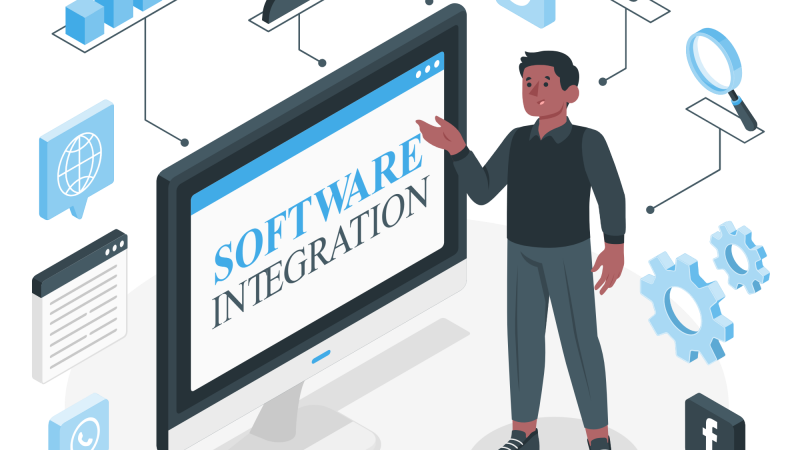
Demystify REST Web Services: The Ultimate Cheat Sheet
REST Integrations In Salesforce
Are you looking to integrate Salesforce with other systems or applications? REST (Representational State Transfer) Web Services can help you do just that. REST is a widely used architectural style that enables communication between different systems over HTTP. It’s a popular choice for building integrations because of its simplicity and flexibility.
In this post, I will cover everything you need to know about REST Web Services, including how they work, the benefits of using them, and some best practices to keep in mind. And to help you get started with implementing REST integrations in Salesforce, I have also included cheat sheet tables with sample code snippets and examples.
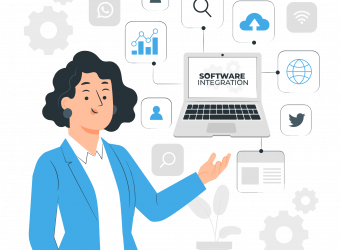
What Are REST Web Services?
REST Web Services are a set of rules and protocols for building web-based APIs (Application Programming Interfaces). The main idea behind REST is to use the HTTP protocol to make requests and receive responses between systems. The HTTP protocol is widely used and understood, which makes REST an accessible and versatile option for integrations.
REST APIs have a few key characteristics:
- Resource-based: REST APIs are centered around resources, which are identified by unique URIs (Uniform Resource Identifiers). Resources can be anything from a record in a database to a file on a server.
- Stateless: REST APIs are stateless, meaning that each request contains all the information necessary for the server to process it. The server doesn’t need to remember anything from previous requests.
- Operations-based: REST APIs use standard HTTP operations (GET, POST, PUT, DELETE, etc.) to perform actions on resources.
Why Use REST Web Services?
There are several benefits to using REST Web Services for integrations:
- Simplicity: REST is a relatively simple and lightweight protocol compared to other options like SOAP (Simple Object Access Protocol).
- Flexibility: Because REST APIs use standard HTTP operations, they can be used with a wide range of systems and programming languages.
- Scalability: REST APIs can be designed to scale horizontally by adding more servers to handle increased traffic.
- Ease of testing: Because REST APIs are stateless, it’s easy to test individual requests and responses without worrying about the state of the system as a whole.

Best Practices for Using REST Web Services
Here are some best practices to keep in mind when designing and implementing REST Web Services:
- Use HTTP status codes: Use standard HTTP status codes (e.g. 200 for success, 404 for not found, etc.) to indicate the outcome of requests.
- Follow RESTful principles: Follow the principles of REST, such as resource-based identification and standard HTTP operations, to make your APIs more consistent and predictable.
- Document your APIs: Provide clear and comprehensive documentation for your APIs, including how to authenticate and examples of requests and responses.
- Consider security: Use HTTPS (HTTP Secure) to encrypt traffic between systems, and implement authentication and authorization mechanisms to ensure that only authorized users can access your APIs.
Cheat Sheet: REST Web Services in Salesforce
To help you get started with implementing REST Web Services in Salesforce, we’ve put together a cheat sheet with sample code snippets and examples. Use this cheat sheet as a quick reference guide for creating, testing, and managing REST integrations in Salesforce.
Table 1: REST Resources, APIs, Authentication, Endpoints and More
Use this cheat sheet to understand how to define REST resources and endpoints in Salesforce. Be sure to replace the placeholders with the appropriate values for your integration.
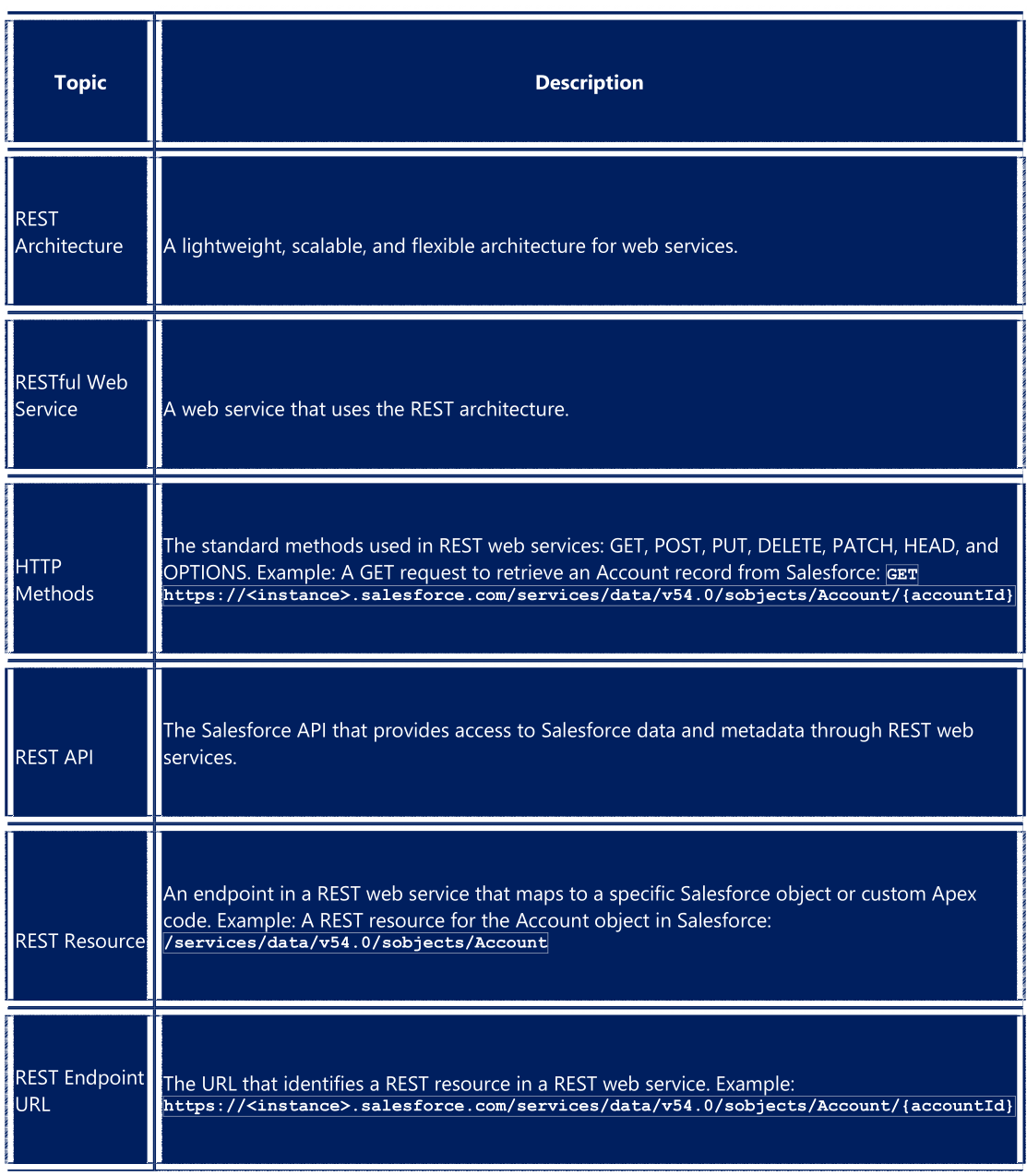


Table 2: REST Request, Response Methods, Status Codes and More
Use this cheat sheet to understand how to format REST requests, understand all the methods used, sending request, getting responses and more.



Conclusion
RESTful APIs have become a standard way to build web services. They provide a flexible and scalable architecture that allows developers to create a wide range of applications. By using this cheat sheet, you can quickly learn the basics of RESTful APIs, HTTP methods, HTTP status codes, and how to format REST requests. With this knowledge, you can start building your own RESTful APIs and consuming third-party APIs.
Remember to always use best practices when building RESTful APIs, such as keeping URLs simple and intuitive, using HTTP methods appropriately, and returning appropriate HTTP status codes.
I hope you found this cheat sheet and guide to RESTful APIs helpful. If you have any questions or feedback, please feel free to leave a comment below.
Want To Discuss Your Integration Project With Me?
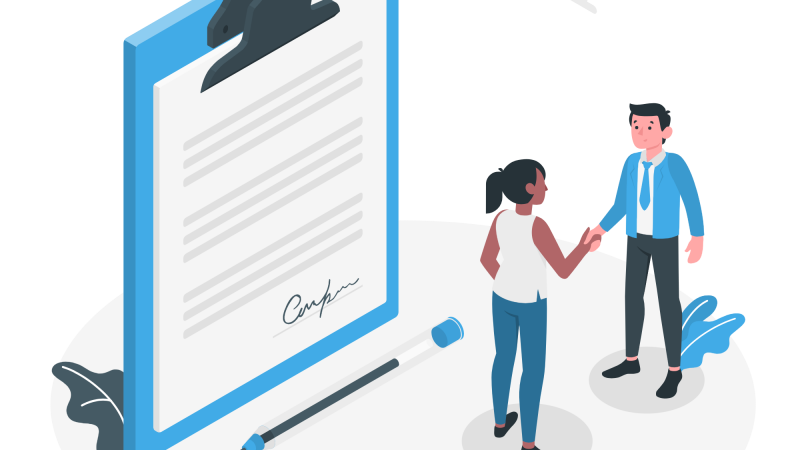
Salesforce Object Cheat Sheet for Boosting Sales Success
Overview
Are you looking to boost your sales success? As a certified Salesforce Consultant, I’ve seen firsthand the importance of understanding key objects in the sales process. That’s why I’m excited to share with you this easy-to-use object cheat sheet. Whether you’re new to Salesforce or just need a quick refresher, this cheat sheet will help you better understand the relationships between important objects and ultimately improve your sales process. So without further ado, let’s dive in!
Salesforce Sales Objects Cheat Sheet

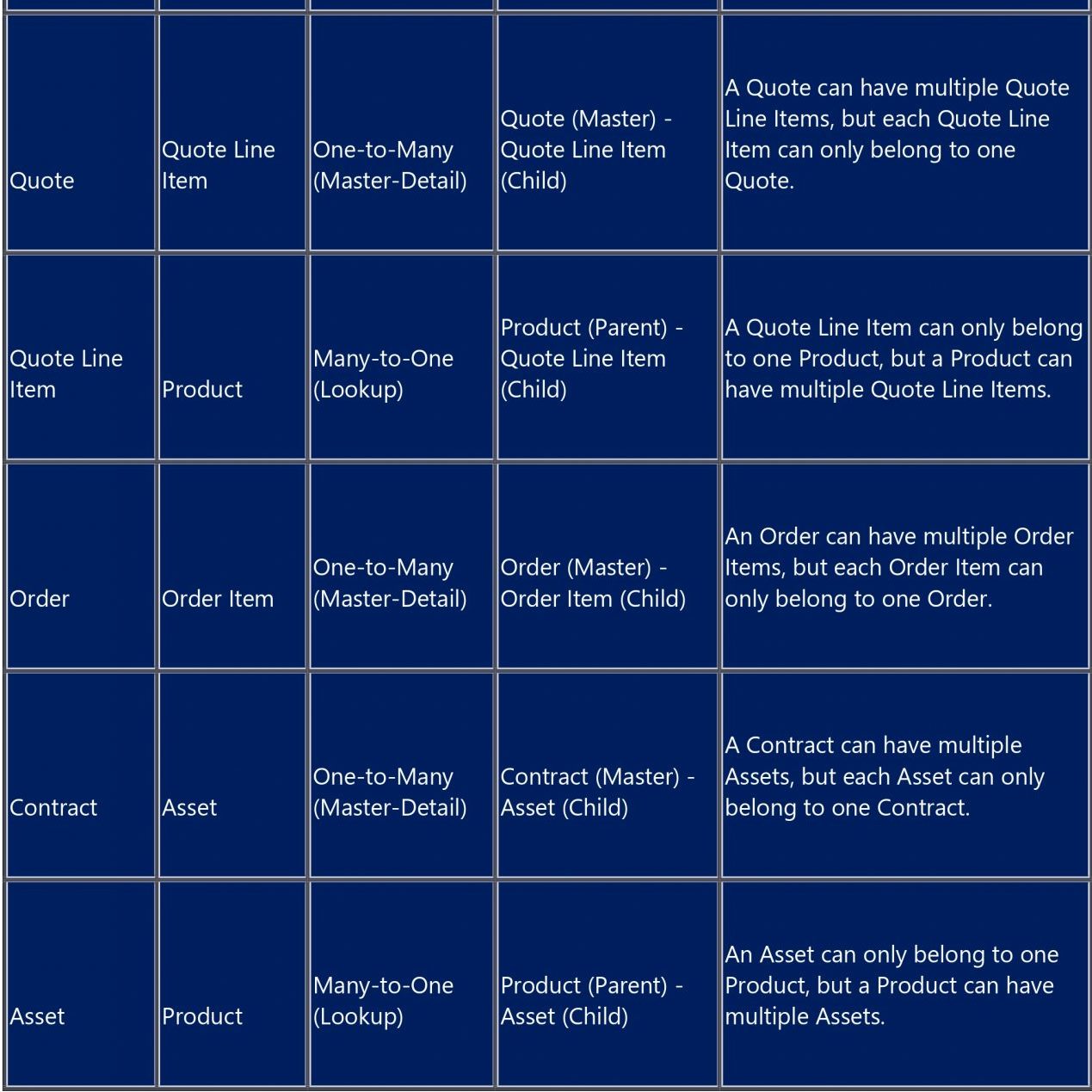
Conclusion
By using this cheat sheet, you can streamline your sales process and improve your overall efficiency. As a certified Salesforce Consultant, I highly recommend taking the time to understand these key objects and their relationships. With this knowledge, you’ll be better equipped to make data-driven decisions and ultimately drive more sales. If you have any questions or would like more information about Salesforce, feel free to reach out to me. Good luck and happy selling!
Want A Free Consultation?

15 Must-Know Salesforce Consultant Scenario-Based Interview Questions and Expert Answers In 2023
Overview
Preparing for a Salesforce Consultant interview? Look no further! In this article, I have compiled 15 scenario-based interview questions and expert answers to help you ace your interview and land your dream job. From technical skills to critical thinking, I have covered everything you need to know to impress your interviewer and demonstrate your expertise as a Salesforce Consultant. So let’s dive in and get started!
Q 1. Can you tell me about your experience working with Salesforce, and how it has prepared you for this role?

I have been working with Salesforce for over five years now, and during that time I have gained experience in a variety of areas, including development, customization, and administration. I have worked on projects ranging from small business solutions to large-scale enterprise implementations, and I have experience working with a wide range of Salesforce products, including Sales Cloud, Service Cloud, and Marketing Cloud. My experience has prepared me well for this role, as I have a deep understanding of how Salesforce can be used to solve business problems and drive growth.
Q 2. How do you stay current with the latest developments in the Salesforce ecosystem, and what resources do you rely on?
I stay current with the latest developments in the Salesforce ecosystem by regularly attending conferences, webinars, and local user groups. I also read blogs and follow thought leaders in the Salesforce community to stay up to date on the latest trends and best practices. In addition, I am an active member of the Trailblazer Community, where I participate in discussions, ask and answer questions, and share my knowledge and experience with others.
Q 3. How do you handle challenges and problems when working with Salesforce, and can you give me an example of a difficult situation you encountered and how you resolved it?
When I encounter challenges and problems when working with Salesforce, I like to approach them in a methodical and analytical manner. I start by gathering as much information as possible about the issue, and then I work with stakeholders and team members to identify potential solutions. One example of a difficult situation I encountered was when I was working on a large-scale Salesforce implementation for a financial services client. We encountered some unexpected technical issues that were impacting the project timeline, but by working closely with the development team and leveraging resources available, we were able to resolve the issue and deliver the project on time.

Q 4. How do you prioritize tasks and manage your time effectively when working on multiple projects at once?
When working on multiple projects at once, I prioritize tasks based on their urgency and importance, and I communicate regularly with stakeholders to ensure that their needs are being met. I also make use of tools such as project management software and calendars to help me stay organized and manage my time effectively. I believe that effective time management is essential for success in any role, and I am committed to staying organized and focused in order to deliver high-quality work.
Q 5. How do you communicate with stakeholders and clients when working on a Salesforce project, and how do you ensure that their needs are being met?
When working on a Salesforce project, I believe that clear and frequent communication is essential for success. I make sure to establish regular check-ins with stakeholders and clients to ensure that their needs are being met and to identify any issues or concerns as early as possible. I also make sure to listen carefully to their feedback and suggestions, and I work to incorporate their input into the project plan as appropriate. Overall, I believe that effective communication and collaboration are key to delivering successful Salesforce projects.
Q 6. How do you approach the design and development of Salesforce solutions, and can you walk me through your process?
When designing and developing Salesforce solutions, I like to start by gaining a deep understanding of the client’s business processes and requirements. From there, I work with stakeholders to identify potential solutions and design a solution that meets their needs. I then develop the solution using best practices and efficient coding techniques, and I test it thoroughly to ensure that it meets the client’s requirements. Throughout the process, I make sure to communicate regularly with stakeholders to keep them informed and gather their feedback.
Q 7. How do you prioritize customization and configuration when working with Salesforce, and can you give me an example of a project where you had to make this decision?
When working with Salesforce, I prioritize configuration over customization whenever possible, as it is generally faster, cheaper, and easier to maintain. However, there are certain cases where customization is necessary to meet the client’s requirements. For example, on a recent project, the client needed a specific functionality that was not available through standard configuration. After weighing the pros and cons, we decided to implement a custom solution that met their needs.
Q 8. How do you ensure that Salesforce data is accurate and up to date, and can you describe a time when you had to troubleshoot data quality issues?
To ensure that Salesforce data is accurate and up to date, I make sure to establish clear data governance policies and procedures, and I work with stakeholders to ensure that they are followed. This includes establishing data entry standards, conducting regular data quality checks, and implementing automated data validation rules. One example of a time when I had to troubleshoot data quality issues was when we discovered that a large number of duplicate records had been created in the system. To resolve this, I worked with the client to establish a data deduplication process and implemented a tool to help identify and merge duplicate records.
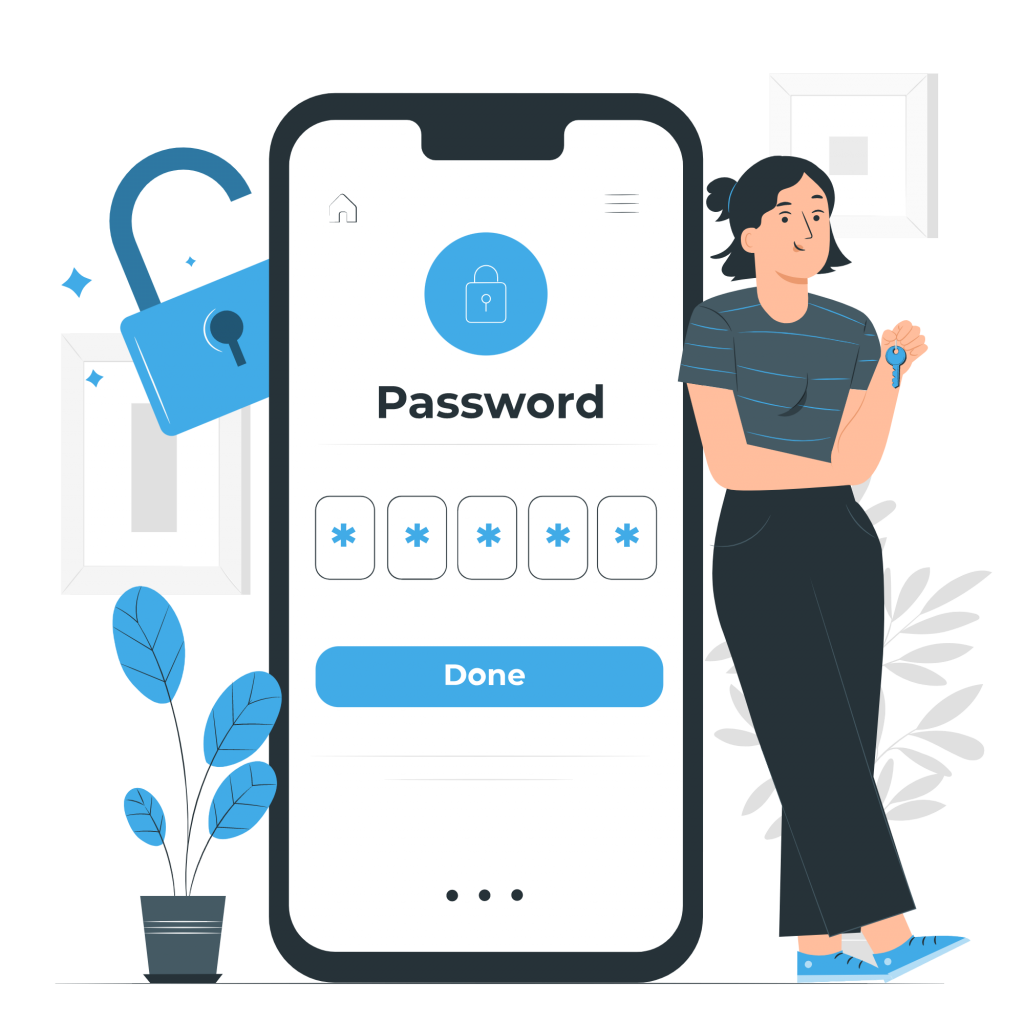
Q 9. How do you ensure that Salesforce security is properly configured and maintained, and can you describe a time when you had to address a security issue?
To ensure that Salesforce security is properly configured and maintained, I make sure to follow best practices and regularly review and update security settings. This includes establishing clear security roles and permissions, implementing two-factor authentication where appropriate, and regularly reviewing user access. One time when I had to address a security issue was when we discovered that a user had inadvertently been granted access to sensitive data that they should not have had access to. To address this, I worked with the client to update their security settings and conducted a thorough review of user access to ensure that similar issues were not present.
Q 10. How do you stay organized and prioritize your work when working remotely or in a virtual environment, and can you describe a time when you had to overcome challenges related to remote work?
When working remotely or in a virtual environment, I make sure to establish clear communication channels with my team members and stakeholders and use tools such as project management software and calendars to stay organized and prioritize my work. I also make sure to maintain a structured schedule and establish clear boundaries between work and personal time. One time when I had to overcome challenges related to remote work was during a project where we were working with a team in a different time zone. To address this, we established clear communication protocols and adjusted our schedules to ensure that we could work effectively together.
Q 11. How do you stay current with Salesforce updates and new features, and can you give an example of how you have implemented a new feature in a project?
To stay current with Salesforce updates and new features, I regularly read Salesforce documentation, participate in webinars and training sessions, and attend industry events. I also make sure to follow blogs and online forums to stay up to date on best practices and new trends. One example of how I have implemented a new feature in a project was when Salesforce introduced Einstein Analytics. I worked with the client to identify their reporting needs and created a custom dashboard using the new feature, which allowed them to quickly visualize their data in real-time.
Q 12. How do you approach change management when implementing Salesforce solutions, and can you describe a time when you had to manage a complex change management process?
When implementing Salesforce solutions, I approach change management by establishing clear communication channels and involving stakeholders throughout the process. This includes conducting regular status updates, addressing concerns and feedback in a timely manner, and providing training and support to ensure a smooth transition. One time when I had to manage a complex change management process was during a project where we were implementing a major new Salesforce functionality. To manage this, I worked with stakeholders to establish a comprehensive change management plan and created custom training materials to help users understand and adapt to the new functionality.
Q 13. How do you approach data migration when transitioning to Salesforce, and can you describe a time when you had to migrate a large amount of data?
When approaching data migration to Salesforce, I prioritize data cleanliness and accuracy to ensure a smooth transition. This includes conducting a thorough data analysis and cleansing process before migrating the data, and using data migration tools and processes that are tailored to the client’s specific needs. One time when I had to migrate a large amount of data was during a project where we were transitioning a legacy CRM system to Salesforce. To manage this, I worked with the client to develop a comprehensive data migration plan and used specialized tools and processes to ensure a successful migration.
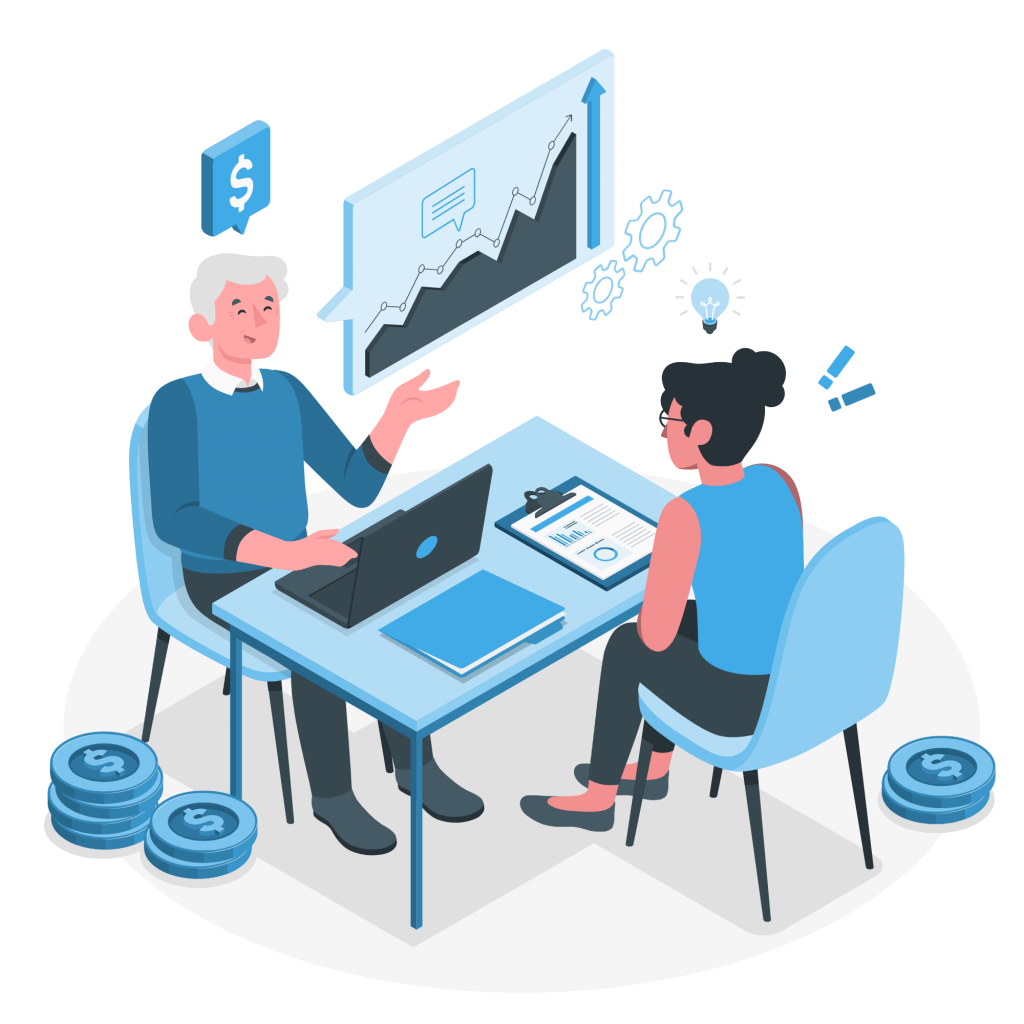
Q 14. How do you approach integration between Salesforce and other systems, and can you describe a time when you had to integrate Salesforce with a complex system?
When approaching integration between Salesforce and other systems, I prioritize compatibility and data consistency to ensure a seamless integration. This includes identifying key data points and ensuring that they are synced between systems, as well as creating custom workflows and automation to manage data flow. One time when I had to integrate Salesforce with a complex system was during a project where we were integrating Salesforce with a legacy ERP system. To manage this, I worked with the client’s IT team to establish a clear integration plan and used custom APIs and workflows to ensure a smooth integration.
Q 15. How do you approach performance tuning and optimization when working with Salesforce, and can you describe a time when you had to troubleshoot performance issues?
When approaching performance tuning and optimization in Salesforce, I prioritize identifying and addressing potential bottlenecks in the system. This includes reviewing code for efficiency and using Salesforce tools to monitor system performance and identify potential issues. One time when I had to troubleshoot performance issues was during a project where we were experiencing slow load times in a custom application. To address this, I reviewed the code for potential performance issues and optimized the code where necessary. I also used Salesforce tools to identify potential system bottlenecks and made adjustments to improve overall system performance.
Conclusion
In conclusion, these 15 Salesforce Consultant scenario-based interview questions and expert answers are just what you need to boost your confidence and stand out during your interview. Remember to prepare thoroughly, showcase your technical skills, and demonstrate your ability to think critically and problem-solve on the spot. With these tips and strategies in mind, you’ll be well on your way to landing your dream job as a Salesforce Consultant. Good luck!
About The Author
Schedule An Appointment Today
Free One-To-One Call
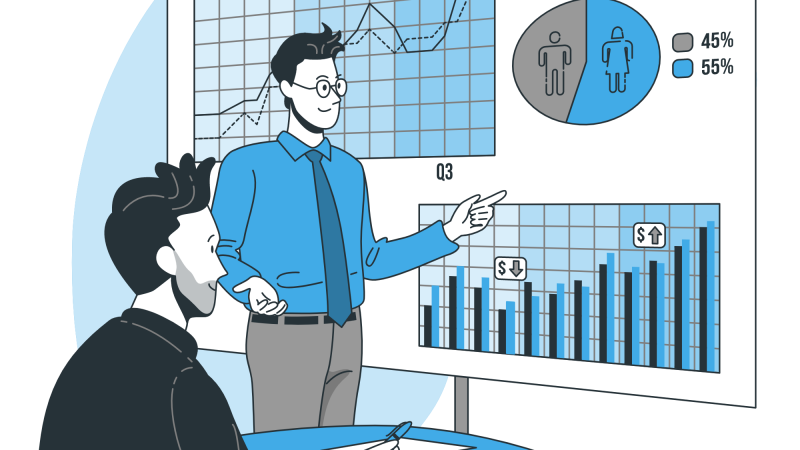
What Does A Salesforce Consultant Do?
Overview
As a Salesforce Consultant with 6 years of experience, I have worked with businesses of all sizes and in various industries. I know that every business is unique and has its own set of challenges. That’s why Salesforce Consultants are so valuable. We help businesses solve their unique challenges by using the Salesforce platform to streamline processes, improve efficiency, and increase revenue.
Whether you’re a small business just starting out, or a large enterprise with complex requirements, a Salesforce Consultant can help you get the most out of the platform. In this blog post, I will explain what a Salesforce Consultant does, the difference between a Functional Salesforce Consultant and a Technical Salesforce Consultant and provide a real-life business use case of how a Salesforce Consultant can help you maximize your Salesforce investment. If you’re looking to hire a Salesforce Consultant or want to learn how to become a Salesforce consultant this blog post is for you.
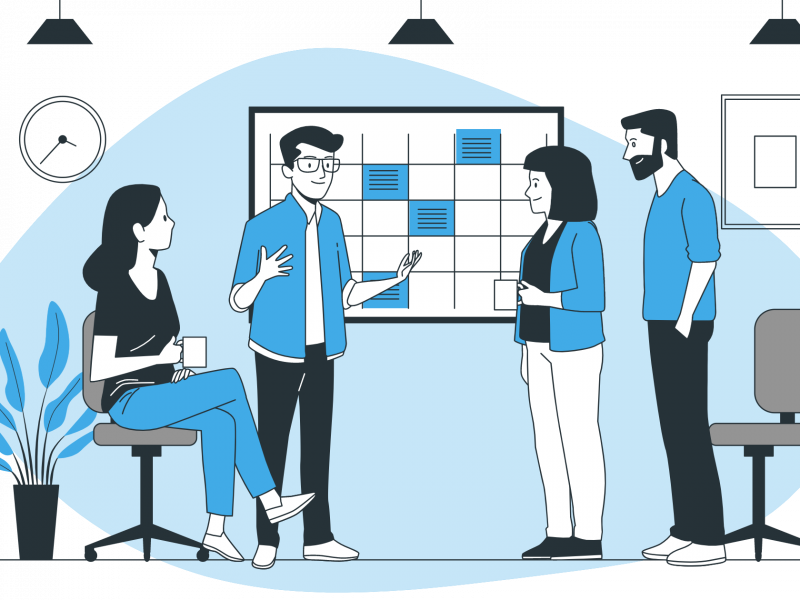
Understanding the Role of a Salesforce Consultant
Salesforce Consultants are experts in the Salesforce platform and its capabilities. They work with businesses to understand their unique needs and requirements, and develop customized solutions that address those needs. Salesforce Consultants help businesses with a range of tasks, including:
- Designing and implementing Salesforce solutions
- Configuring the platform to meet specific business requirements
- Developing custom applications and integrations
- Migrating data to Salesforce
- Providing training and support to users
Functional vs. Technical Salesforce Consultant
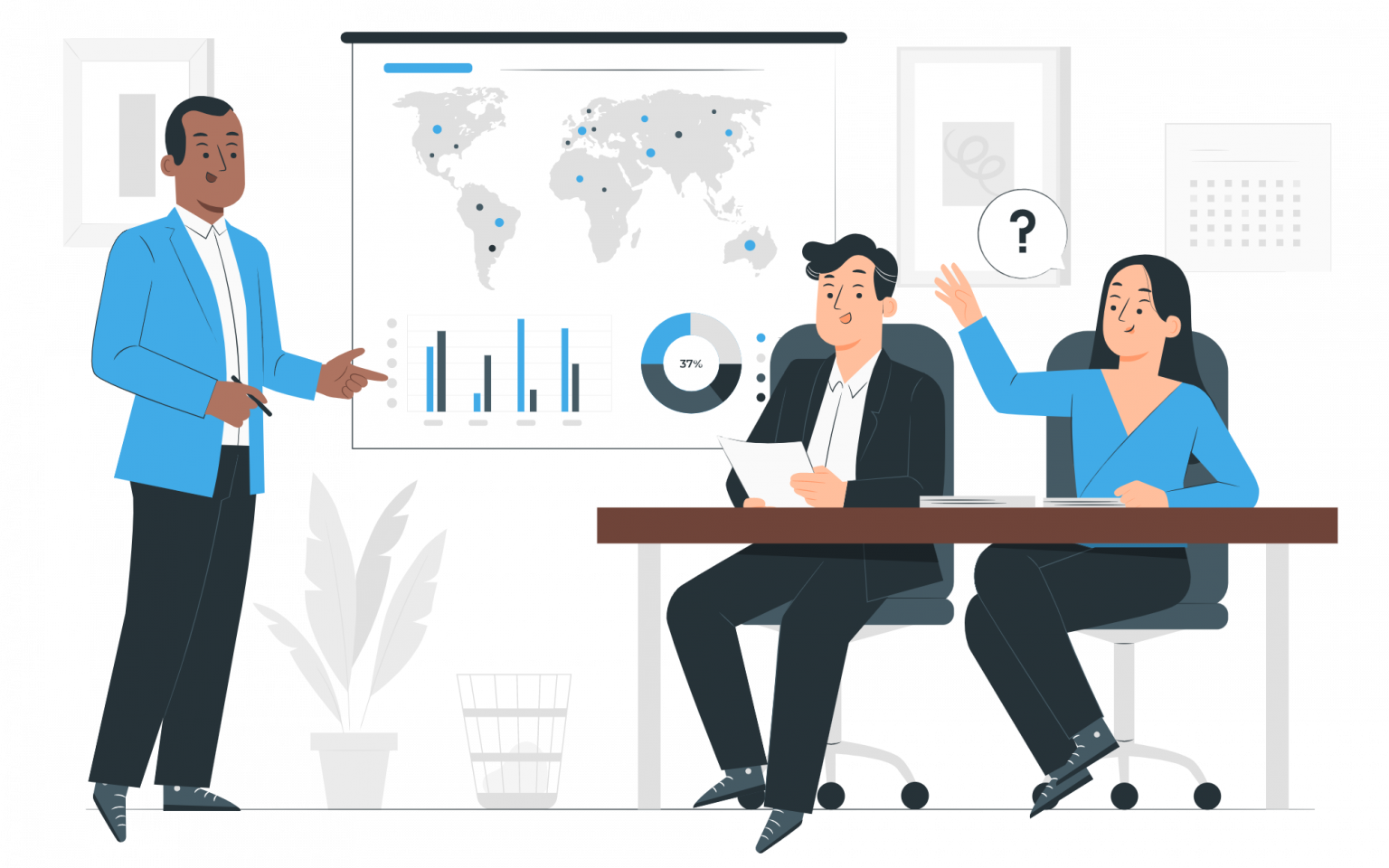
Functional Salesforce Consultant
A Functional Salesforce Consultant is responsible for understanding the business requirements of the client and translating them into technical solutions using the Salesforce platform. They focus on the functional aspects of Salesforce and are responsible for configuring the platform to meet specific business needs.
They work closely with business stakeholders to identify their requirements and develop solutions to meet those needs. A Functional Salesforce Consultant typically has a strong background in business analysis, project management, and system design.
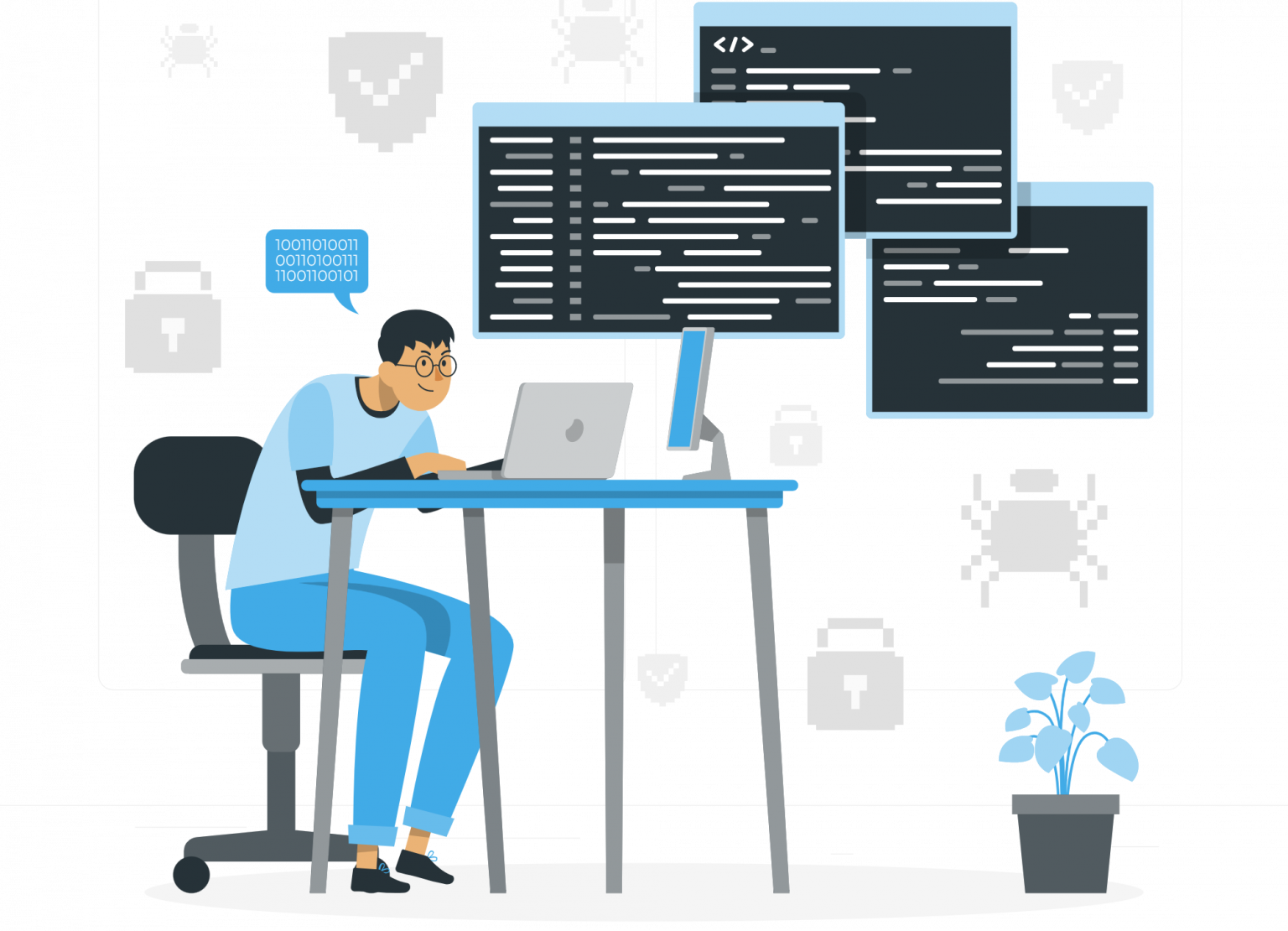
Technical Salesforce Consultant
A Technical Salesforce Consultant is responsible for developing technical solutions that meet the specific requirements of the client. They focus on the technical aspects of Salesforce, such as custom development, integrations, and data migration.
They work closely with developers to ensure that solutions are implemented effectively. A Technical Salesforce Consultant typically has a strong background in software engineering, programming languages, and web technologies.
In summary, the main difference between the two roles is that a Functional Salesforce Consultant focuses on the functional aspects of Salesforce, while a Technical Salesforce Consultant focuses on the technical aspects. It’s important to note that both roles are critical for the successful implementation of a Salesforce solution.
A Functional Salesforce Consultant may work on the design and configuration of a solution, while a Technical Salesforce Consultant may be responsible for developing custom code to meet specific requirements. Both roles require a deep understanding of the Salesforce platform and its capabilities.
Real-Life Business Use Case
A real-life example of how a Salesforce Consultant can help a business is in the case of a healthcare company which I was contracted to work for. The healthcare company had a number of disparate systems that they were using to manage their patient information, including spreadsheets, paper forms, and an outdated database. The company was experiencing a number of challenges, including:
- Difficulty accessing patient information in a timely manner.
- Inefficient processes that were leading to errors and delays.
- Inability to track patient information across the organization.
The healthcare company engaged with me to help them address these challenges. I worked closely with the company to design and implement a Salesforce solution that met their specific needs. The solution included:
- Consolidating patient information into a single system in Salesforce.
- Developing custom applications in Salesforce to manage patient appointments and referrals.
- Implementing Flows, Apex triggers to automate processes and reduce errors.
- Providing training to users on how to use the Salesforce platform effectively.
As a result of working with me, the healthcare company was able to:
- Access patient information quickly and easily increasing productivity by 50%.
- Streamline their processes and reduce errors improving patient data management by 30%.
- Improve communication and collaboration across the organization.
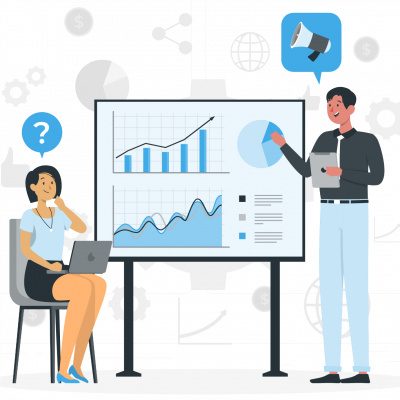
Career Path of a Salesforce Consultant
The career path of a Salesforce Consultant can vary depending on their interests and skill set. Some may specialize in a particular area of Salesforce, such as Sales Cloud, Service Cloud, Experience Cloud or other clouds while others may focus on a specific industry. Here are some common career paths for Salesforce Consultants:
-
Salesforce Administrator – An entry-level role that focuses on the day-to-day administration of Salesforce. This role may involve tasks such as managing user accounts, creating reports and dashboards, and maintaining data quality.
-
Salesforce Consultant – A more senior role that involves working closely with business stakeholders to identify their requirements and develop solutions. Salesforce Consultants may specialize in either functional or technical aspects of the platform.
-
Salesforce Architect – A high-level role that involves designing and implementing complex Salesforce solutions. Salesforce Architects have a deep understanding of the platform and are responsible for ensuring that solutions are scalable and sustainable.
Contact Me for Salesforce Consulting Services
As a Salesforce Consultant with 6 years of experience, I have worked with businesses of all sizes and in various industries. If you are looking to hire a Salesforce Consultant, I would love to help. Contact me to learn more about my services and how I can help your business achieve its goals.
Want To Discuss Your Project With Me?

Salesforce and Machine Learning: Driving Smarter Business Decisions
Businesses are constantly seeking ways to enhance their decision-making processes as a result of the data-driven era we found ourselves lately. Machine learning (ML), a subset of artificial intelligence (AI), has emerged as a powerful tool for transforming data into actionable insights. When integrated with Salesforce, machine learning can significantly drive smarter business decisions, streamline operations, and enhance customer experiences. This article delves into how Salesforce and machine learning can be combined to optimize business outcomes.
Understanding Machine Learning and Its Benefits
Machine learning involves algorithms that learn from data to make predictions or decisions without being explicitly programmed. Key benefits include:
- Predictive Analytics: Forecasting future trends and behaviors based on historical data.
- Customer Insights: Gaining deeper understanding of customer preferences and behaviors.
- Process Automation: Automating repetitive tasks to increase efficiency.
- Anomaly Detection: Identifying outliers and potential issues before they escalate.

Integrating Machine Learning with Salesforce
Salesforce, with its robust CRM capabilities, offers seamless integration with machine learning tools through its Einstein AI platform. Here’s how to effectively integrate machine learning with Salesforce:
Step 1: Define Your Business Goals
Before implementing machine learning, clearly define your business objectives. Identify the specific problems you aim to solve, such as improving sales forecasting, enhancing customer segmentation, or reducing churn rates.
Step 2: Prepare and Clean Your Data
High-quality data is essential for accurate machine learning models. Ensure your Salesforce CRM data is clean, complete, and up-to-date. This includes:
- Data Cleansing: Removing duplicates, correcting errors, and standardizing formats.
- Data Integration: Merging data from different sources to create a comprehensive dataset.
- Data Enrichment: Adding external data sources to enhance your CRM data.

Step 3: Choose the Right Machine Learning Tools
Salesforce Einstein provides a range of tools to integrate machine learning capabilities:
- Einstein Discovery: Automatically discover patterns in data and provide actionable recommendations.
- Einstein Prediction Builder: Create custom predictions based on your Salesforce data.
- Einstein Bots: Use AI-driven chatbots to automate customer interactions.
Step 4: Build and Deploy Machine Learning Models
With your data ready and tools chosen, the next step is to build and deploy machine learning models:
- Model Selection: Choose the appropriate machine learning models based on your business objectives and data characteristics.
- Training and Testing: Train the models using historical data and test their accuracy.
- Deployment: Integrate the models into your Salesforce environment and deploy them to start generating insights.
Step 5: Monitor and Refine
Machine learning is an iterative process. Continuously monitor the performance of your models and refine them based on new data and feedback:
- Performance Tracking: Use dashboards and reports to track the accuracy and effectiveness of your models.
- Feedback Loop: Incorporate user feedback and new data to continuously improve model performance.
- Adjust and Optimize: Make necessary adjustments to models and processes to maintain and enhance their accuracy.

Real-World Applications of Machine Learning with Salesforce
1. Enhanced Sales Forecasting
A leading software company implemented Einstein Prediction Builder to improve its sales forecasting accuracy. By analyzing historical sales data and customer interactions, the company was able to predict future sales trends more accurately, resulting in better inventory management and resource allocation.
2. Personalized Customer Experiences
A retail giant used Einstein Discovery to analyze customer purchase patterns and preferences. This enabled them to create personalized marketing campaigns and product recommendations, leading to a significant increase in customer engagement and sales.
3. Proactive Customer Support
A telecommunications company utilized Einstein Bots to handle common customer queries and issues. This not only reduced the workload on support agents but also improved customer satisfaction by providing instant, accurate responses.
Best Practices for Implementing Machine Learning with Salesforce
To maximize the benefits of integrating machine learning with Salesforce, follow these best practices:
- Start Small: Begin with a pilot project to test and validate the effectiveness of machine learning models.
- Focus on Data Quality: Ensure your data is clean, complete, and accurate for reliable model predictions.
- Collaborate Across Teams: Foster collaboration between data scientists, developers, and business stakeholders.
- Iterate and Improve: Continuously refine and optimize models based on performance metrics and user feedback.
- Maintain Transparency: Ensure transparency in your machine learning processes to build trust and understanding across your organization.

Conclusion
Integrating machine learning with Salesforce CRM empowers businesses to make smarter, data-driven decisions. By leveraging the advanced capabilities of Salesforce Einstein, companies can enhance their forecasting accuracy, personalize customer experiences, and automate processes for increased efficiency. As machine learning technology continues to evolve, its potential to drive business success will only grow. Embracing this integration today positions businesses to stay competitive and achieve sustainable growth in the future.
Want To Discuss Your AI and Salesforce Project With Me?
What Does Marketing Cloud Do?
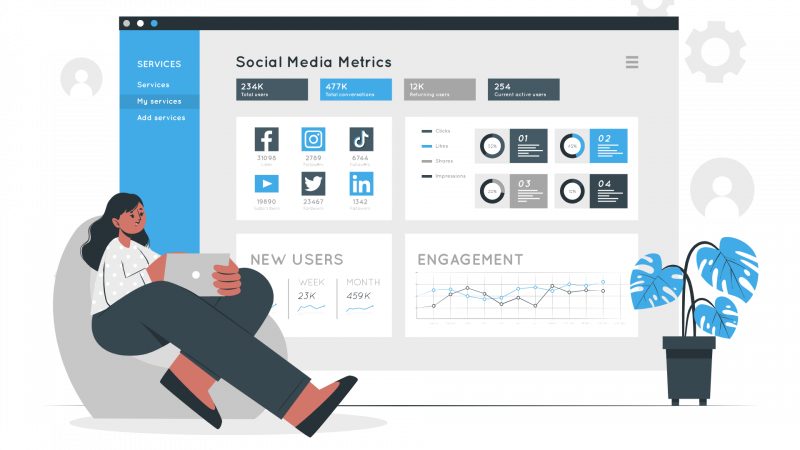
What Does Marketing Cloud Do?
Discover the Power of Salesforce Marketing Cloud
The world of marketing is constantly evolving and the key to success is staying ahead of the curve. In this blog post, we’ll take a closer look at how this innovative company “Smart Cloud Tech” utilized the key components of Salesforce Marketing Cloud to transform it’s marketing efforts and achieve massive success.
From the basics to advanced techniques, you’ll learn how to harness the full potential of Salesforce Marketing Cloud and create impactful customer experiences that drive results. Join me on this journey as I explore the world of Marketing Cloud and show you how to take your marketing strategy to the next level.
To know what Marketing cloud does, I will begin by stating the key components of Marketing Cloud so you can understand better when I start telling you how Smart Cloud Tech achieved massive success with Marketing Cloud.
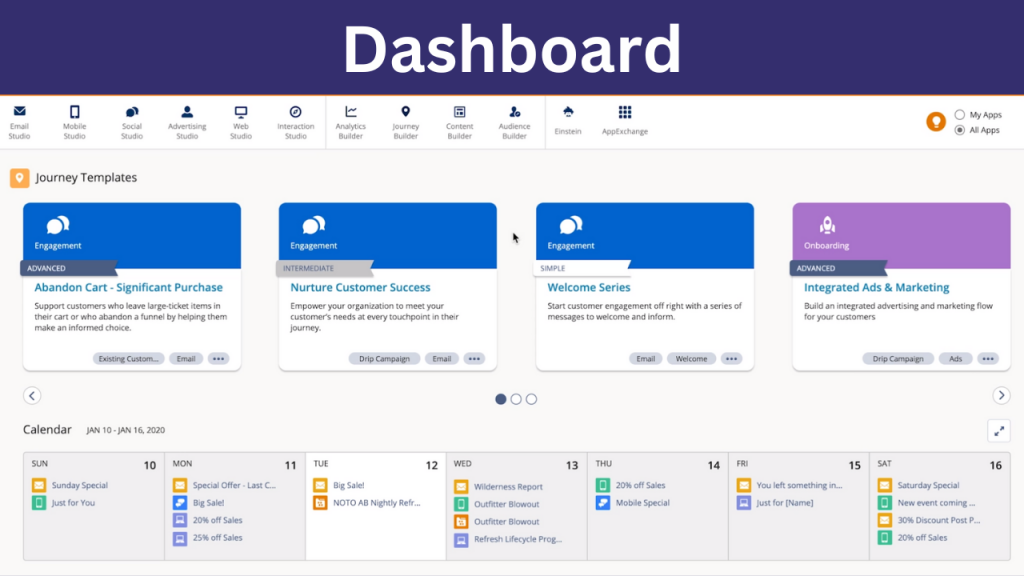
- Email Studio: A powerful email marketing tool to create, send, and track personalized and automated email campaigns.
- Mobile Studio: A mobile marketing platform to create and manage SMS and push notification campaigns.
- Social Studio: A social media management tool to plan, publish, and measure social media campaigns across multiple channels.
- Advertising Studio: A cross-channel advertising platform to plan, execute, and optimize digital ad campaigns.
- Interaction Studio: A real-time, cross-channel engagement platform to personalize customer interactions in real-time.
- Journey Builder: A visual drag-and-drop tool to create and manage customer journeys across multiple channels.
- Data Management Platform (DMP): A platform to collect, manage, and activate customer data for more personalized experiences.
- Content Builder: A cloud-based content management system to create and manage digital content.
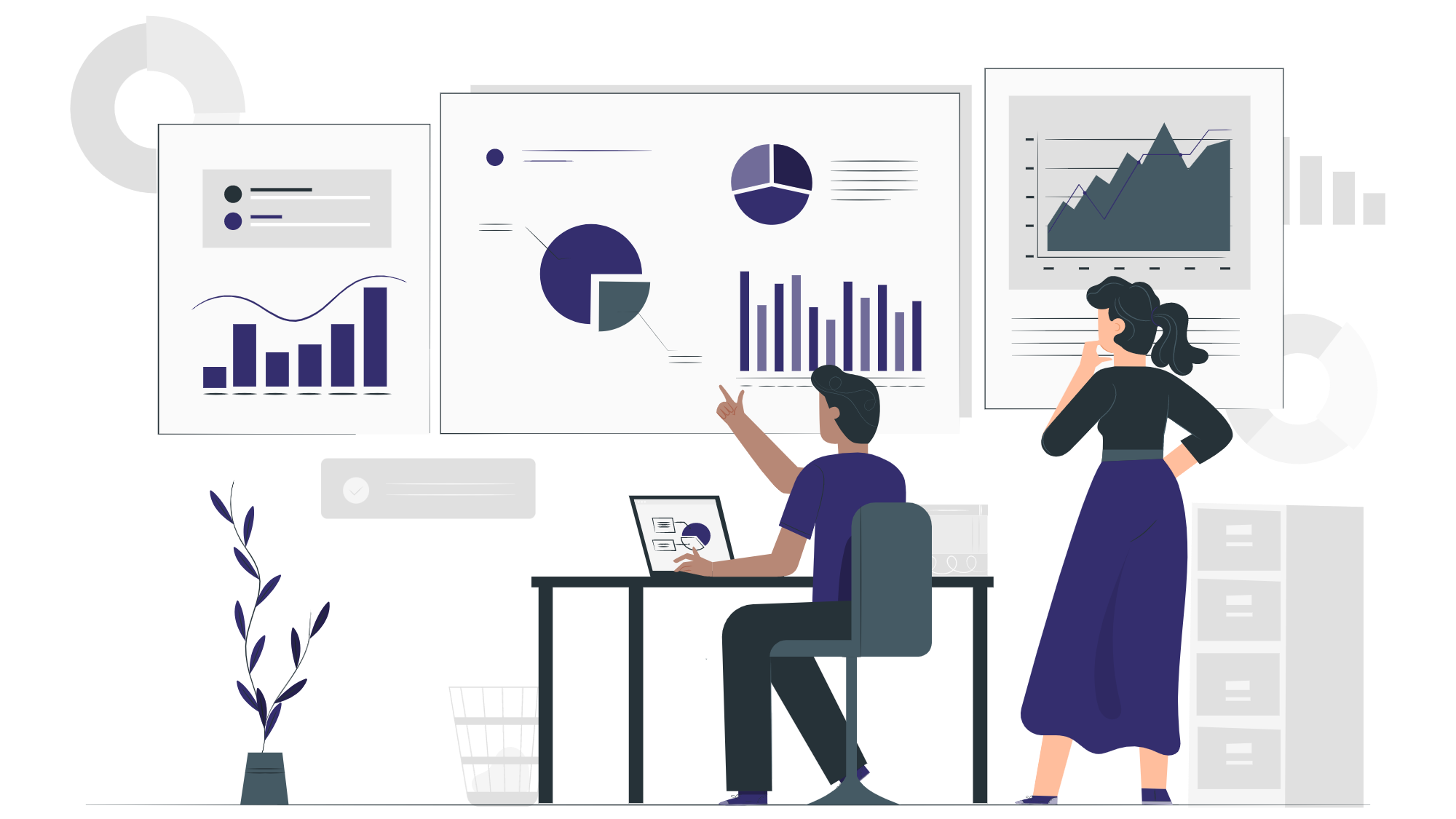
What Does Marketing Cloud Do?
To know what Marketing cloud does, I will tell you how Smart Cloud Tech used Marketing cloud to revolutionize their business. They were facing a common challenge: how to effectively reach and engage customers in a constantly evolving marketing landscape. They had tried various solutions, but nothing seemed to deliver the results they were looking for. That was until they discovered Salesforce Marketing Cloud.
With Marketing Cloud, Smart Cloud Tech was able to utilize all the key components of the platform, including the Email Studio, Mobile Studio, Social Studio, Journey Builder, and Data Management, to transform its marketing strategy. They used the platform’s advanced segmentation capabilities to send targeted and personalized messages to specific groups of customers based on their interests and behaviors.
The Power of Personalization
By leveraging the Email Studio, Mobile Studio, and Social Studio, Smart Cloud Tech was able to create a multi-channel approach to its marketing efforts. The platform’s advanced personalization capabilities allowed them to send relevant messages to each customer, resulting in a higher open and click-through rate for their campaigns.
Journey Builder
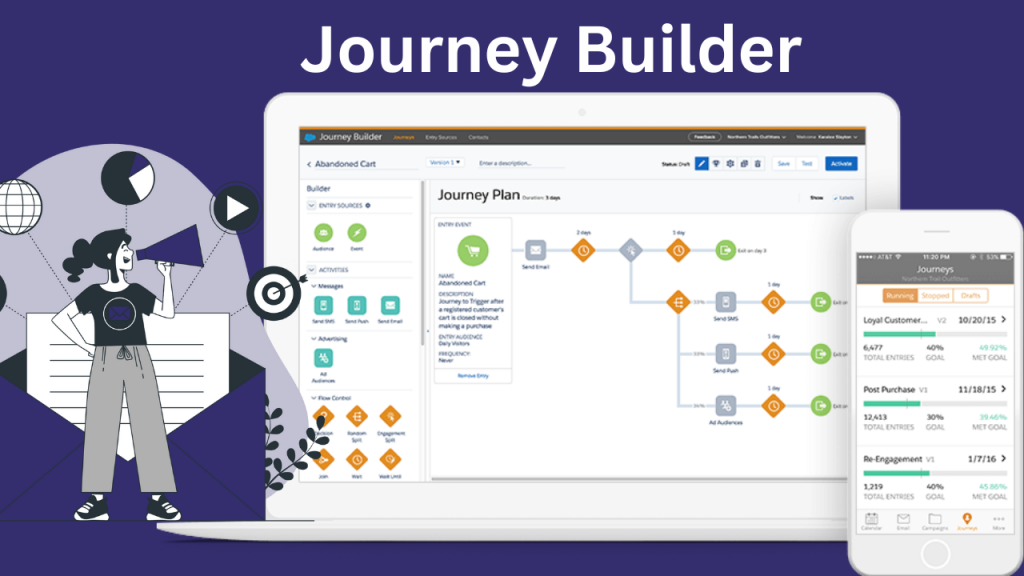
The Key to Customer Engagement: Smart Cloud Tech also utilized Journey Builder to create personalized customer journeys. The platform’s drag-and-drop interface made it easy to design and execute complex campaigns, resulting in a more engaged customer base. Journey Builder allowed Smart Cloud Tech to track and analyze customer behavior, allowing them to make real-time adjustments to their marketing strategy.
Data Management
The Foundation of Success: Smart Cloud Tech knew that having a solid foundation of data was key to their marketing success. With Salesforce Marketing Cloud’s Data Management component, they were able to cleanse, standardize, and enrich their customer data, resulting in a more complete picture of their customers. This allowed them to make data-driven decisions and deliver even more relevant and personalized messages.
Real-Time Campaign Tracking
With Salesforce Marketing Cloud’s robust reporting capabilities, Smart Cloud Tech was able to track the performance of their campaigns in real-time. This allowed them to quickly pivot their strategy if a campaign wasn’t performing as expected and double down on what was working. The platform’s reporting also provided a clear picture of the impact their marketing was having on the business, allowing them to make informed decisions.
The Bottom Line
By implementing Marketing Cloud, Smart Cloud Tech was able to transform its marketing strategy and see a significant impact on its business. The platform’s advanced personalization capabilities, real-time campaign tracking, and data management capabilities all contributed to the success they saw. It’s clear that Salesforce Marketing Cloud is a powerful tool for any company looking to elevate their marketing game.

Conclusion
Salesforce Marketing Cloud is the number one solution companies have been looking for to transform their marketing strategy. With its advanced personalization capabilities, real-time campaign tracking, and data management capabilities, the platform has the power to drive significant business impact.
Smart Cloud Tech was able to streamline its marketing efforts and achieve impressive results. From personalized email campaigns to cross-channel messaging, they were able to engage with their customers in a whole new way. Don’t miss out on the opportunity to take your marketing strategy to the next level with Salesforce Marketing Cloud.
If you’re looking to implement Marketing Cloud in your own business, the time to act is now. With the right strategy and execution, you too can achieve amazing results and take your marketing efforts to the next level. As a Salesforce Consultant, I have extensive experience helping businesses like yours leverage the power of Salesforce Marketing Cloud. If you’re interested in learning more or want to get started, feel free to reach out to me here. I’m here to help you achieve your marketing goals and drive success for your business.
Don’t miss out on the opportunity to transform your marketing efforts with Marketing Cloud. Take the first step today and reach out to me for a consultation. Let’s work together to make your marketing vision a reality!
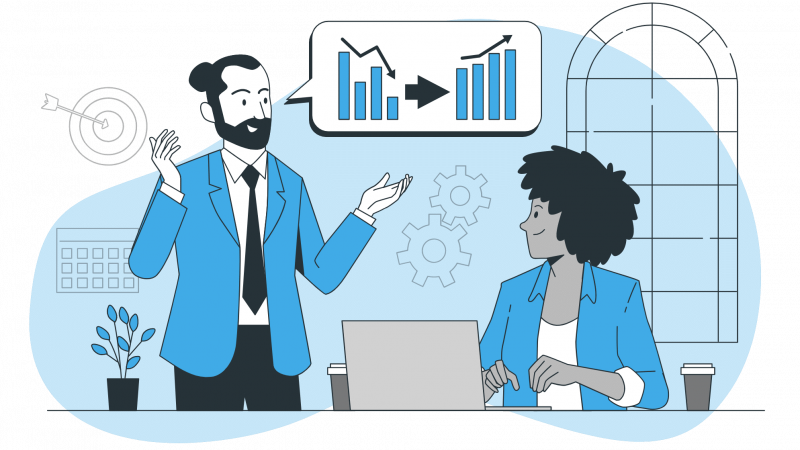
Loyalty Management In Salesforce?
Get to Know what Is Loyalty Management In Salesforce.
In today’s competitive business landscape, customer loyalty is more important than ever. It’s not enough to simply acquire new customers; you need to keep them coming back for more. That’s where Salesforce loyalty management comes in. By utilizing the power of Salesforce, you can create a loyalty program that not only boosts customer retention but also drives business growth.
In this blog post, we’ll explore how Salesforce loyalty management can help you build a stronger bond with your customers and take your business to the next level. Whether you’re a small business owner or a large corporation, Salesforce loyalty management can help you stay ahead of the competition and achieve your business goals.
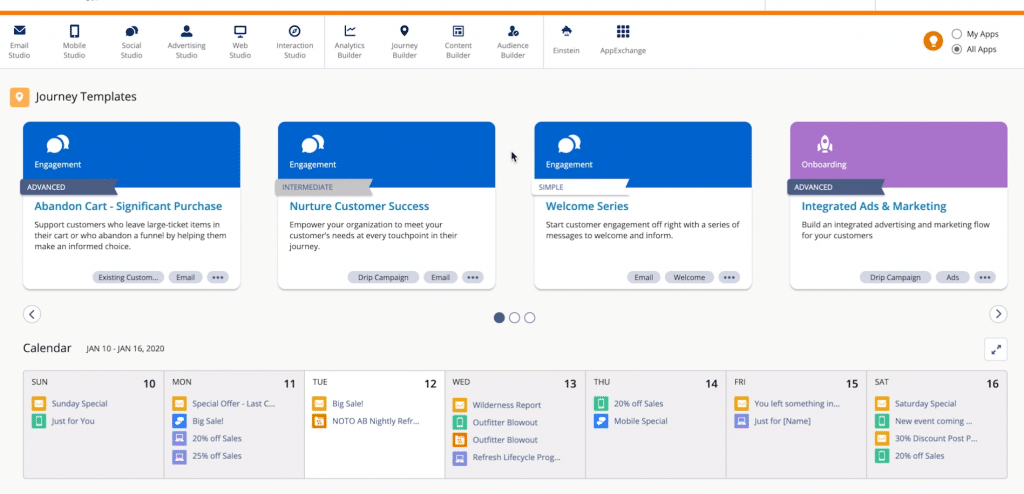
5 Core Components Of Salesforce Loyalty Management.
- Loyalty Program: This is the backbone of the loyalty management system. It defines the rules and rewards for the loyalty program and can be customized according to the business’s needs.
- Points Management: This component allows businesses to assign points to customers based on different actions, such as purchases, referrals, or engagement with the brand. Points can be redeemed for rewards or used to move up in tier levels of the loyalty program.
- Tier Management: This component allows businesses to create different levels or tiers within the loyalty program, with increasing rewards and perks for customers who reach higher levels.
- Reward Management: This component allows businesses to create and manage rewards for customers, such as discounts, special offers, or exclusive access to products or events.
- Analytics and Reporting: This component provides businesses with valuable data and insights about their loyalty program, such as customer engagement, redemption rates, and ROI.
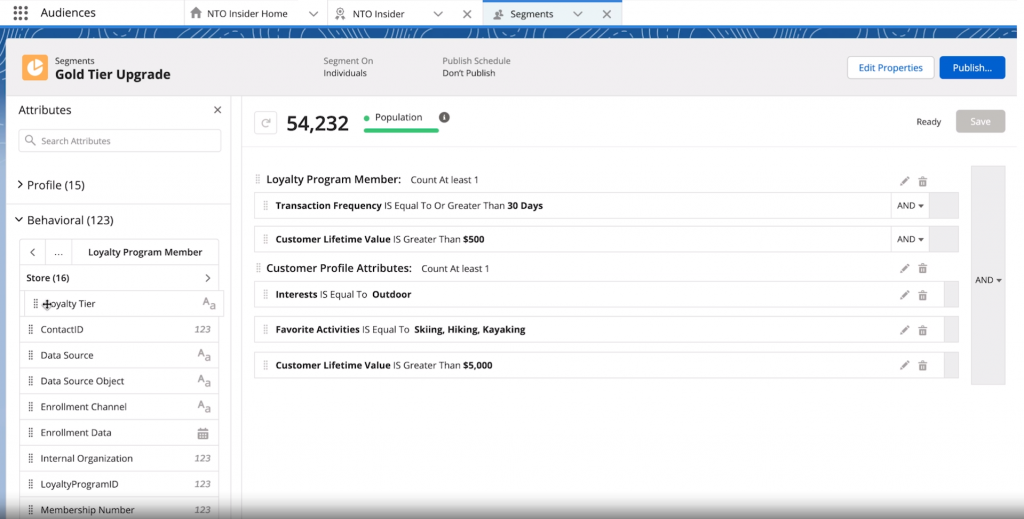
5 ways Salesforce Loyalty can help boost customer retention.
- Personalized Rewards
Salesforce Loyalty allows businesses to create personalized rewards for customers based on their purchasing habits and preferences. This personalization helps to increase customer engagement and loyalty, as customers feel valued and appreciated. Personalized rewards can include things like special discounts, early access to new products, or exclusive offers.
- Gamification
Gamification is a great way to increase customer engagement and retention. Salesforce Loyalty allows businesses to create gamified loyalty programs that incentivize customers to keep coming back. This can include things like point systems, leaderboards, and badges. Gamification adds a fun element to the loyalty program, making it more engaging for customers.
- Seamless Integration
Salesforce Loyalty can be seamlessly integrated with other Salesforce products, such as Sales Cloud and Service Cloud. This integration allows businesses to have a complete view of their customers, including their purchasing history, support tickets, and more. This information can be used to create targeted and personalized rewards, as well as improve customer service.
- Easy to Use
Salesforce Loyalty is easy to use and set up, making it accessible for businesses of all sizes. The platform is user-friendly and intuitive, allowing businesses to quickly create and manage their loyalty program. This ease of use helps to increase adoption and engagement among customers.
- Analytics and Reporting
Salesforce Loyalty includes analytics and reporting tools that allow businesses to track the success of their loyalty program. This includes metrics like customer engagement, redemption rates, and ROI. This data can be used to make data-driven decisions and improve the loyalty program over time.
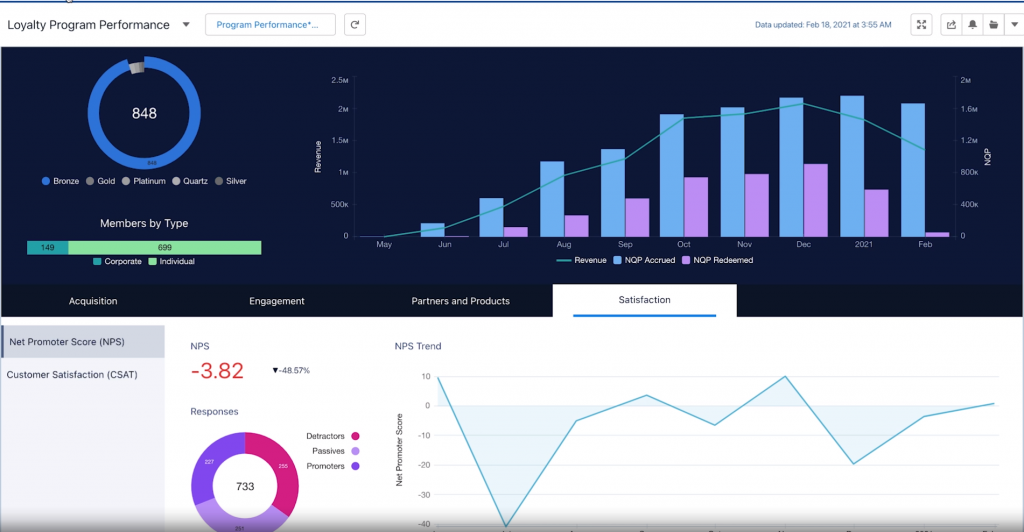
Conclusion
In conclusion, Salesforce loyalty management is a powerful tool for building a stronger bond with customers and driving business growth. By creating a loyalty program that rewards customers for their repeat business, you can boost customer retention and increase revenue. With Salesforce, you can easily track customer behavior, personalize rewards, and automate the loyalty program. By leveraging the power of Salesforce, you can create a loyalty program that truly resonates with customers and sets your business apart from the competition.
So, start building a stronger bond with your customers today and see the positive impact it can have on your business growth. Remember, loyal customers are the backbone of any successful business, so invest in building loyalty and watch your business thrive.
If you are looking for an experience Salesforce Consultant to implement Salesforce Loyalty Management in your organization kindly reach out to me here.


Omnichannel Experience with Salesforce: A Step-by-Step Guide
Business Insights
In today’s fast-paced business environment, providing a seamless customer experience across multiple channels is more important than ever. With an omnichannel experience with Salesforce, customers are able to interact with your business through various touchpoints, such as email, phone, social media, and in-person, and they expect these interactions to be consistent and personalized. With its powerful marketing automation tools, analytics capabilities, and customer relationship management (CRM) features, Salesforce can help businesses create an omnichannel experience that will delight customers and drive sales.
Step 1: Track and Manage Customer Interactions Across All Channels
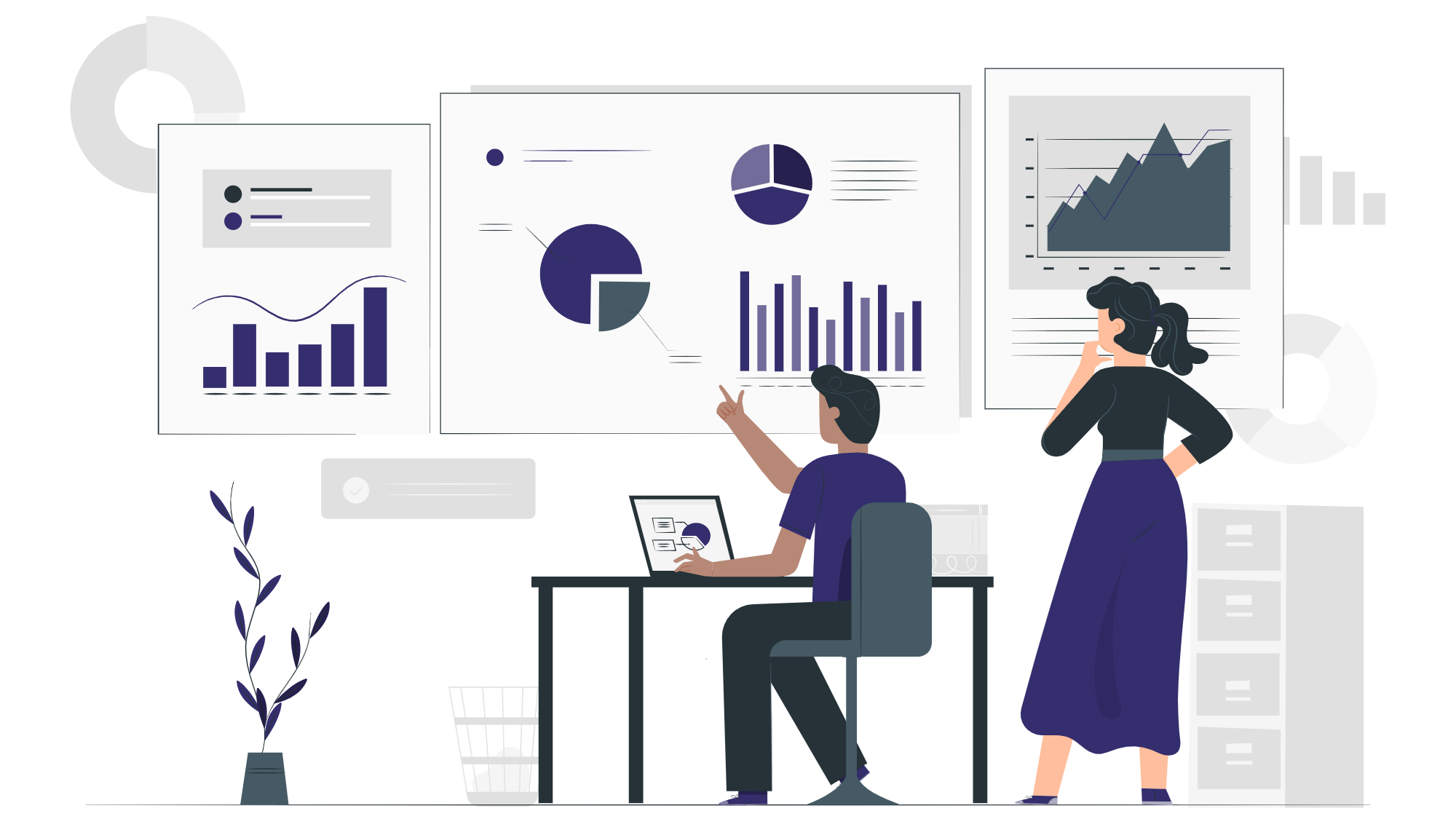
The first step in creating an omnichannel experience is to track and manage customer interactions across all channels. Salesforce’s CRM features allow you to do this by providing a single view of the customer, where you can see all interactions and activity across different channels in one place. By having a complete picture of your customer, you can better understand their needs and preferences, and tailor your communication to meet them.
To track and manage customer interactions, you can use Salesforce’s Contact, lead, or opportunity Management feature, which allows you to store and organize customer information, such as contact details, lead status, opportunity stage, and account history. You can also use Salesforce’s Activity Management feature, which allows you to track customer interactions, such as emails, calls, and meetings, and associate them with specific contacts and leads.
Step 2: Use Marketing Automation Tools to Personalize Communication
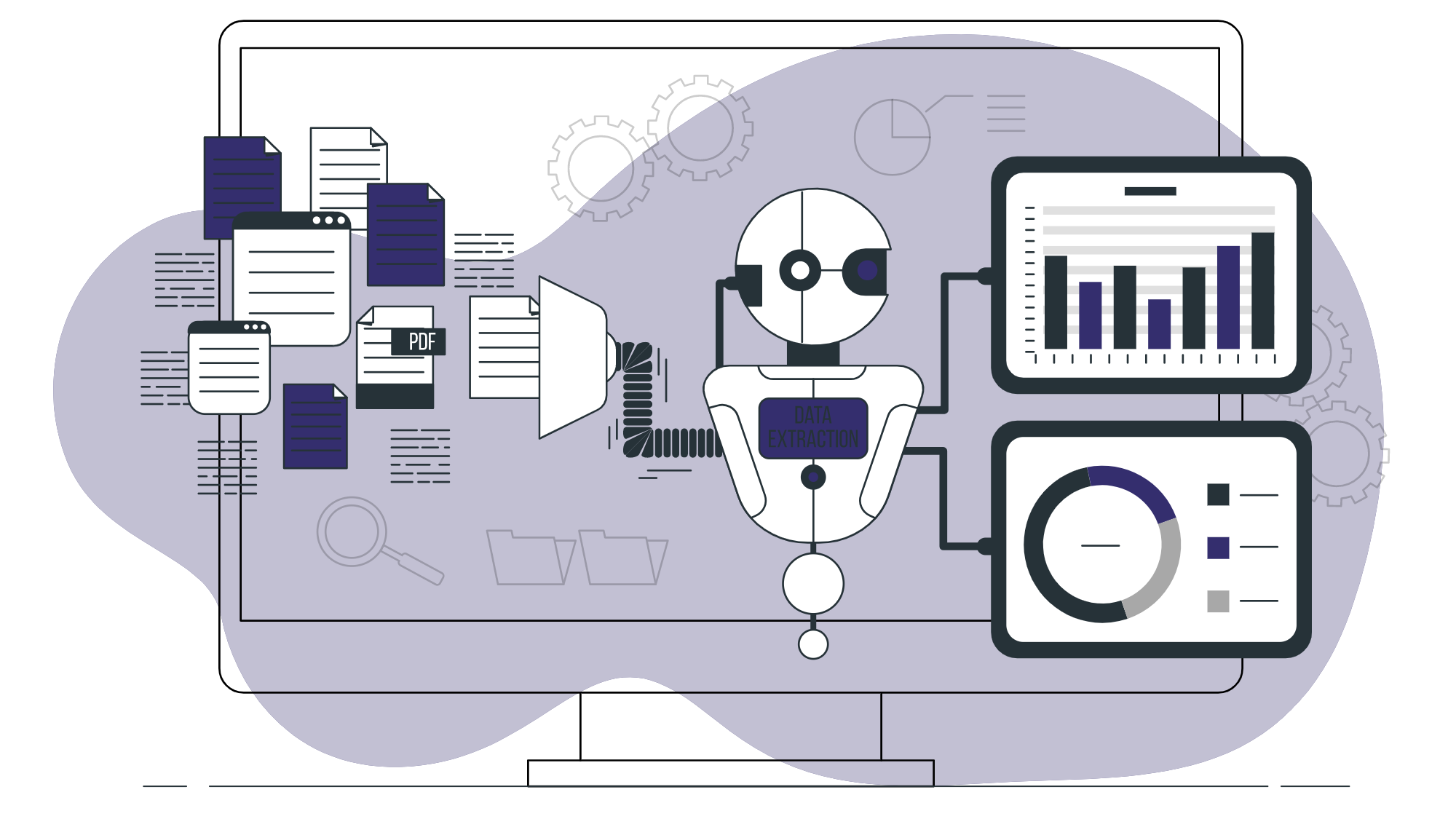
The next step in creating an omnichannel experience with Salesforce is to use Salesforce’s marketing automation tools to personalize communication. Personalization is critical to creating a customer-centric experience, as it allows you to tailor your communication to each customer’s unique needs and preferences.
Salesforce’s Marketing Cloud feature allows you to create targeted and personalized email campaigns, and track their performance. You can also use Salesforce’s Pardot feature, which allows you to create automated marketing campaigns, such as lead nurturing and lead scoring, and track their performance. Salesforce Genie comes in here which uses AI to give you a 360 view of your customer’s interaction with your business
Step 3: Use Analytics to Gain Insights into Customer Behavior
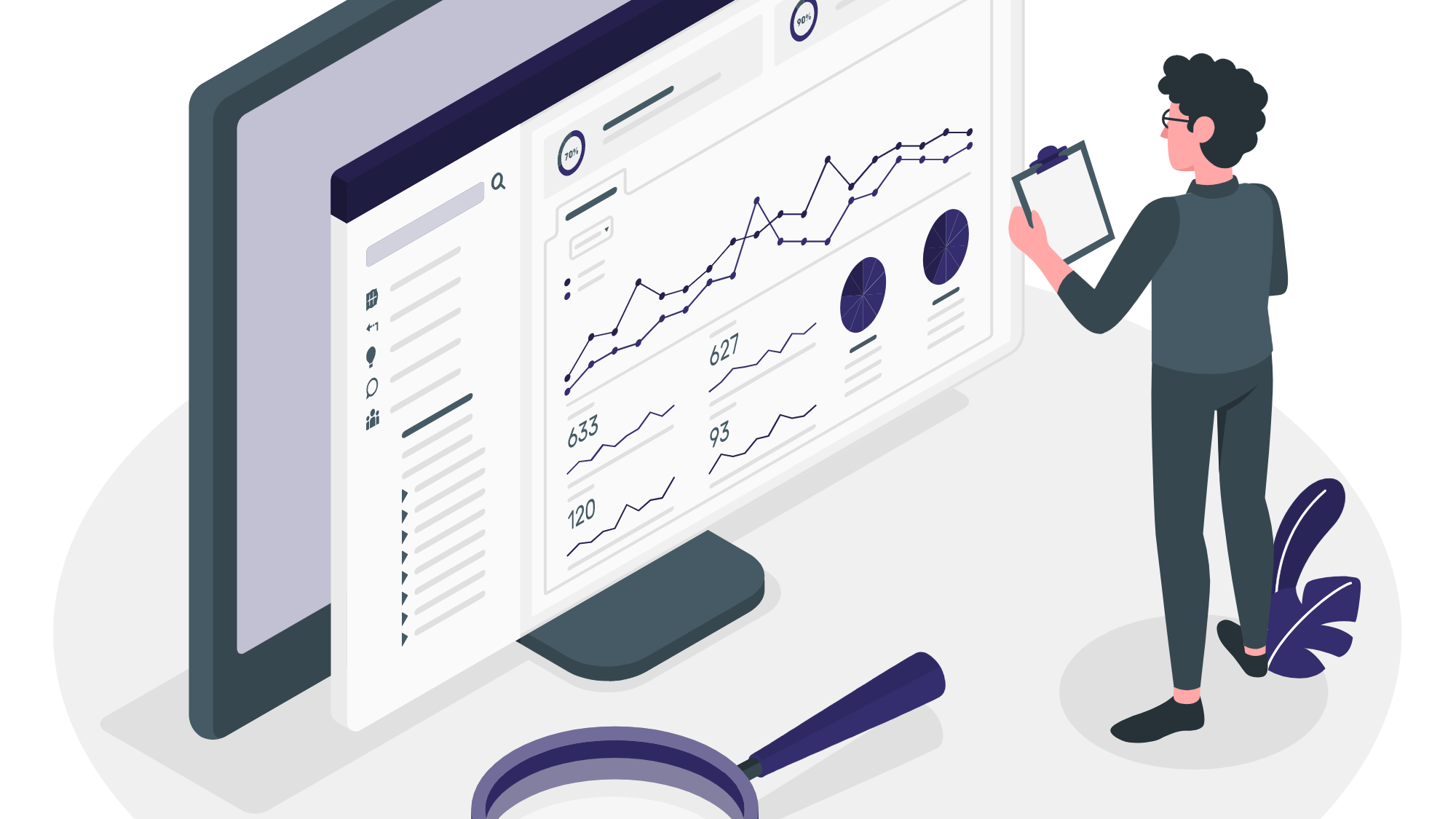
The final step in creating an omnichannel experience with Salesforce is to use Salesforce’s analytics capabilities to gain insights into customer behavior. With Salesforce’s Analytics Cloud feature, you can create reports and dashboards that provide insights into customer behavior, such as which channels are most effective for reaching different customer segments, and which products or services are most popular.
You can also use Salesforce’s Einstein Analytics feature, Salesforce Genie, and integrations with Mulesfoft, which allows you to gain insights into customer behavior using advanced machine learning algorithms. With Einstein Analytics and Genie, you can analyze customer data in real-time to identify patterns and trends and predict future customer behavior.

Examples of a Successful Omnichannel Experience
Many businesses have successfully implemented an omnichannel strategy with Salesforce, and have achieved impressive results. For example, a retail company was able to improve its customer engagement and increase its sales by using Pardot and Marketing cloud automation to personalize its communication. By segmenting their customer base, they were able to create targeted email campaigns and offer personalized discounts to their customers. As a result, the company saw a 20% increase in sales.
Another example is a financial services company that was able to improve its customer retention and reduce its customer churn rate by using Salesforce’s analytics capabilities to gain insights into customer behavior. By analyzing customer data, they were able to identify which customers were at risk of leaving and took proactive steps to retain them. As a result, the company saw a 15% reduction in customer churn.
Very Important
Creating an omnichannel experience with Salesforce is a powerful way to delight customers and drive sales. By tracking and managing customer interactions across all channels in your organization, using marketing automation tools to personalize communication, and using analytics to gain insights into customer behavior, businesses can create a seamless and personalized customer experience that will set them apart from the competition.

It’s important to note that implementing an omnichannel strategy with Salesforce requires a solid plan and consistent execution. Businesses should start by setting clear goals and objectives, and then identify the specific Salesforce features and tools that will help them achieve those goals. It’s also important to involve all relevant stakeholders, such as sales, marketing, and customer service teams, in the planning and implementation process, to ensure that everyone is on the same page and working towards the same goals and above all the right implementation partner.
Conclusion
In conclusion, it’s essential to continuously monitor and measure the performance of your omnichannel strategy to ensure that it’s meeting your goals and objectives. Salesforce’s analytics capabilities allow you to track the performance of your campaigns and customer interactions, and make data-driven decisions to optimize your strategy.
In short, implementing an Omnichannel experience with Salesforce is a comprehensive process that requires a strategic approach, cross-functional collaboration, and consistent optimization. With the right approach, businesses can create a personalized, seamless, and consistent customer experience that will help them stand out in the market and drive sales. To get all this up and running in your organization, connect with me today, and let’s talk.
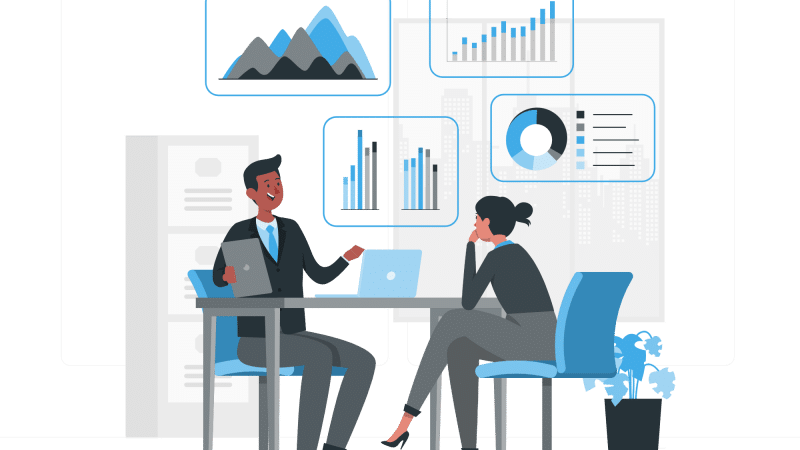
The Difference Between Partner & Customer Portals In Salesforce
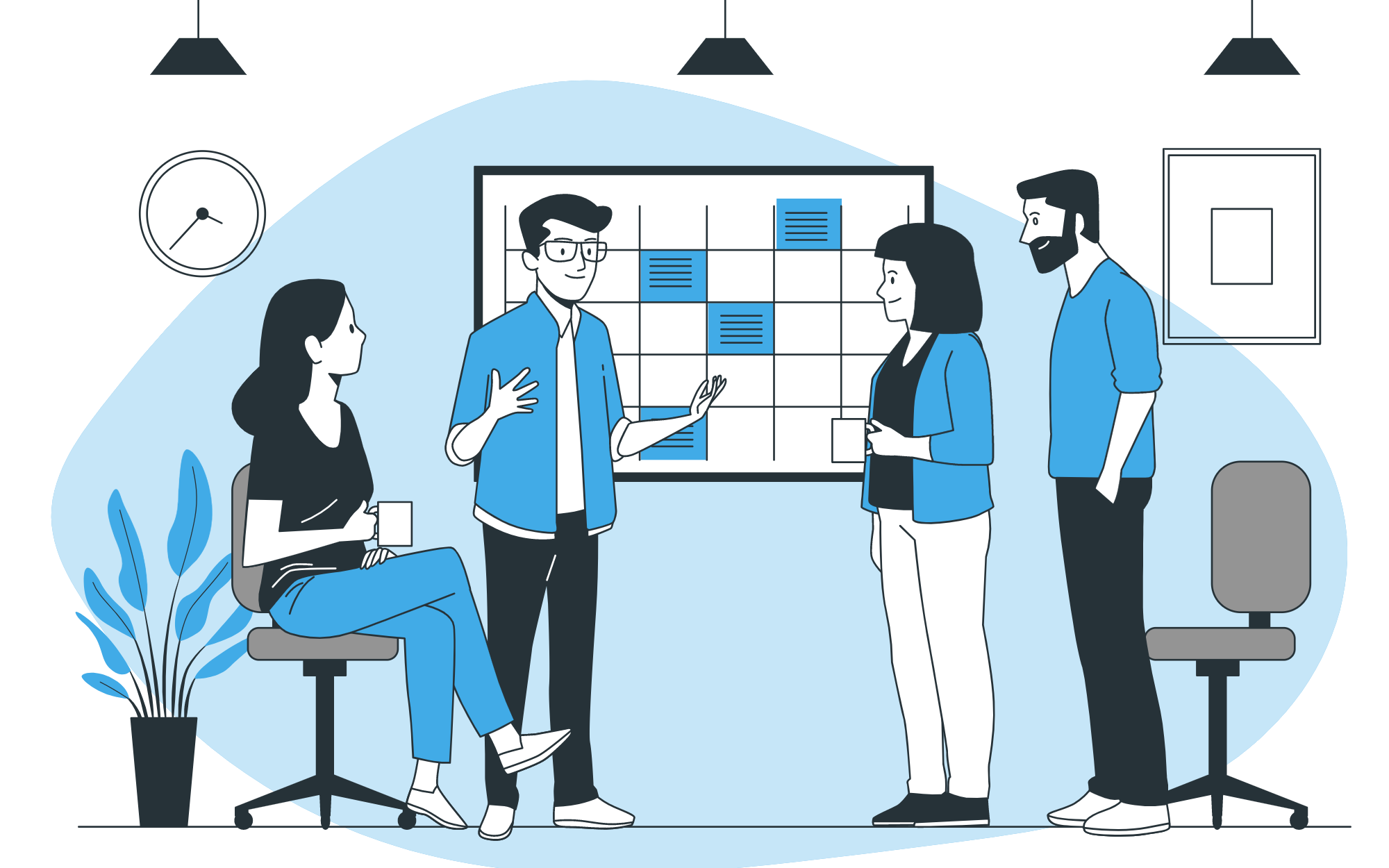
What Is The Difference Between Partner & Customer Portals In Salesforce
As businesses continue to expand and operate on a global scale, it’s increasingly important to have efficient and effective ways to communicate and collaborate with partners and customers. This is where Salesforce partner and customer portals come in. Leveraging Experience Cloud, we are able to build these community portals on your Salesforce instance.
A partner portal is a secure online platform built on your Salesforce instance that allows businesses to collaborate with their partners, such as distributors, resellers, or suppliers. A customer portal, on the other hand, is a secure platform for businesses to communicate and collaborate with their customers. Both partner and customer portals provide numerous benefits to businesses, including improved communication and collaboration, increased customer satisfaction and loyalty and retention, and increased efficiency and productivity.
Key Benefit of Having A Partner Portal In Your Organization
One key benefit of partner portals is that they allow businesses to centralize and streamline their communications with partners. For example, a company that sells its products through a network of distributors can use a partner portal to provide sales and marketing materials, training resources, and other important information to its distributors in one convenient location. This not only saves time and resources but also helps to ensure that partners have the most up-to-date and accurate information.

9 Features To Include On Your Partner Community Portal
1. A dashboard that provides an overview of key metrics and data, such as sales and revenue figures, customer satisfaction ratings, and partner performance.
2. A document library where partners can access sales and marketing materials, product documentation, training materials, and other resources.
3. A knowledge base or FAQ section where partners can find answers to common questions about products, services, and policies.
4. A discussion forum or message board where partners can ask questions, share best practices, and engage with other members of the community.
5. A calendar of events, such as webinars, training sessions, and industry conferences, that partners can attend to learn more about your products and services.
6. A directory of partner contacts and resources, including sales reps, technical support staff, and other key personnel.
7. A resource center that provides access to sales and marketing tools, such as presentation templates, email templates, and social media graphics.
8. A feedback form or survey tool that allows partners to provide feedback and suggestions for improving the community site and your products and services.
9. Integration with other sales and marketing tools, such as CRM and marketing automation platforms, to provide a seamless experience for partners.
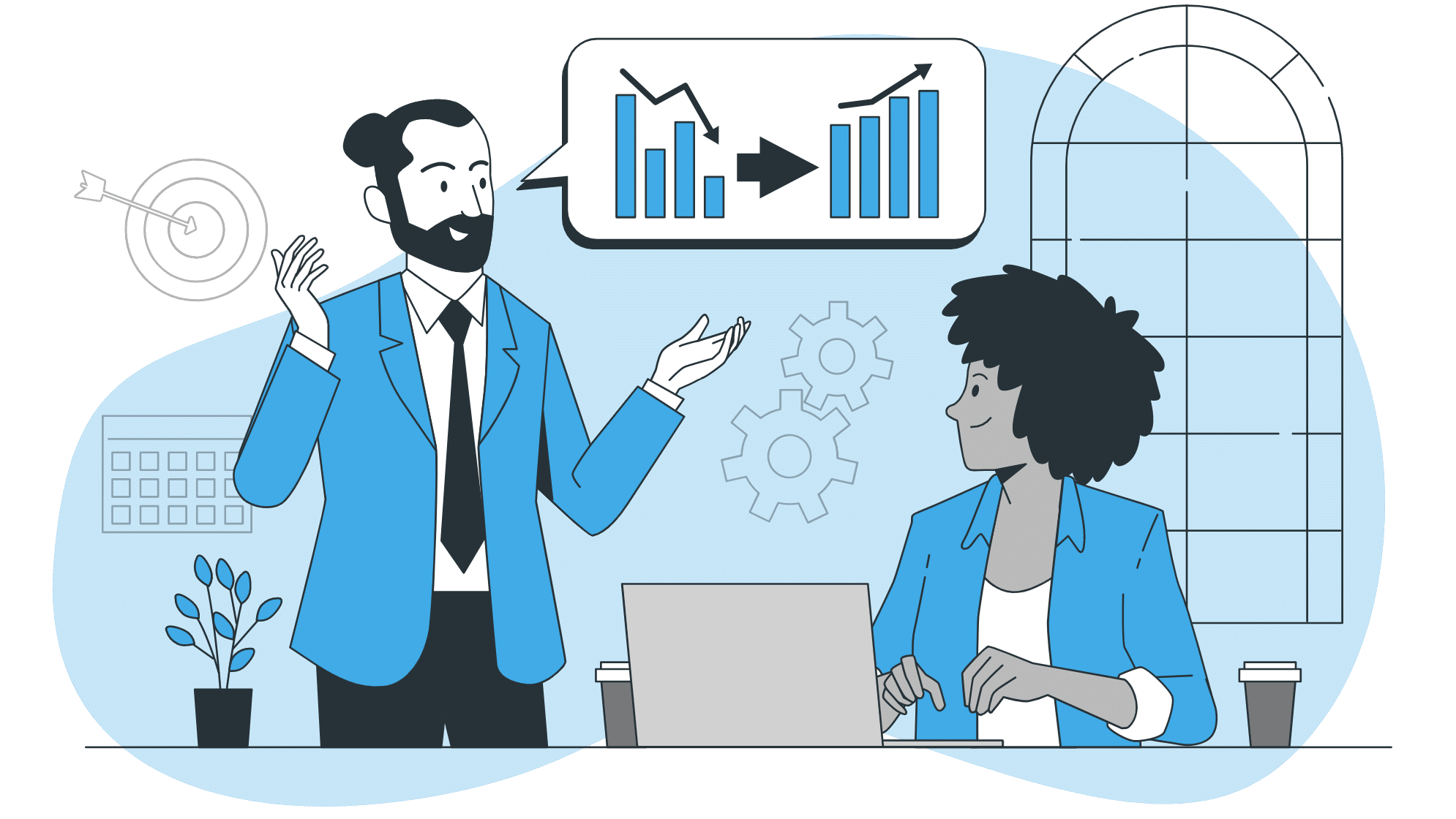
Key Benefit of Having A Customer Portal In Your Organization
Customer portals can also provide numerous benefits to businesses. For example, a customer portal can be used to provide a self-service support center, allowing customers to find answers to common questions and troubleshoot issues on their own. This can help to reduce the workload of customer support teams and improve customer satisfaction. In addition, customer portals can be used to provide customers with access to their account information, order history, and other important data, which can help to improve the customer experience and build customer loyalty.
10 Features To Include On Your Customer Community Portal
1. A self-service center where customers can find answers to common questions, troubleshoot issues, and access product documentation and other resources.
2. A discussion forum or message board where customers can ask questions, share best practices, and engage with other members of the community.
3. A knowledge base or FAQ section where customers can find answers to common questions about products, services, and policies.
4. A case management system that allows customers to submit and track support requests and provides access to customer service representatives and other support staff.
5. A document library where customers can access product documentation, training materials, and other resources.
6. A calendar of events, such as webinars, training sessions, and industry conferences, that customers can attend to learn more about your products and services.
7. Integration with other customer service and support tools, such as help desk software, to provide a seamless experience for customers.
8. A feedback form or survey tool that allows customers to provide feedback and suggestions for improving the customer community and your products and services.
9. Customizable profiles and avatars for community members, to encourage engagement and build a sense of community.
10. A notification system that alerts customers to new content, updates, and other important information.

Concepts to consider when building and designing a partner or customer community portal
When designing a partner or customer portal in Salesforce, there are a few key concepts to consider including:
1. Customization: The portal should be customizable to fit the unique needs and branding of your business. This can include the ability to customize the look and feel of the portal, as well as the ability to add or remove specific features and functionality.
2. Security: The portal should have robust security measures in place to protect sensitive data and ensure compliance with industry regulations. This can include measures such as secure login, data encryption, and access controls.
3. Integration: The portal should be able to integrate with other systems and tools that your business uses, such as CRM or ERP systems. This can help to improve the flow of information and ensure that all relevant data is available in one place.
4. Collaboration: The portal should provide tools and features that enable partners or customers to collaborate, such as document sharing and real-time communication. This can help to improve teamwork and increase productivity.
5. Analytics: The portal should provide analytics and reporting tools that allow businesses to track and analyze key metrics, such as customer satisfaction or partner performance. This can help businesses to identify areas for improvement and make data-driven decisions.
Conclusion
Overall, The difference between a Partner and a Customer portal has been clearly explained above. Salesforce partner and customer portals can provide numerous benefits to businesses, helping to improve communication and collaboration between partners and customers, streamline support and customer service processes, and increase customer satisfaction and loyalty. These portals can also serve as a valuable source of data and insights, providing valuable insights into customer and partner needs, preferences, and behaviors, which can be used to inform business strategy and decision-making.
If you want to implement a Partner or Customer Community portal in your organization don’t hesitate to contact me and I will do a full implementation, maintenance, and support of these portals in your organization.
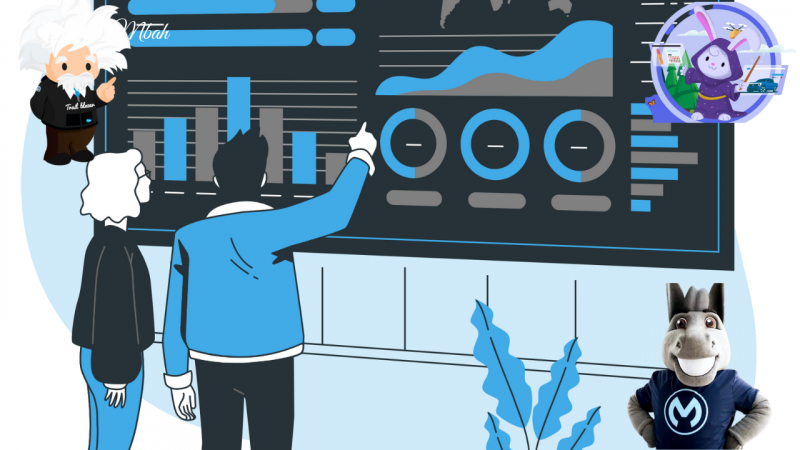
Salesforce Genie + MuleSoft + Einstein Analytics: Customer 360
A Simple Understanding Of These Tools
Salesforce Genie, MuleSoft, and Einstein Analytics are three most powerful tools that can be used together on the Salesforce platform to improve productivity and drive business results. Here’s how they work together to deliver amazing and profitable business outcomes:
MuleSoft
MuleSoft is a platform that helps organizations connect their systems, data, and applications to enable digital transformation. By integrating with Salesforce, MuleSoft allows organizations to connect their Salesforce data with other systems and applications for example, SAP, QuickBooks, DocuSign, Workday, HubSpot, Slack, Zendesk and more, enabling a more seamless and unified experience.
Genie
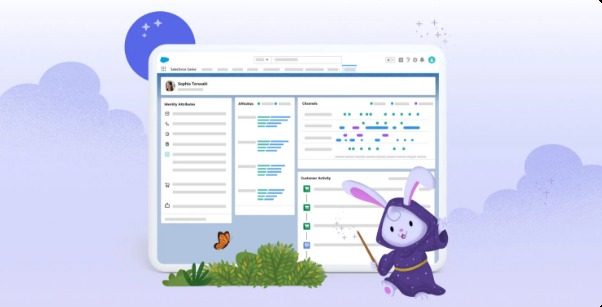
Salesforce Genie is a virtual assistant powered by artificial intelligence that helps users get the most out of their Salesforce experience. With the ability to understand natural language queries and provide instant, personalized answers, Salesforce Genie makes it easy for users to find the information they need and take action within the Salesforce platform. Genie is quite a new product in the market by Salesforce. Here are some business use case were you can see the power of Genie.
Business Use Case 1
Imagine a customer service representative using Salesforce Genie to quickly and easily answer customer inquiries.
With natural language processing capabilities, Genie could understand the customer’s question or issue and provide an immediate response. If the issue requires further action, such as updating a customer record or escalating the issue to a manager, Salesforce Genie could perform these tasks on behalf of the representative. This could help to speed up the resolution process and improve the overall customer experience.
Business Use Case 2
Another advanced business use case for Salesforce Genie could be as a sales support tool. Sales representatives could use Salesforce Genie to quickly access and analyze customer data, such as purchase history or demographics, to help them identify upsell or cross-sell opportunities.
Salesforce Genie could also provide recommendations for personalized product or service offerings based on the customer’s past interactions and needs. With its ability to understand natural language queries, perform tasks, and provide personalized recommendations, Salesforce Genie has the potential to significantly improve efficiency and effectiveness in a variety of business scenarios.
Einstein Analytics
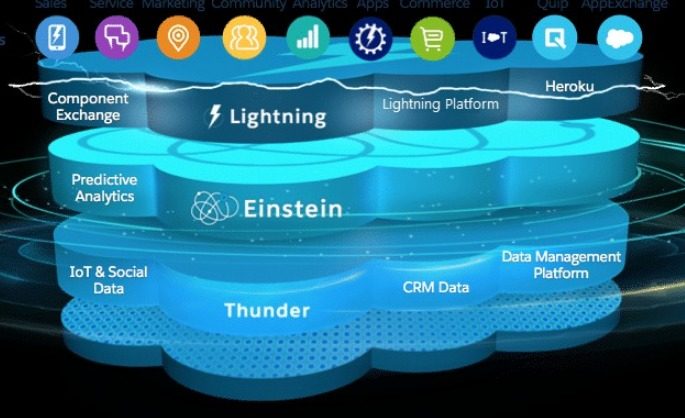
Einstein Analytics is a tool that uses AI to helps organizations visualize and analyze their data to gain insights and drive better business decisions. By integrating with Salesforce, Einstein Analytics allows organizations to analyze their Salesforce data alongside other data sources, providing a comprehensive view of their business.
Conclusion
By working together, these three tools can help organizations get the most out of their Salesforce investment. For example, an organization could use Salesforce Genie to quickly and easily find the information they need, MuleSoft to connect their Salesforce data with other systems and applications, and Einstein Analytics to visualize and analyze the data to drive better business decisions.
Overall, the combination of Salesforce Genie, MuleSoft, and Einstein Analytics provides a powerful set of tools for organizations looking to maximize the value of their Salesforce investment and drive profitable business results.
Let me know your thoughts in the comments and if you find this post useful kindly share on your social networks.

Reusable Custom Calendar LWC Using FullCalendar JS Library
We needed a calendar to show information like event information, opportunity closing deadlines, customer verification deadline dates, etc. We can use Salesforce Calendars to show these data when information is available in Salesforce objects. If we have temporary data to show then we need some components.
We have a few limitations in Salesforce Calendars as well like the maximum number of events on the calendar is 150 and we can not hide weekends from it. See all limits here Considerations for Using Events and Calendars in Lightning Experience.
Let us create Lightning Web Component which is reusable and we can use it inside other lightning components as well as in lightning experiences like Lightning App Builder.
We are going to use the FullCalendar Js library to create a reusable lightning web component. The below steps are required to implement this library in LWC.
- Download and add JS library in Static Resource
- Create reusable LWC
- Test reusable LWC
1. Download and add JS library in Static Resource
The latest build of the FullCalendar JS library is not compatible with LWC. We can use versions 3 and 4 to implement it. I have used v3.10.0 and it is available at FullCalendar
Upload this JS library in Static resource with the name fullcalendarv3. It should be available to the public.
2. Create reusable LWC
Let us create a reusable component that will get records/data from the caller component and Lightning App Builder page. For this, we need public properties which will set data in the calendar component.
We can also raise events to be handled by caller components like event click, event selection, etc. In this component, I have raised eventclicked event which will be handled in the child/caller component. Similarly, you can raise other events as well for the caller component. They can handle that event based on their requirement.
Properties events and eventDataString are created for assigning event data in the calendar. Property events is assigning event data in calendar events. This will be used by the caller component to pass array data. As this property is reactive it will update event data whenever events data are changed in the caller component.
Property eventDataString will be used to pass a string into the calendar. This property will convert the string to a JS array and then assign it to the calendar’s event property. This will be used in the Lightning App Builder page to pass event data in string format.
See block code below to better understand programatically
<template>
<div style="background:#ffffff;" class="slds-grid">
<div id="calendar" class="fullcalendarjs"></div>
</div>
</template>import { LightningElement,api,track } from 'lwc';
import FullCalendarJS from '@salesforce/resourceUrl/fullcalendarv3';
import { loadStyle, loadScript } from 'lightning/platformResourceLoader';
import { ShowToastEvent } from 'lightning/platformShowToastEvent';
export default class Calender extends LightningElement {
jsInitialised = false;
@track _events;
@api
get events() {
return this._events;
}
set events(value) {
this._events=[...value];
}
@api
get eventDataString() {
return this.events;
}
set eventDataString(value) {
try
{
this.events=eval(value);
}
catch{
this.events=[];
}
}
renderedCallback() {
// Performs this operation only on first render
if (this.jsInitialised) {
return;
}
this.jsInitialised = true;
Promise.all([
loadScript(this, FullCalendarJS + '/FullCalenderV3/jquery.min.js'),
loadScript(this, FullCalendarJS + '/FullCalenderV3/moment.min.js'),
loadScript(this, FullCalendarJS + '/FullCalenderV3/fullcalendar.min.js'),
loadStyle(this, FullCalendarJS + '/FullCalenderV3/fullcalendar.min.css')
])
.then(() => {
this.initialiseCalendarJs();
})
.catch(error => {
alert(error);
new ShowToastEvent({
title: 'Error!',
message: error,
variant: 'error'
})
})
}
initialiseCalendarJs() {
var that=this;
const ele = this.template.querySelector('div.fullcalendarjs');
//Use jQuery to instantiate fullcalender JS
$(ele).fullCalendar({
header: {
left: 'prev,next today',
center: 'title',
right: 'month,basicWeek,basicDay'
},
defaultDate: new Date(),
navLinks: true,
editable: true,
eventLimit: true,
events: this.events,
dragScroll:true,
droppable:true,
weekNumbers:true,
selectable:true,
//eventClick: this.eventClick,
eventClick: function (info) {
const selectedEvent = new CustomEvent('eventclicked', { detail: info.Id });
// Dispatches the event.
that.dispatchEvent(selectedEvent);
}
});
}
}<?xml version="1.0" encoding="UTF-8"?>
<LightningComponentBundle xmlns="http://soap.sforce.com/2006/04/metadata">
<apiVersion>55.0</apiVersion>
<isExposed>true</isExposed>
<masterLabel>Generic Calender</masterLabel>
<targets>
<target>lightningCommunity__Page</target>
<target>lightningCommunity__Default</target>
<target>lightning__RecordPage</target>
<target>lightning__AppPage</target>
<target>lightning__HomePage</target>
<target>lightning__Tab</target>
</targets>
<targetConfigs>
<targetConfig targets="lightning__AppPage, lightning__HomePage, lightning__RecordPage">
<property name="eventDataString" type="String" />
</targetConfig>
</targetConfigs>
</LightningComponentBundle>targetConfig is required to pass data from the lightning app builder so create it in the meta.xml file.
3. Test reusable LWC
As we have built our reusable LWC component, let us consume this component. As mentioned, We can consume this component from another component as well as the lightning app builder page.
1. Test by using it in another LWC
Let us consume created calendar component in another component which is showing event records. Based on our requirement we can retrieve data from any object and show it on the calendar.
LWC Code
<template>
<c-calender events={events} oneventclicked={handleEvent}></c-calender>
<!-- Open a modal with event data -->
<template if:true={openModal}>
<div data-modal="custom-modal" class="modalclass">
<section
role="dialog"
tabindex="-1"
aria-labelledby="modal-heading-01"
aria-modal="true"
aria-describedby="modal-content-id-1"
class="slds-modal slds-fade-in-open">
<div class="slds-modal__container">
<header class="slds-modal__header">
<lightning-button-icon icon-name="utility:close"
class="slds-modal__close "
alternative-text="Close"
title="Close"
size="large"
variant="bare-inverse"
onclick={handleCancel} >
</lightning-button-icon>
</header>
<div class="slds-modal__content slds-p-around_medium"
id="modal-content-id-1">
<lightning-input label="Title" name="title" type="text" required value={title} onkeyup={handleKeyup}></lightning-input>
<lightning-input label="Start Date" name="start" type="datetime" required value={startDate}></lightning-input>
<lightning-input label="End Date" name="end" type="datetime" required value={endDate}></lightning-input>
</div>
<footer class="slds-modal__footer">
<lightning-button-group>
<lightning-button label="Close" title="Close" icon-name="utility:close" onclick={handleCancel}></lightning-button>
</lightning-button-group>
</footer>
</div>
</section>
<div class="slds-backdrop slds-backdrop_open"></div>
</div>
</template>
</template>import { LightningElement,track,wire } from 'lwc';
import getEvents from '@salesforce/apex/EventController.getEvents';
export default class CalenderTest extends LightningElement {
@track startDate=new Date();
@track endDate;
error;
openModal = false;
@track events=[];
@wire(getEvents)
eventObj(value){
const {data, error} = value;
if(data){
//format as fullcalendar event object
let records = data.map(event => {
return { Id : event.Id,
title : event.Subject,
start : event.StartDateTime,
end : event.EndDateTime,
allDay : event.IsAllDayEvent};
});
this.events = JSON.parse(JSON.stringify(records));
this.error = undefined;
}else if(error){
this.events = [];
this.error = 'No events are found';
}
}
handleEvent(event) {
var id=event.detail;
let task = this.events.find(x=>x.Id=id);
this.startDate=task.start;
this.title=task.title;
this.endDate=task.end;
this.openModal = true;
}
handleCancel(event) {
this.openModal = false;
}
}<?xml version="1.0" encoding="UTF-8"?>
<LightningComponentBundle xmlns="http://soap.sforce.com/2006/04/metadata">
<apiVersion>55.0</apiVersion>
<isExposed>true</isExposed>
<masterLabel>Calender Test</masterLabel>
<targets>
<target>lightningCommunity__Page</target>
<target>lightningCommunity__Default</target>
<target>lightning__RecordPage</target>
<target>lightning__AppPage</target>
<target>lightning__HomePage</target>
<target>lightning__Tab</target>
</targets>
</LightningComponentBundle>Apex Code
public class EventController {
@AuraEnabled(cacheable=true)
public static List<Event> getEvents() {
return [SELECT Id, Subject, StartDateTime, IsAllDayEvent, EndDateTime
FROM Event
ORDER BY CreatedDate DESC
LIMIT 100];
}
}I am getting event data using LWC apex, these data can be taken from any object. After retrieving apex data create a JS array in the format of FullCalendar event data.

2. Test by using it on Lightning App Builder Page
We can add the above-created generic component to the lightning app builder age and put calendar events as string. This will render event detail on the component. This will be useful when you have fixed events for any work. Below is a sample JSON string.
[
{
title: 'Front-End Conference',
start: '2022-09-16',
end: '2022-09-18'
},
{
title: 'Hair stylist with Mikes',
start: '2022-09-20',
allDay: true
},
{
title: 'Car mechanic',
start: '2022-09-14T09:00:00',
end: '2022-09-14T11:00:00'
},
{
title: 'Dinner with Garav',
start: '2022-09-21T19:00:00',
end: '2022-09-21T22:00:00'
},
{
title: 'Chillout',
start: '2022-09-15',
allDay: true
}
]Add this JSON string into the eventStringData property to show events as a calendar.
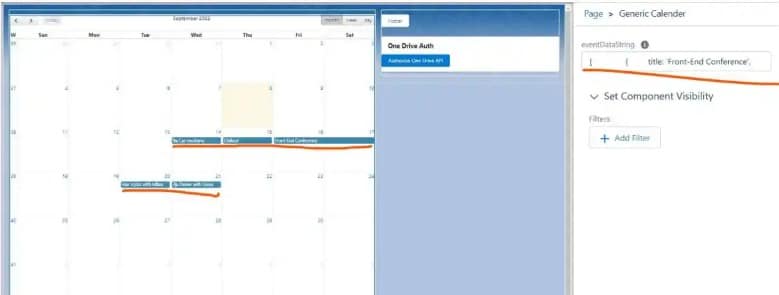
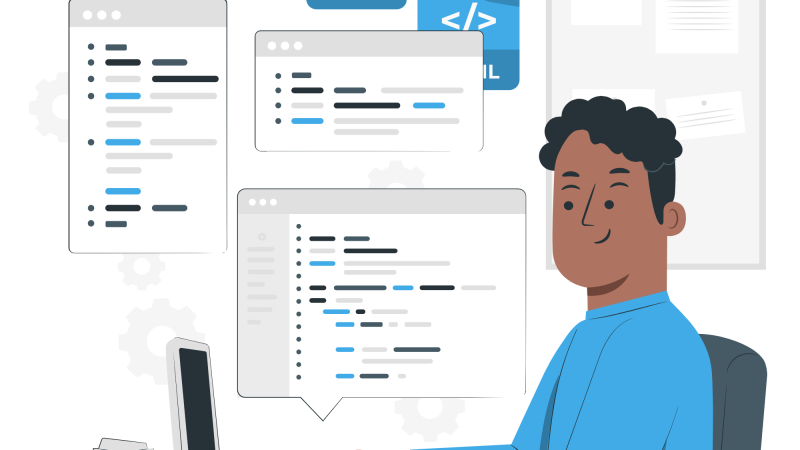
When To Avoid Batch Apex And Use Queueable Apex In Salesforce
Salesforce has four asynchronous apex ( Queueable Apex, Scheduled Apex, Batch Apex, Future Methods) to run code asynchronously to handle different need of business application. These apex is used for syncing data in two systems, handling longer jobs which will hit Salesforce Governor limits. This asynchronous apex can be used in different use case. This post is to explain where to avoid batch apex and use Queueable Class instead. Although there are lot of use cases where batch job is sufficient to handle processing.
This post will explain how to handle callout issue You have uncommitted work pending. Please commit or rollback before calling out
Use Case To Solve:
We have around 30K+ account records of health care providers, we need to validate address of all records using address API (any API like SmartyStreet, Google Places, ZipCode ). After API call we need to update record with outcome of API call like address validation is successful or failed in ValidationStatus field. ValidationStatus is custom field in account object. All health care data are stored in account object.
Solution:
To solve this use case we can use batch apex which will handle 200 records (100 in case of callout in batch) in a single batch and batch job will be created for all records. As it will run in batch, we have to put some condition in batch SOQL so that it will not process same record again and again. So we can use query like
Select id, ValidationStatus__c from Account where ValidationStatus__c=falseThis will only process record which is pending but there is another problem with this approach. As validation is not successful due to some reason that record will be pending and same records will be fetched in each job for process. This issue we can handle using adding another filter last modified date in SOQL
SOQL in Asynchronous Apex gives us the advantage of higher governor limits
Select id, ValidationStatus__c from Account where ValidationStatus__c=false and LastModifiedDate<>TODAYUsing this batch it will solve issue of not processing same record again and again. We will face another problem after that is , if we want to re-process pending record or error records after correction, it will not re-process those record on same day.
So what will be efficient solution for our use case. Can we use another asynchronous apex as we have lot of records to process? Yes, we have to use another asynchronous apex Queueable to handle this. We can query all pending records in one parent queueable class and then process records in another queueable class which will support callout. We will run chain of Queueable child class to process 100 records at once. Once 100 records are processed, start another queueable child job. This way we can call external system and make list of records to update before we start another job. This way we can avoid uncommitted work pending issue also.
Uncommitted work pending issue throws when we are calling external system and then updating response in object, when system start processing next record, previous records is still pending for commit so we get that error. This issue will be address by below approach
- We will call external callout for reach record one by one
- We will not update records immediately, instead we will add all records in collection
- Once 99 records are processed, we will start new queueable job for processing another set of 99 records
- Before we start new batch, we will update all records for status update.
Above approach will handle issue uncommitted work pending for commit issue.
Let us see code for this solution
public class AddressValidationQueueableRunner implements Queueable, Database.AllowsCallouts{
public void execute(QueueableContext context) {
integer counter=0;
try
{
Map<Id,Account> recordMap=new Map<id,Account>([SELECT ID,ShippingStreet,ShippingCity,ShippingState,ShippingPostalCode,ValidationStatus__c from
Account Where ShippingStreet!=null and ValidationStatus__c = false]);
system.debug('record to process...'+recordMap.size());
if(recordMap !=null && recordMap.size()>0){
AddressValidationQueueable esync = new AddressValidationQueueable(recordMap);
System.enqueueJob(esync);
}
}
catch(Exception ex)
{
ApplicationException.logException(ex);
}
}
}Above queueable apex code is getting all records which need to process and passing all records to another child queueable class. As we are passing all records to child queueable class we don’t require to run this class multiple time. So if any error occurs for any records and we want to re-process those records, we can run this class once again after record correction.
Let us see code for child queueable class which will process each record and also handle uncommitted code pending issue.
public class AddressValidationQueueable implements Queueable, Database.AllowsCallouts{
public Integer MAX_RECORD = 99;
public Integer processingCount = 0;
Map<Id,Account> accounts;
List<Account> accts;
public AddressValidationQueueable(Map<Id,Account> acts)
{
accounts=acts;
}
public void execute(QueueableContext context) {
integer counter=0;
boolean startNewQueue=false;
try
{
accts=new List<Account>();
for(ID index:accounts.keySet())
{
Account act=accounts.get(index);
if(!startNewQueue)
{
if(act!=null)
{
try
{
accts.add(AddressVerification.processRecord(act));
}
catch(Exception ex)
{
system.debug('ex:'+ex.getMessage());
ApplicationException.LogException(ex);
}
counter=counter+1;
accounts.remove(index);
}
system.debug('accts:'+ counter);
if(counter>MAX_RECORD)
{
startNewQueue=true;
break;
}
}
}
if(startNewQueue)
{
processTargets(accts);
AddressValidationQueueable esync = new AddressValidationQueueable(accounts);
counter=0;
System.enqueueJob(esync);
}
}
catch(Exception ex)
{
ApplicationException.LogException(ex);
}
}
public void processTargets(List<Account> accounts){
if(accounts!=null && !accounts.isEmpty())
{
update accounts;
}
}
}public class AddressVerification{
public static string NAMED_CREDENTIAL ='SmartyStreet';
public static Account processRecord(Account act)
{
APIConfiguration__mdt mdt = APIConfiguration__mdt.getInstance('SmartyStreet');
Map<String, String> ncParams;
if(string.isNotBlank(act.ShippingCity) && string.isNotBlank(act.ShippingState))
{
ncParams=new Map<String, String> {
'auth-id' => mdt.UserName__c,
'auth-token' => mdt.Password__c,
'street' => act.ShippingStreet,
'city' => act.ShippingCity,
'state' => act.ShippingState,
'zipCode' => act.ShippingPostalCode,
'candidates' => '10'
};
}
else if(string.isNotBlank(act.ShippingPostalCode))
{
ncParams=new Map<String, String> {
'auth-id' => mdt.UserName__c,
'auth-token' => mdt.Password__c,
'street' => act.ShippingStreet,
'zipcode' => act.ShippingPostalCode,
'candidates' => '10'
};
}
else
{
ncParams=new Map<String, String> {
'auth-id' => mdt.UserName__c,
'auth-token' => mdt.Password__c,
'street' => act.ShippingStreet,
'candidates' => '10'
};
}
system.debug('Auth:' + ExternalCallout.AUTH_TYPE.NAMED_CREDENTIAL);
Map<String, String> headers=new Map<String, String> {'Content-Type' => 'application/xml'};
HttpResponse response=new ExternalCallout().get('SmartyStreet', ncParams,headers);
system.debug('response:'+response.getBody());
if(response!=null)
{
act.ValidationStatus__c=true;
}
return act;
}
}AddressVerification class do external callout to Smarty Street address API. External callout code is available in another blog Generic Apex class for Calling External System. To store API detail, I have used named credential SmartyStreet which will store API url https://us-street.api.smartystreets.com/street-address , username and password.
AddressValidationQueueable is child queueable class which will call AddressVerification class for each record and add those accounts in list. Once set of 99 records are processed, we will update those records and start new child queueable class to process next set of 99 records. We are also removing that record from list so that it will not process again.

Pass lightning-input field Value from a Button Click to LWC Controller
Big Idea or Enduring Question
How to pass lightning-input field value as a parameter to controller class method in Lightning Web Component?
Objectives:
After reading this blog, you’ll be able to:
- Understand what is lightning-input field and how to work with them
- Understand when to use querySelector vs querySelectorAll to access element
- Use custom data attribute to query or set the lwc component
- Pass lightning-input field value to lightning web component (lwc) controller
Business Use case
Godwin Mbah is working as a Developer at Salesforce innovate LLC. he just started learning the lightning web component and wondering if someone could help him understand how to build the following screen and pass email and mobile field values to the lwc JavaScript controller on a button (Next) click.
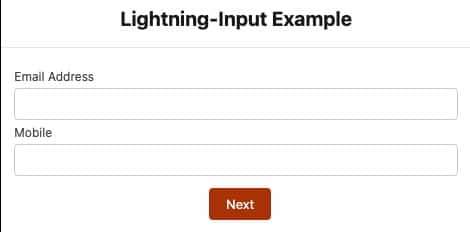
What is a lightning-input component?
The lightning-input component is used to create interactive forms in order to accept data from the user; a wide variety of types of input types and attributes are available, depending on the use cases. The lightning-input element is one of the most powerful and complex in all LWC components due to the sheer number of combinations of input types and attributes.
This component supports the following input types:
- checkbox
- checkbox-button
- date
- datetime
- time
- file
- password
- search
- tel
- url
- number
- text (default)
- toggle
Data attributes in Lightning Web Components
While working with a lightning web component, sometimes, we want to pass components’ values to JavaScript on a button click. You can do this in many ways, and data attribute is one of them.
For example, we are showing a form with few input fields. We want to pass entered values to the component JavaScript file on the button click. To achieve this, create the custom attributes by appending any string to data- and providing the information to it, like data-name, data-element, data-title, etc. Remember, you can only be able to enter string values to the data attributes.
<lightning-input
type="email"
data-element="user-input-email"
label="Email Address">
</lightning-input>Using querySelector and querySelectorAll
The querySelector() and querySelectorAll() are DOM APIs available on modern web browsers. They are used to query DOM elements that match a specified selector.
The difference between these two is that querySelector() returns a single element matching its selection criteria. querySelectorAll(), on the other hand, returns all elements matching the search criteria in an iterable list.
Syntax
this.template.querySelector('p'); // Selects first paragraph element in document
this.template.querySelectorAll('p'); // Selects all paragraph elements in document
this.template.querySelectorAll('[target]'); //Get all elements that contain the attribute targetSo Here is How I will approach this:
Now you have a basic understanding of all ingredients we need to build the lightning web component for the given business requirement. Let’s get started.
lightningInputExample.js-meta.xml
A lightning web component can be used to build custom pages for Lightning Experience and the Salesforce mobile app quickly with point-and-click tools. Make sure to add the right target for it.
This configuration file makes the component available for all Lightning page types but restricts support on desktops.
<?xml version="1.0" encoding="UTF-8"?>
<LightningComponentBundle xmlns="http://soap.sforce.com/2006/04/metadata">
<apiVersion>54.0</apiVersion>
<isExposed>true</isExposed>
<targets>
<target>lightning__RecordPage</target>
<target>lightning__AppPage</target>
<target>lightning__HomePage</target>
</targets>
</LightningComponentBundle>lightningInputExample.html
Every UI component must have an HTML file with the root tag <template>. The template contains two lightning-input tags that create input for email and mobile. The template includes one lightning-button (Next) with the onclick method handleNext.
It is possible to use data-element attributes in the lightning-input component to pass email and mobile details to javascript for further logic. But we will use onchange event and store the values in variables in LWC controller.
When a user clicks on the Next button, it will call a JavaScript method handleNext() which will usevariablesto get the email and mobile field values.
<!-- lighntingInputExample.html -->
<template>
<form>
<div
class="slds-p-top_small slds-p-bottom_medium slds-align_absolute-center slds-theme_default slds-text-heading_medium">
<b>Lightning-Input Example</b></div>
<div class="slds-box slds-theme_default">
<lightning-input
type="email"
label="Email Address"
value={emailvalue}
onchange={handleEmailChange}>
</lightning-input>
<lightning-input
type="tel"
name="mobile"
label="Mobile"
value={mobilevalue}
onchange={handleMobileChange}>
</lightning-input>
<div class="slds-m-top_small slds-align_absolute-center">
<lightning-button
variant="Neutral"
label="Cancel"
class="slds-m-left_x-small"
onclick={handleCancel}>
</lightning-button>
<lightning-button
variant="brand"
class="slds-m-left_x-small"
label="Next"
onclick={handleNext}>
</lightning-button>
</div>
</div>
</form>
</template>lightningInputExample.js
Use variables from LWC controller to get the email and Mobile values. The alert will display the value of email and mobile when clicking on the Next button.
import { LightningElement } from 'lwc';
export default class InputExample extends LightningElement() {
emailvalue ="username@example.com";
mobilevalue= "000-000-0000";
handleEmailChange(event){
this.emailvalue = event.target.value;
}
handleMobileChange(event){
this.mobilevalue = event.target.value;
}
handleNext() {
alert('email '+ this.emailvalue);
alert('Mobile '+ this.mobilevalue);
}
}Proof of Concept
